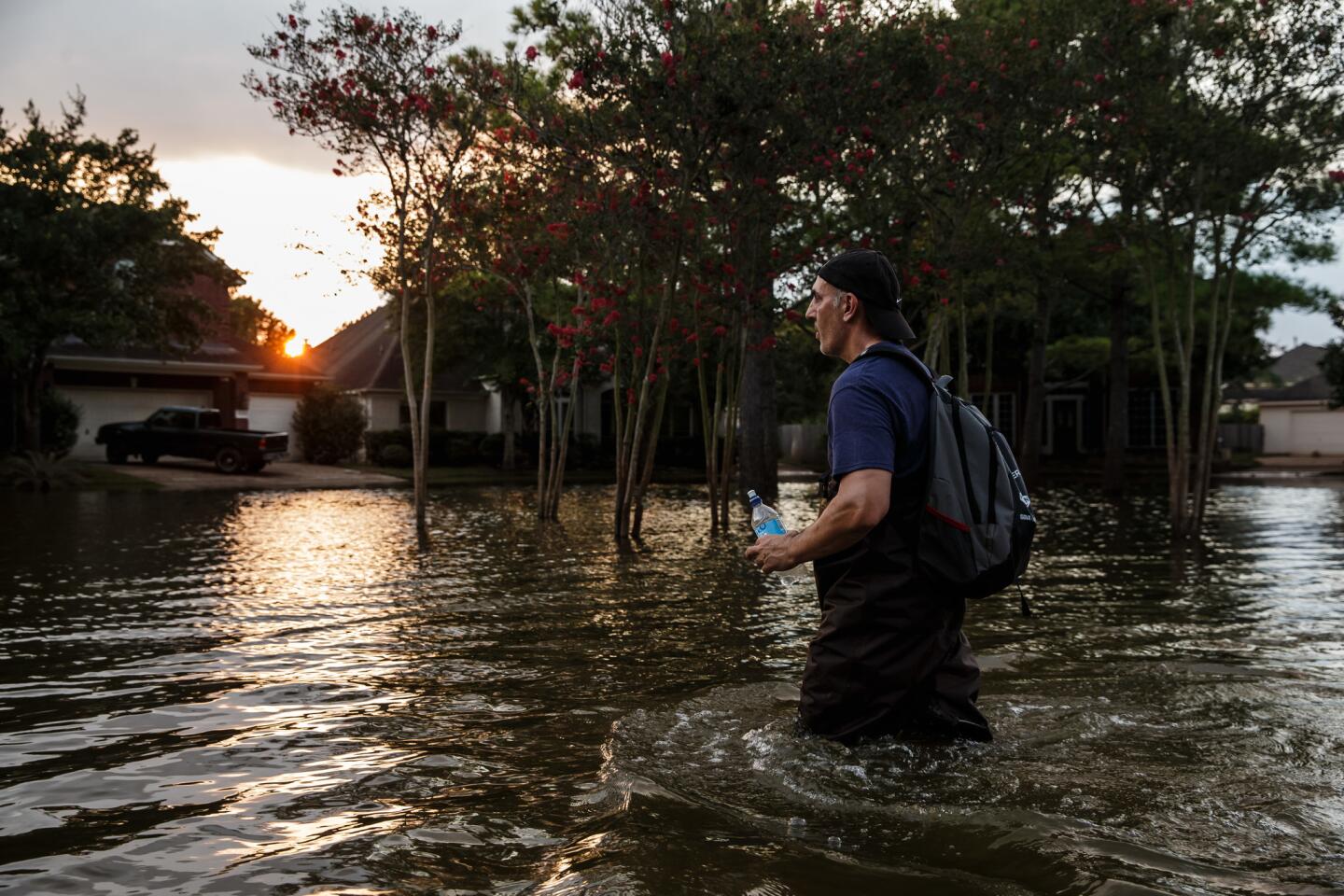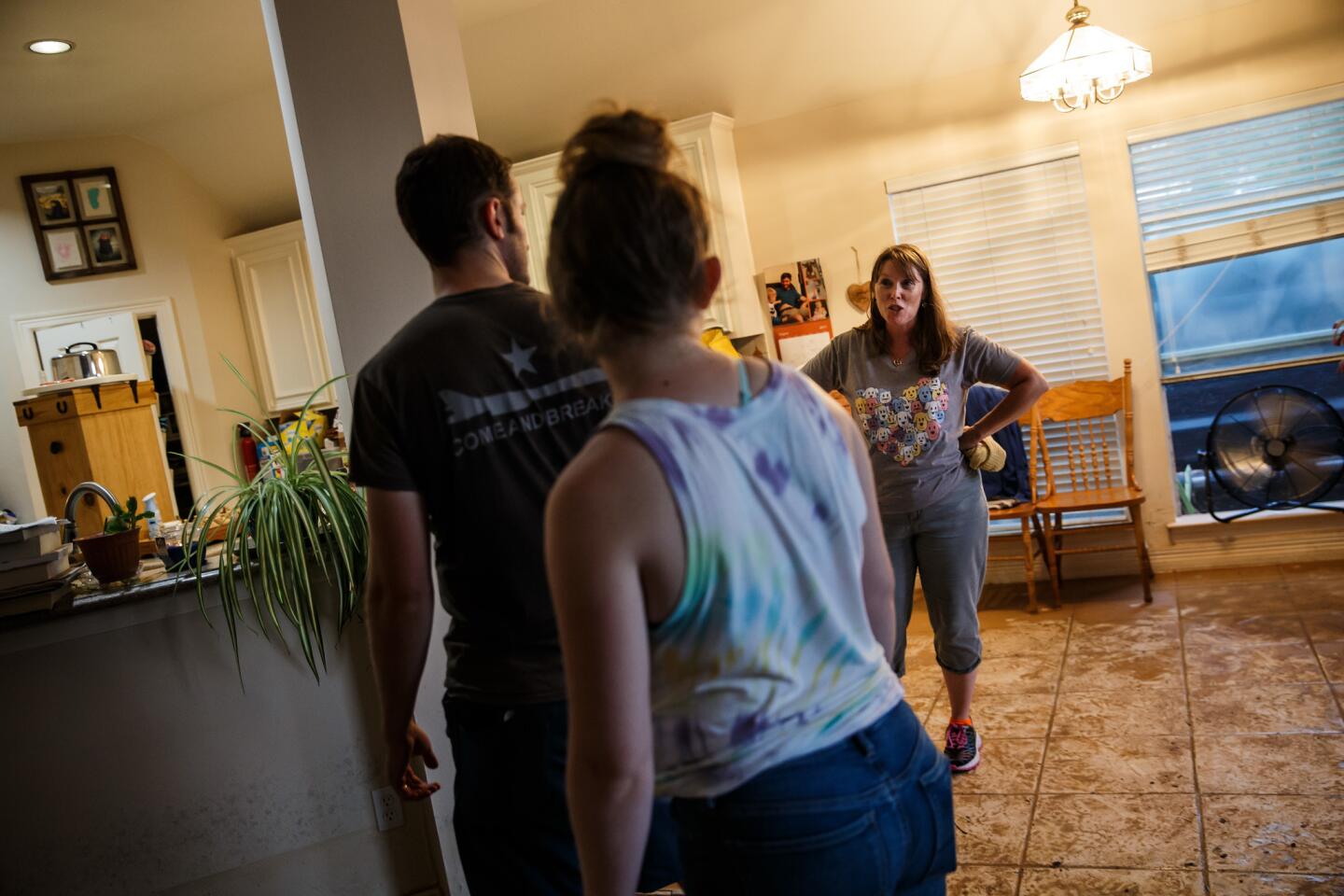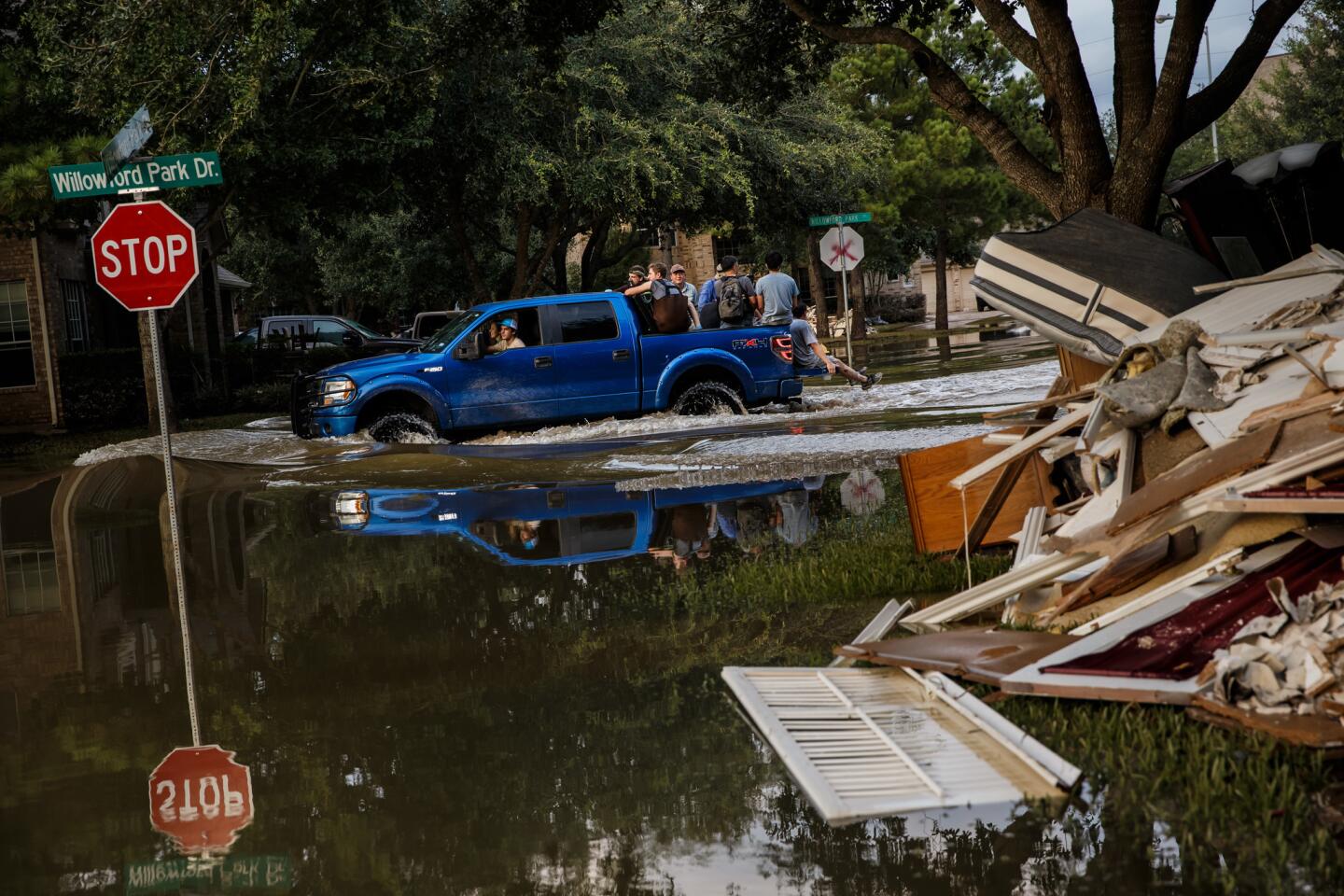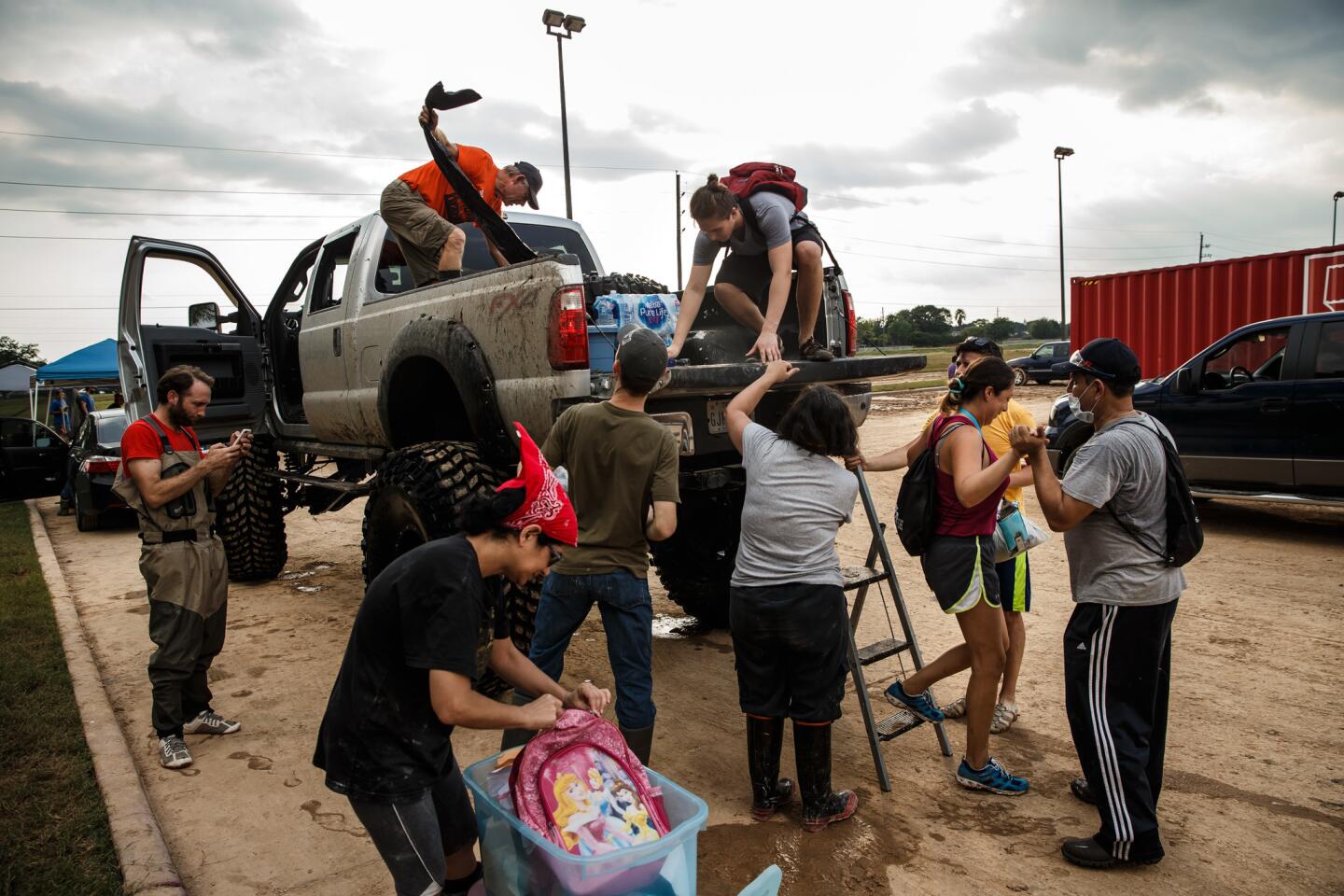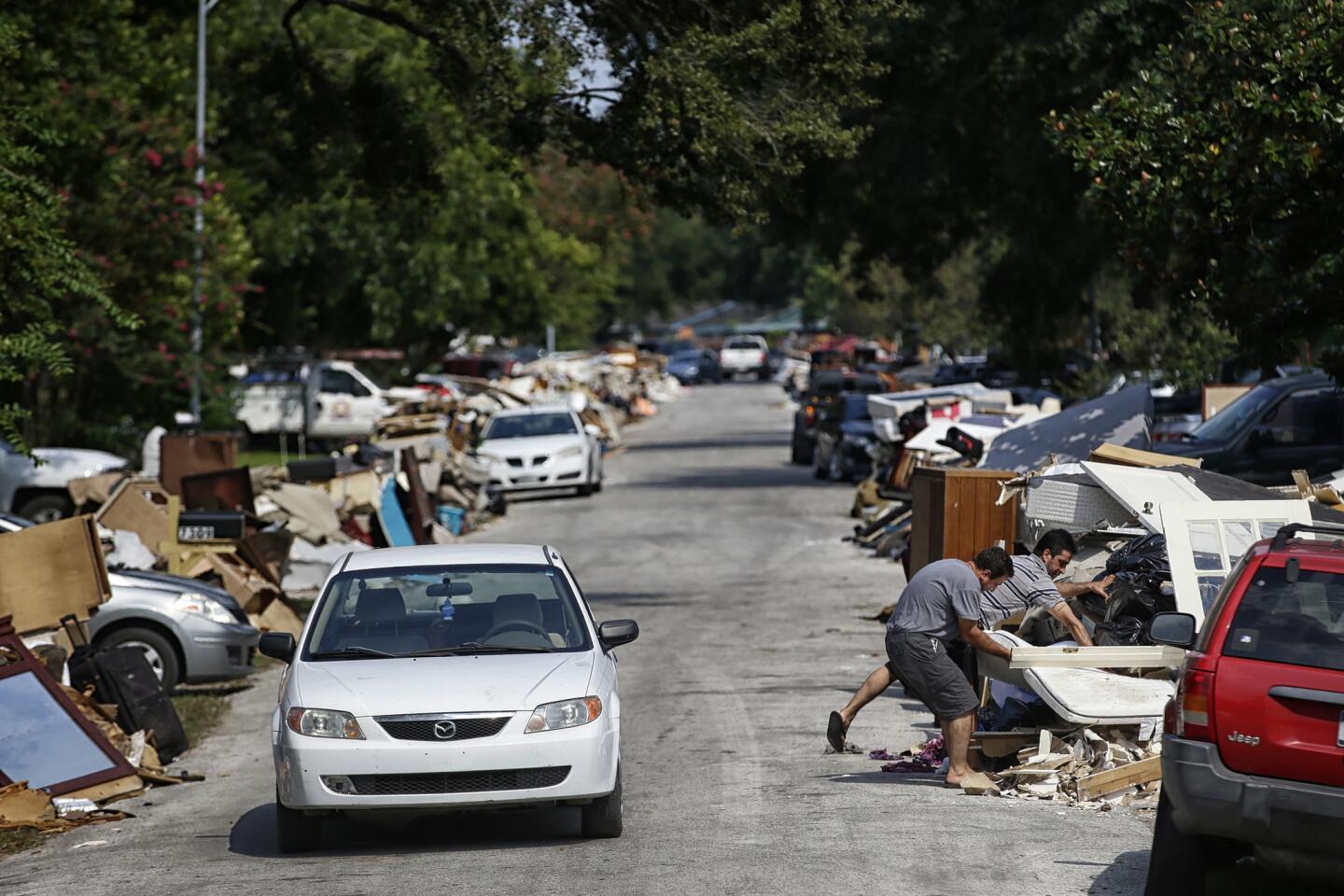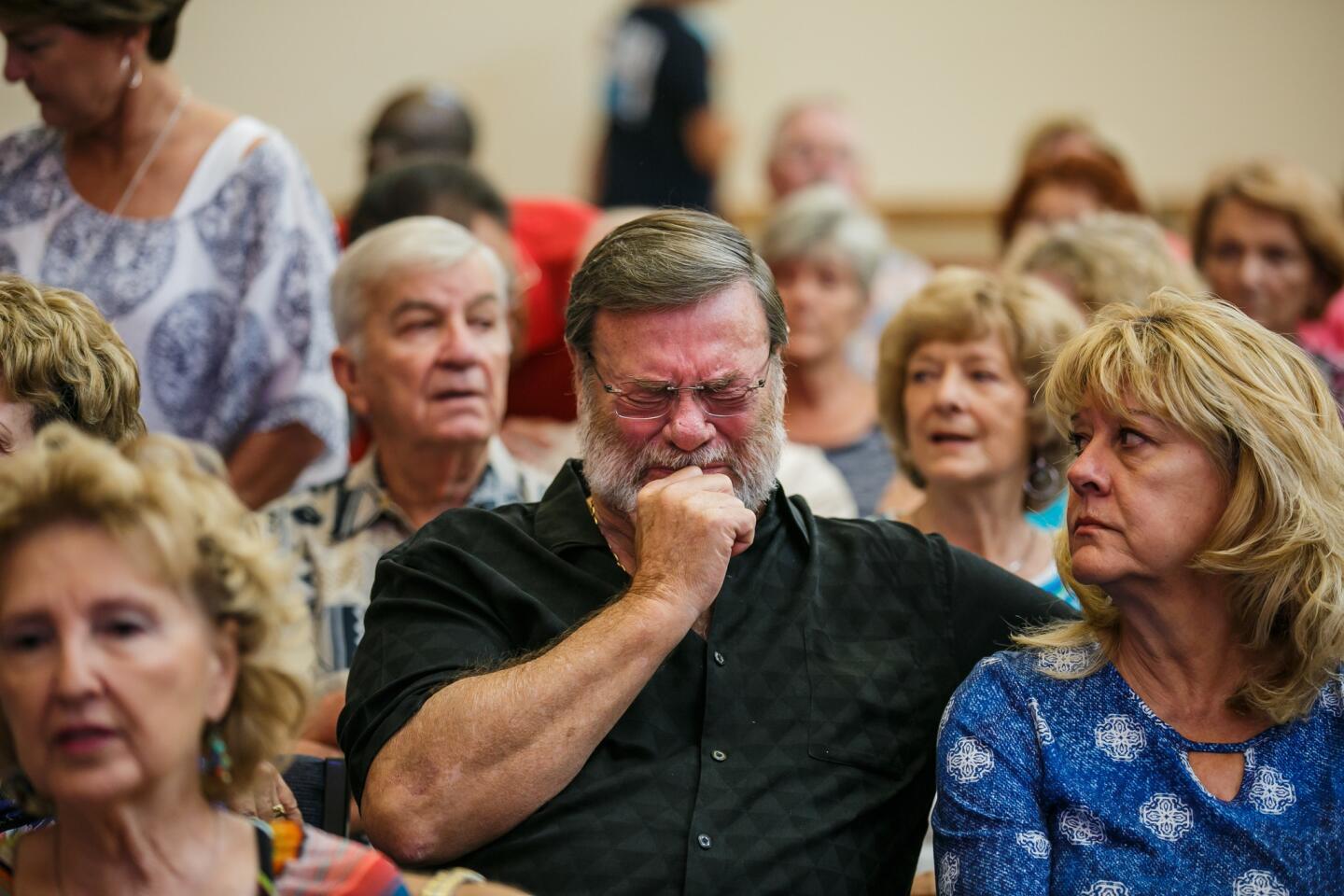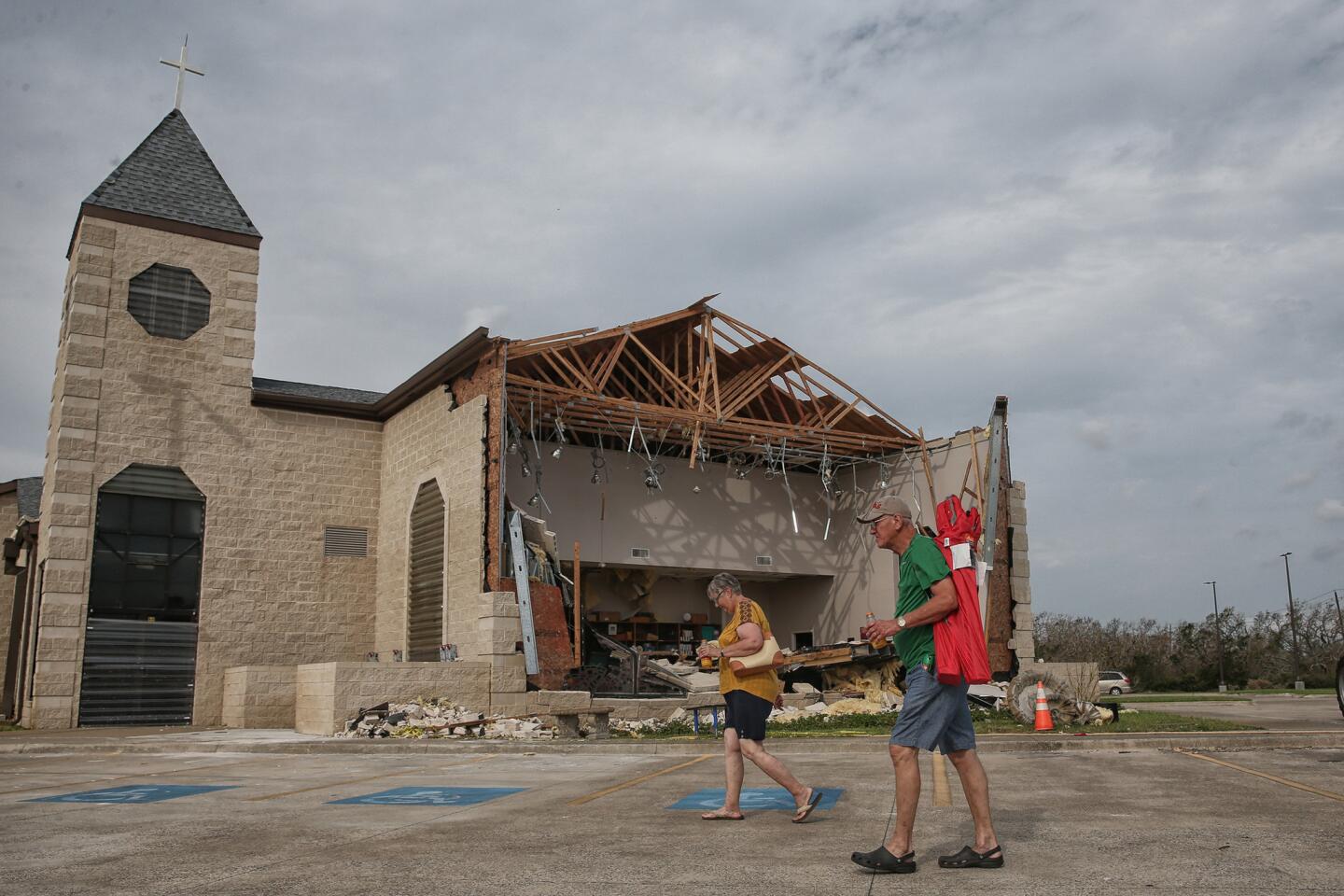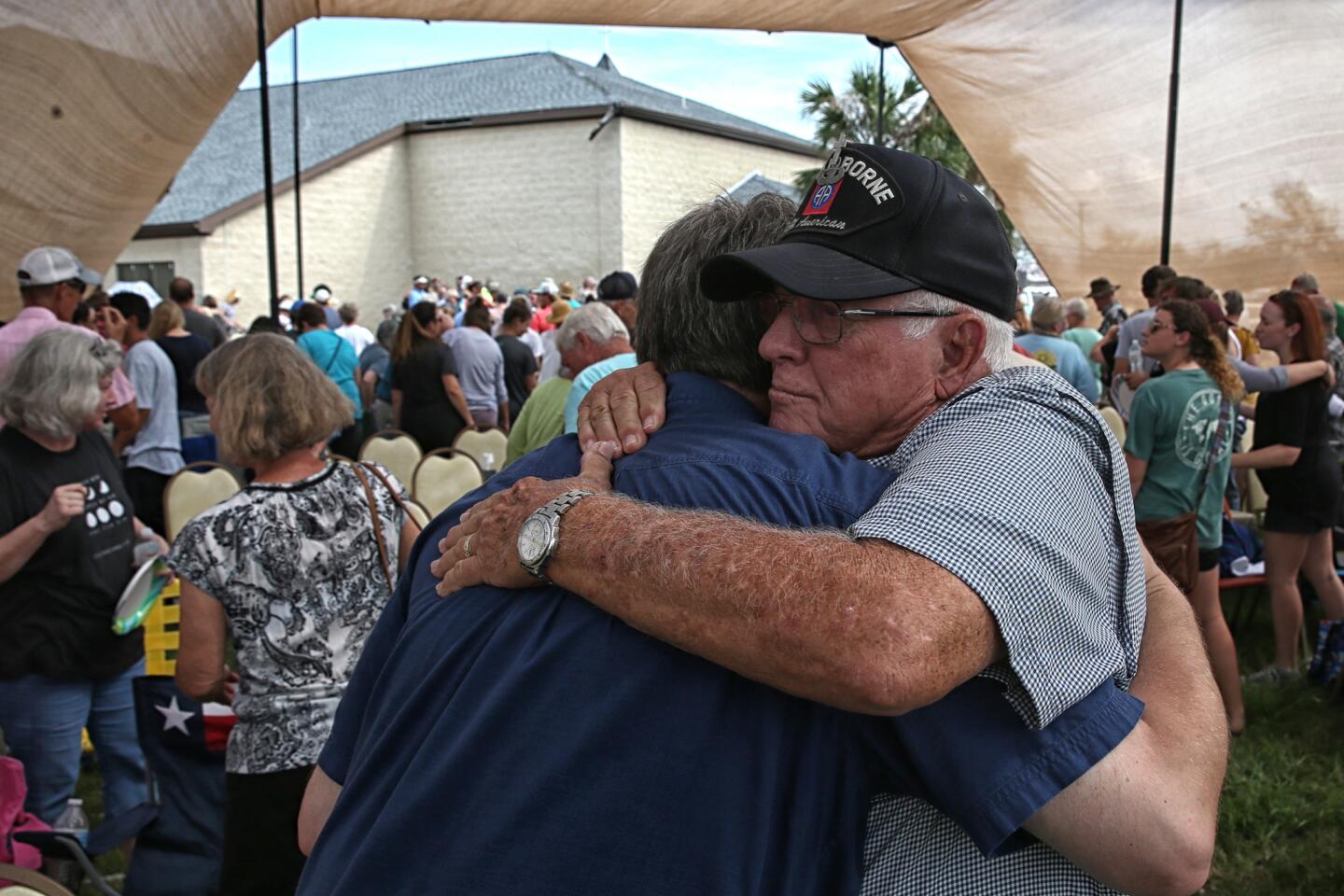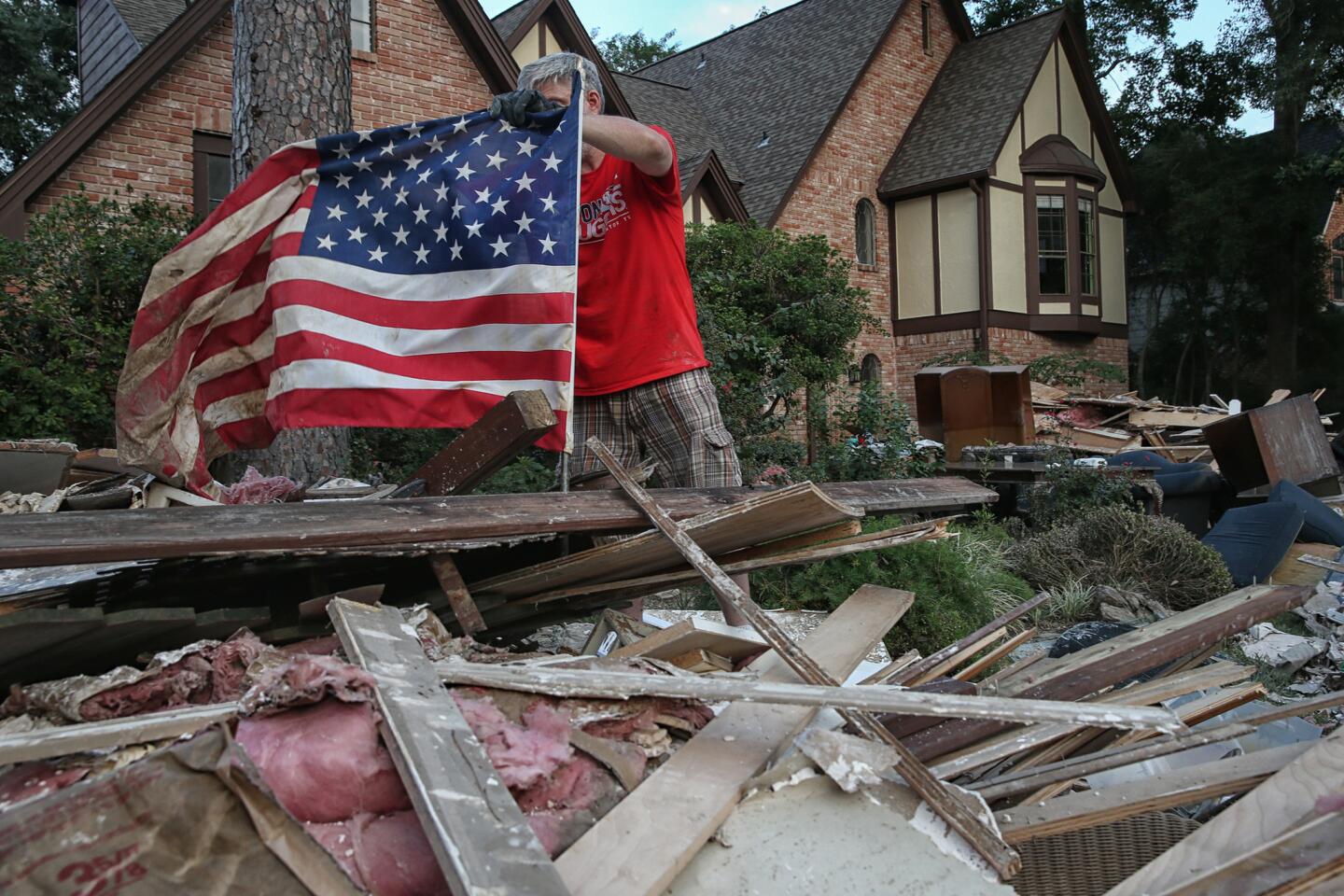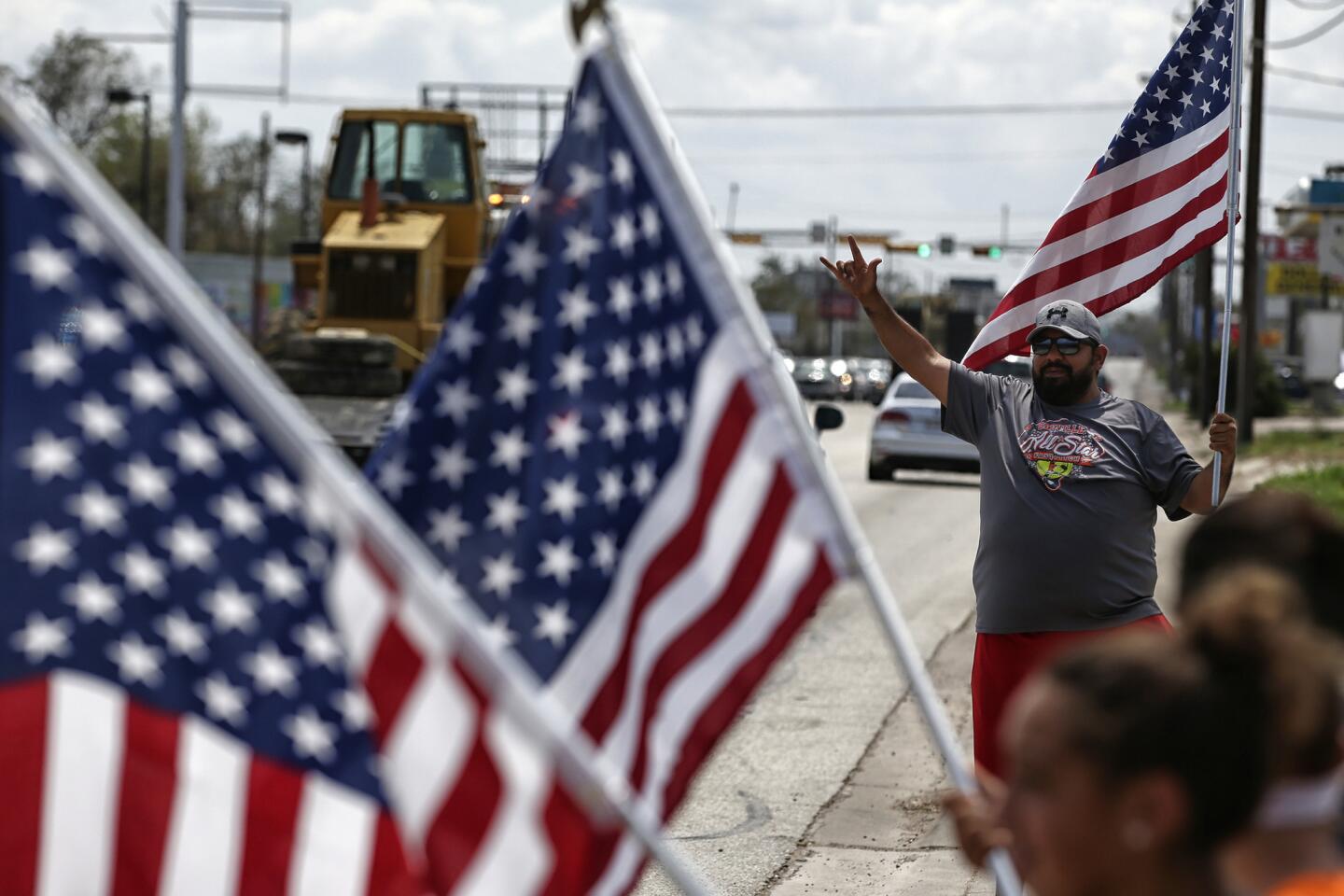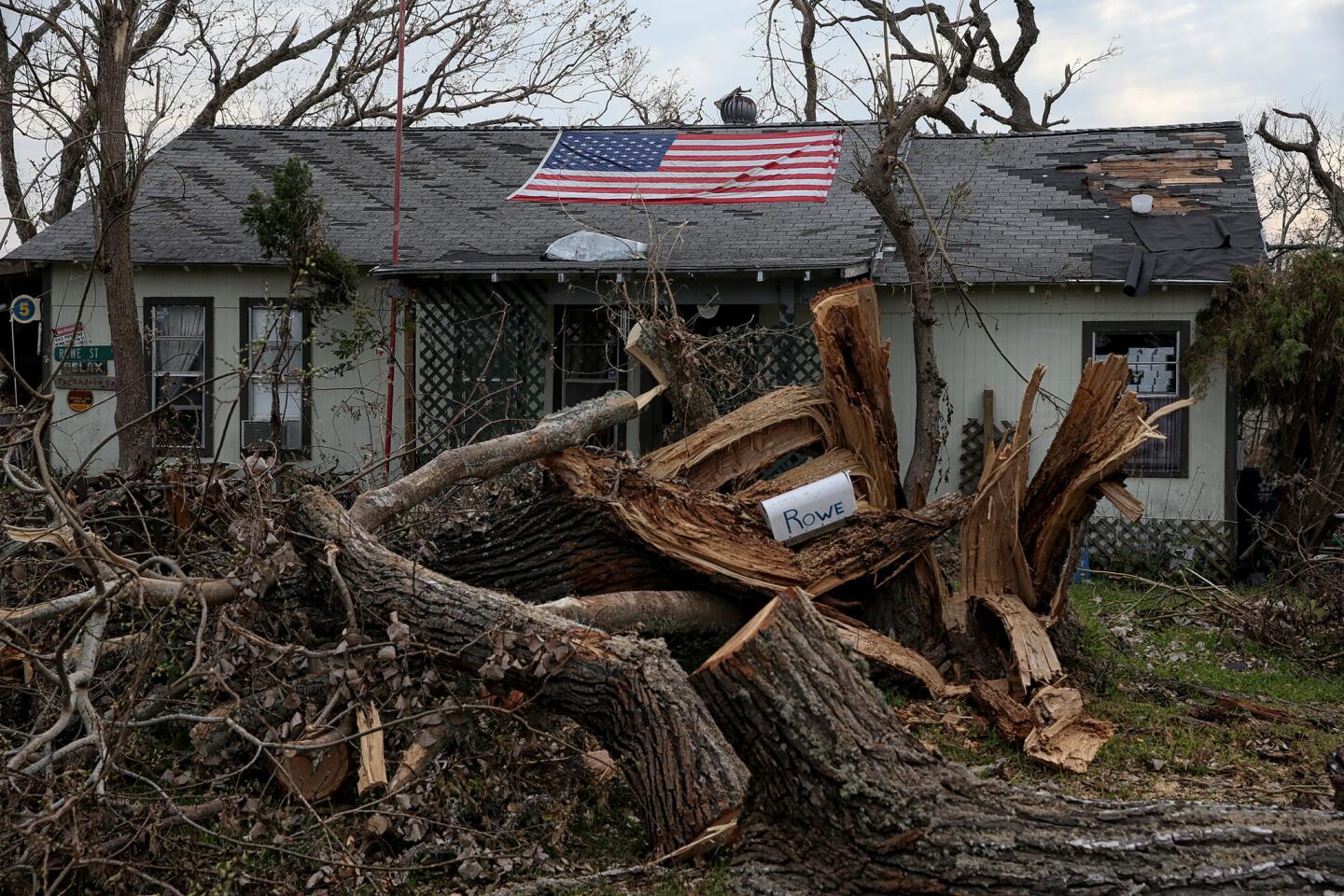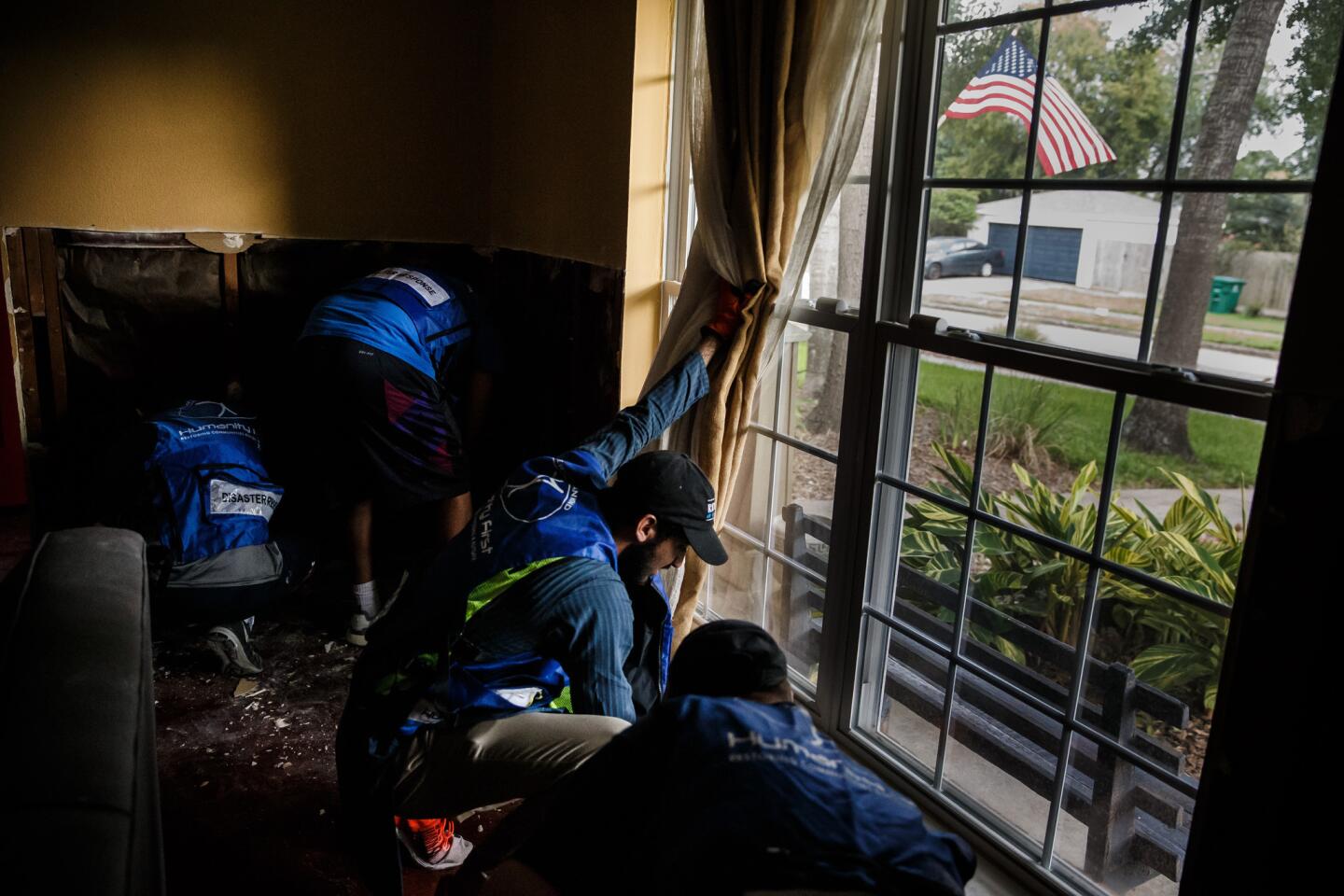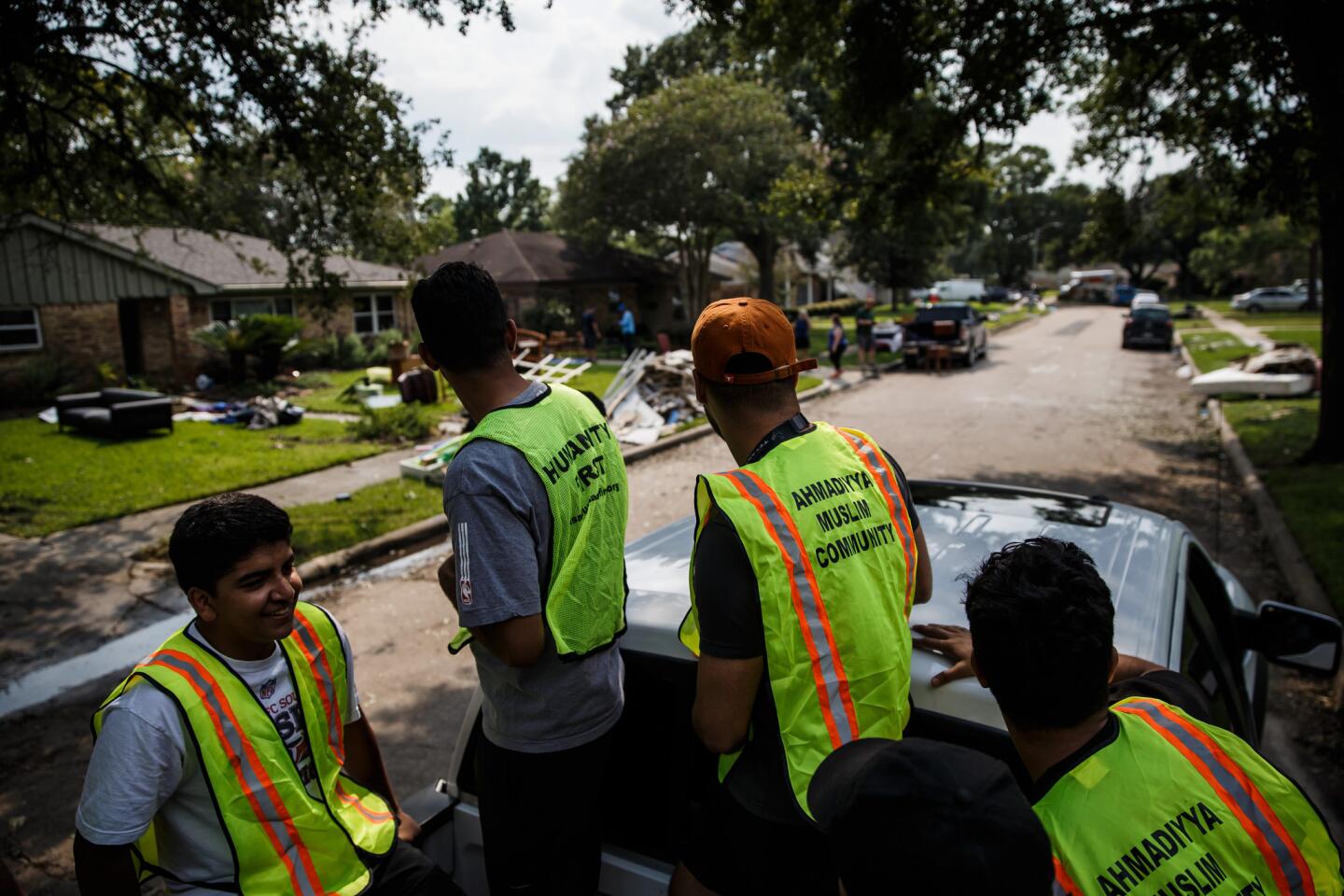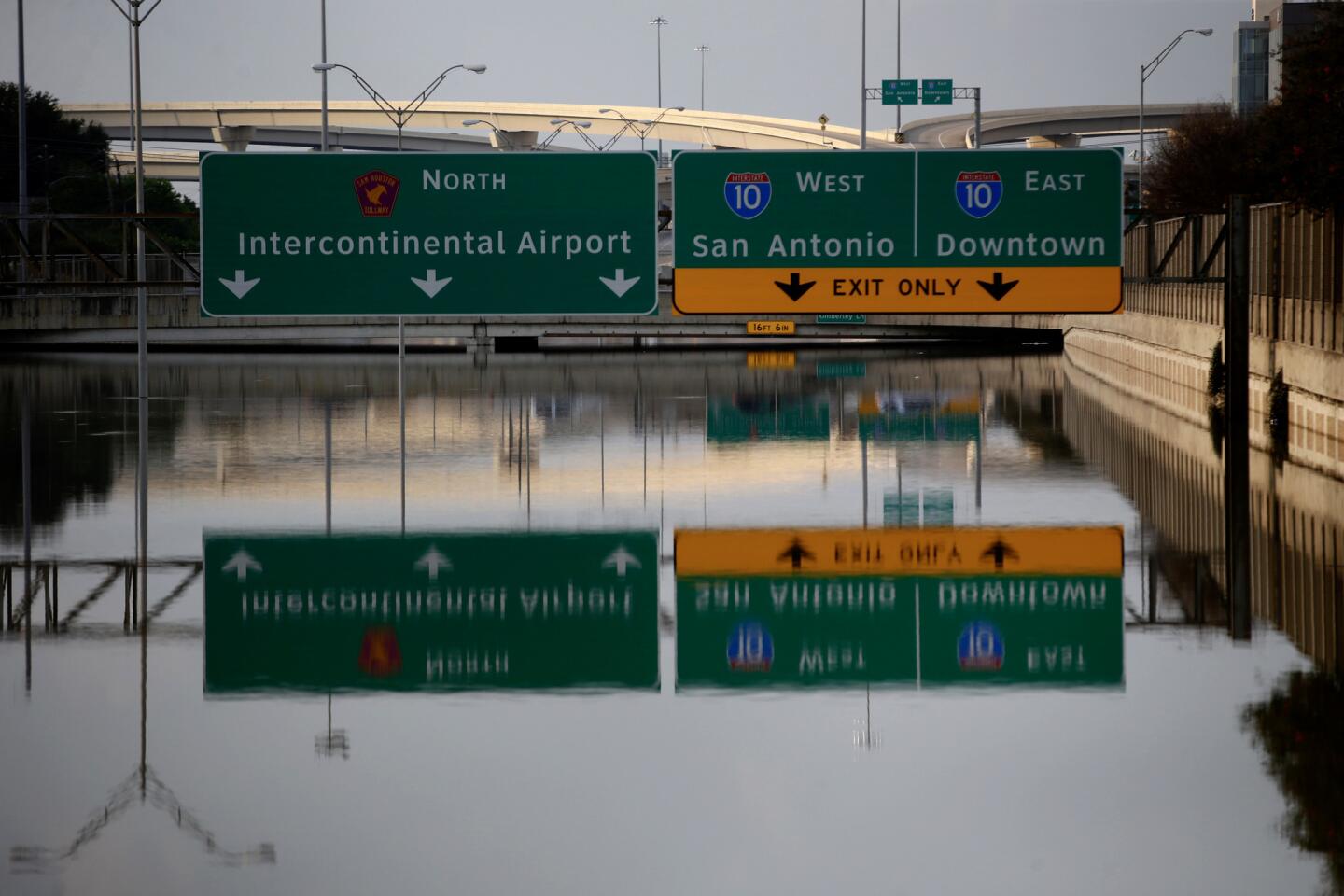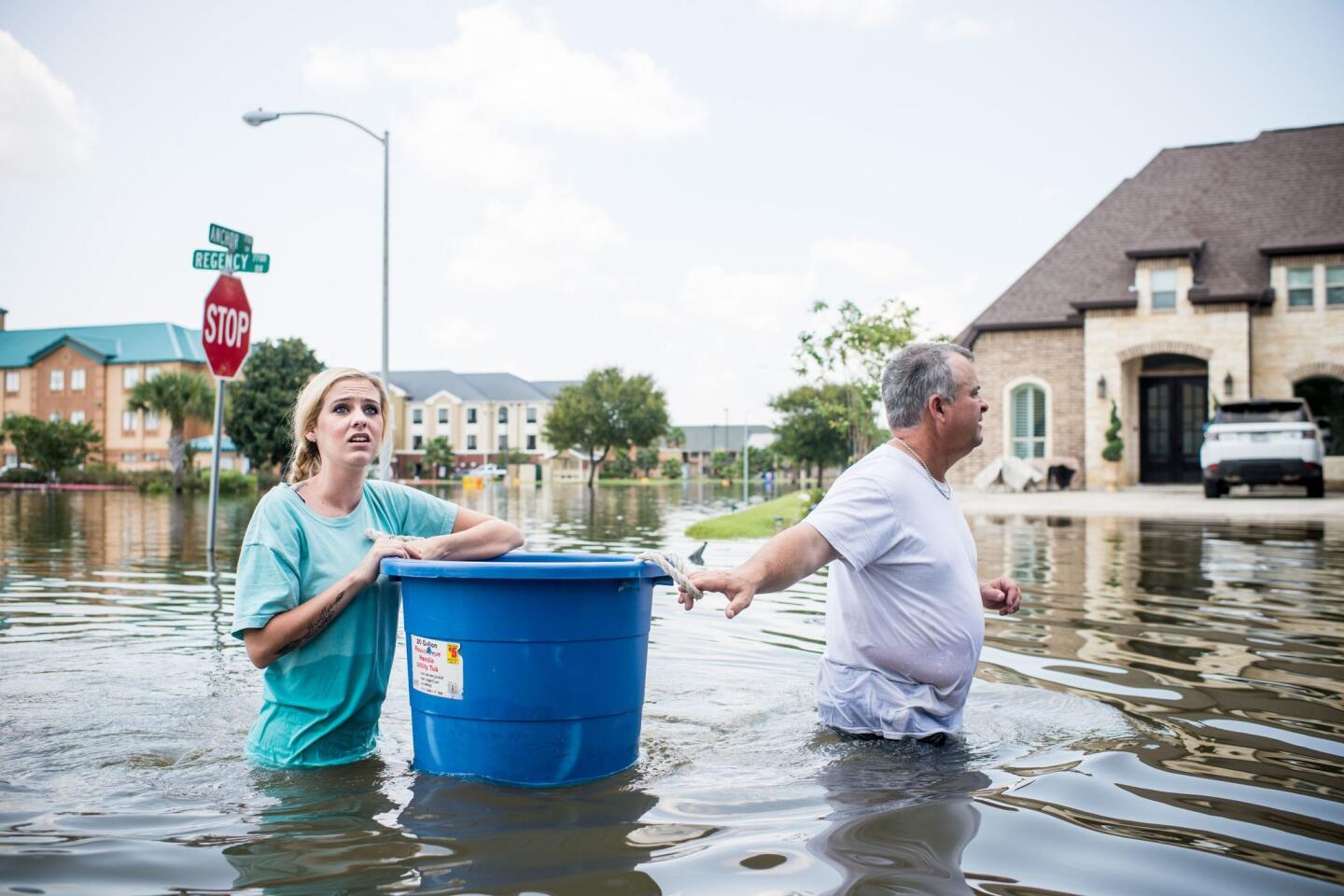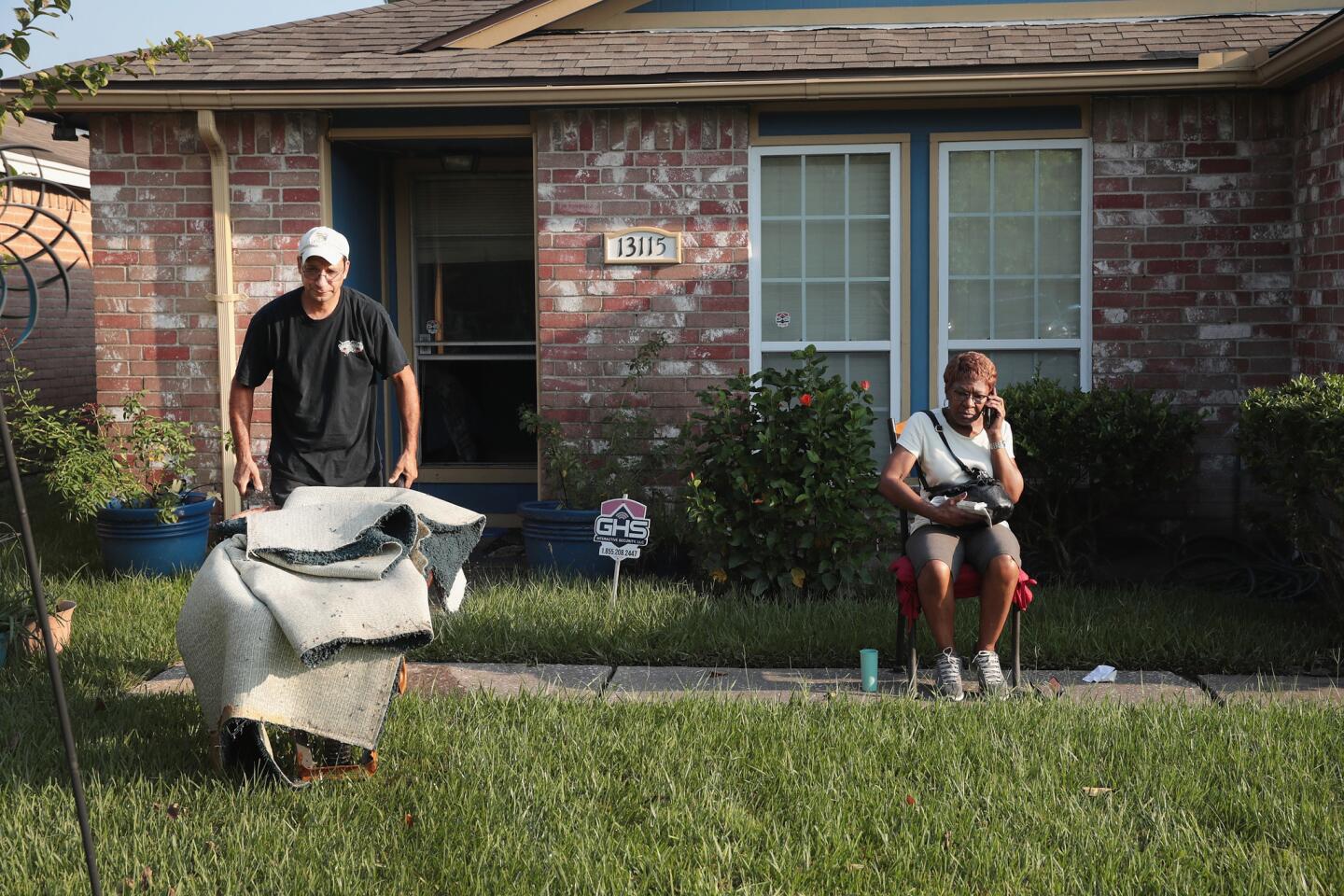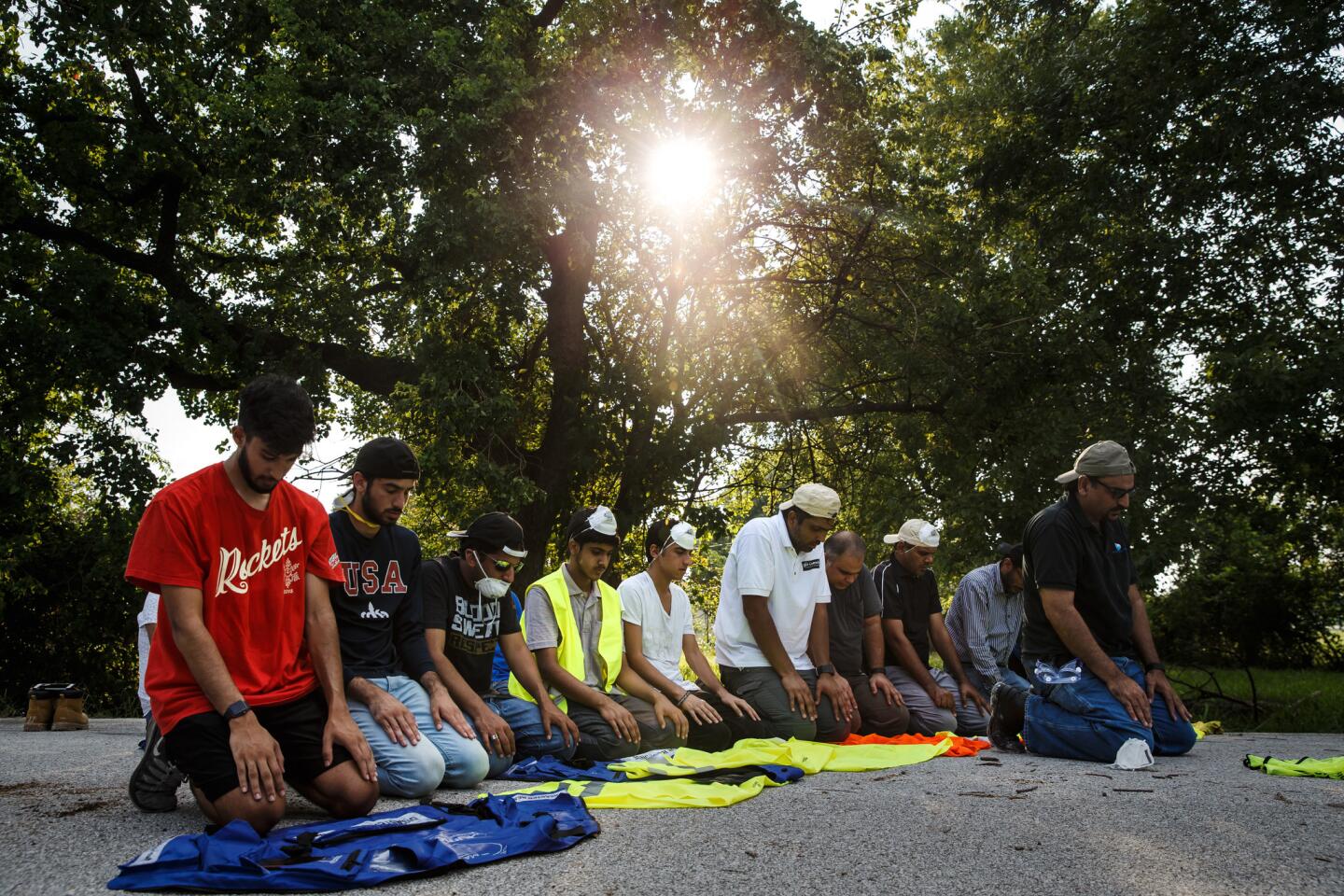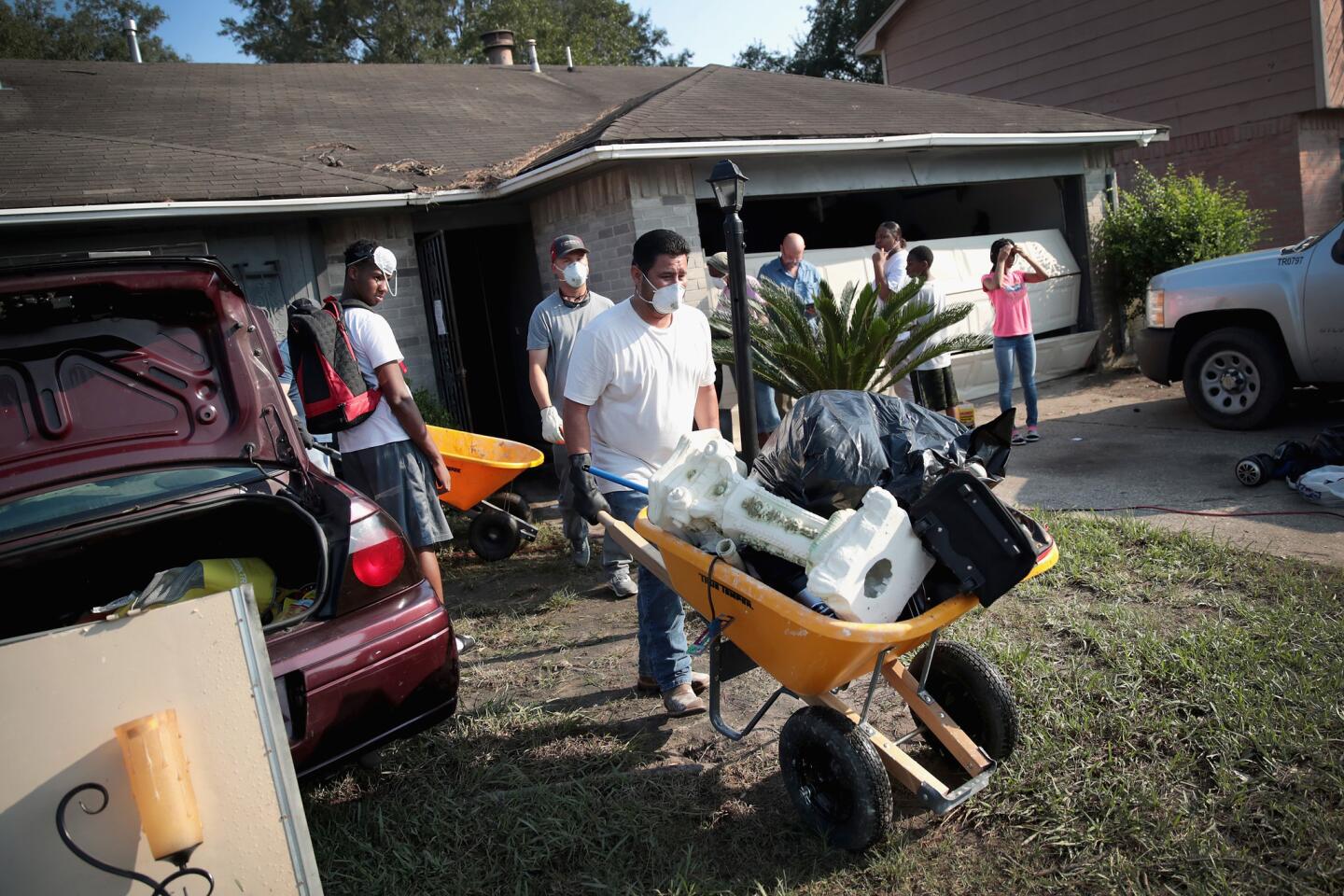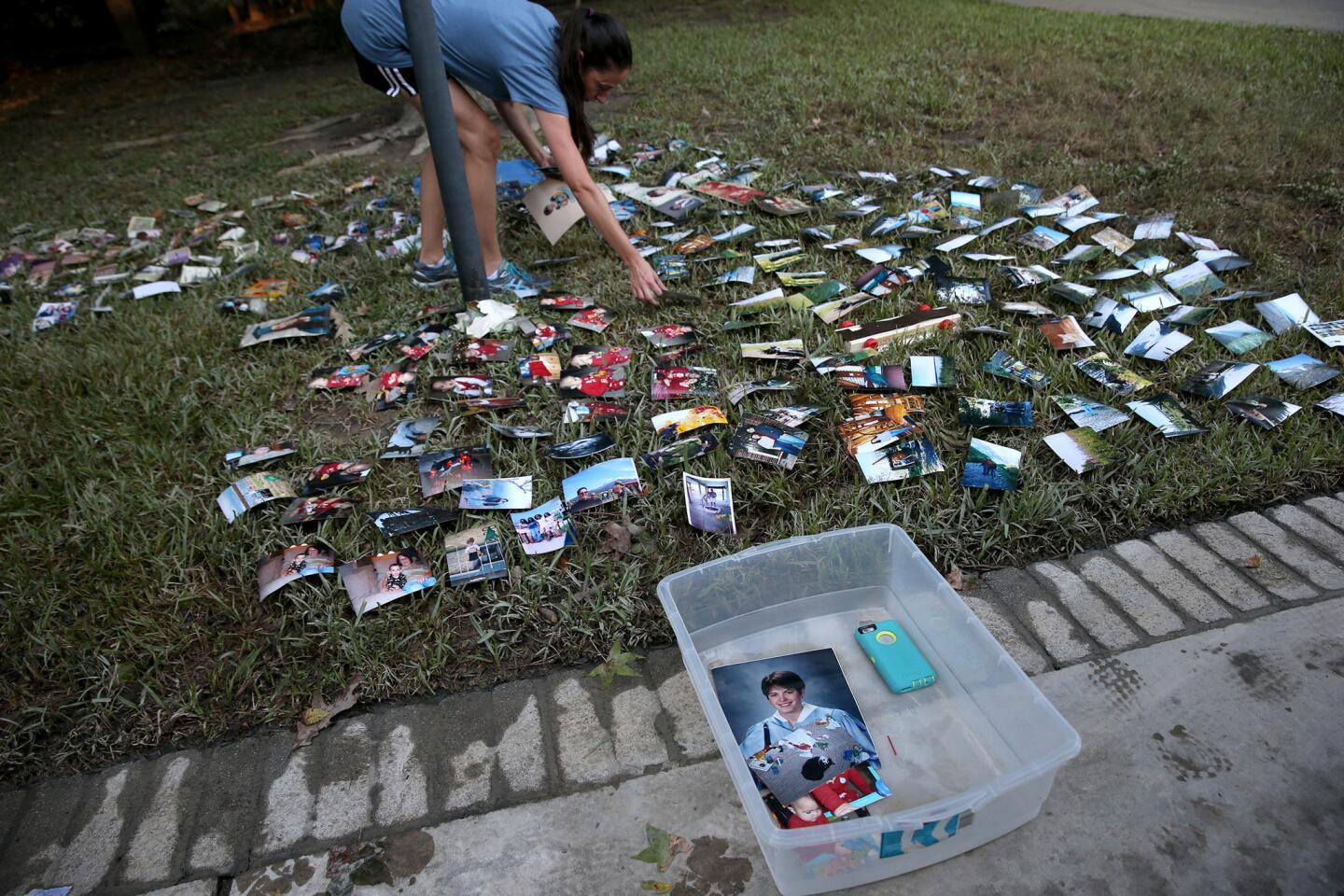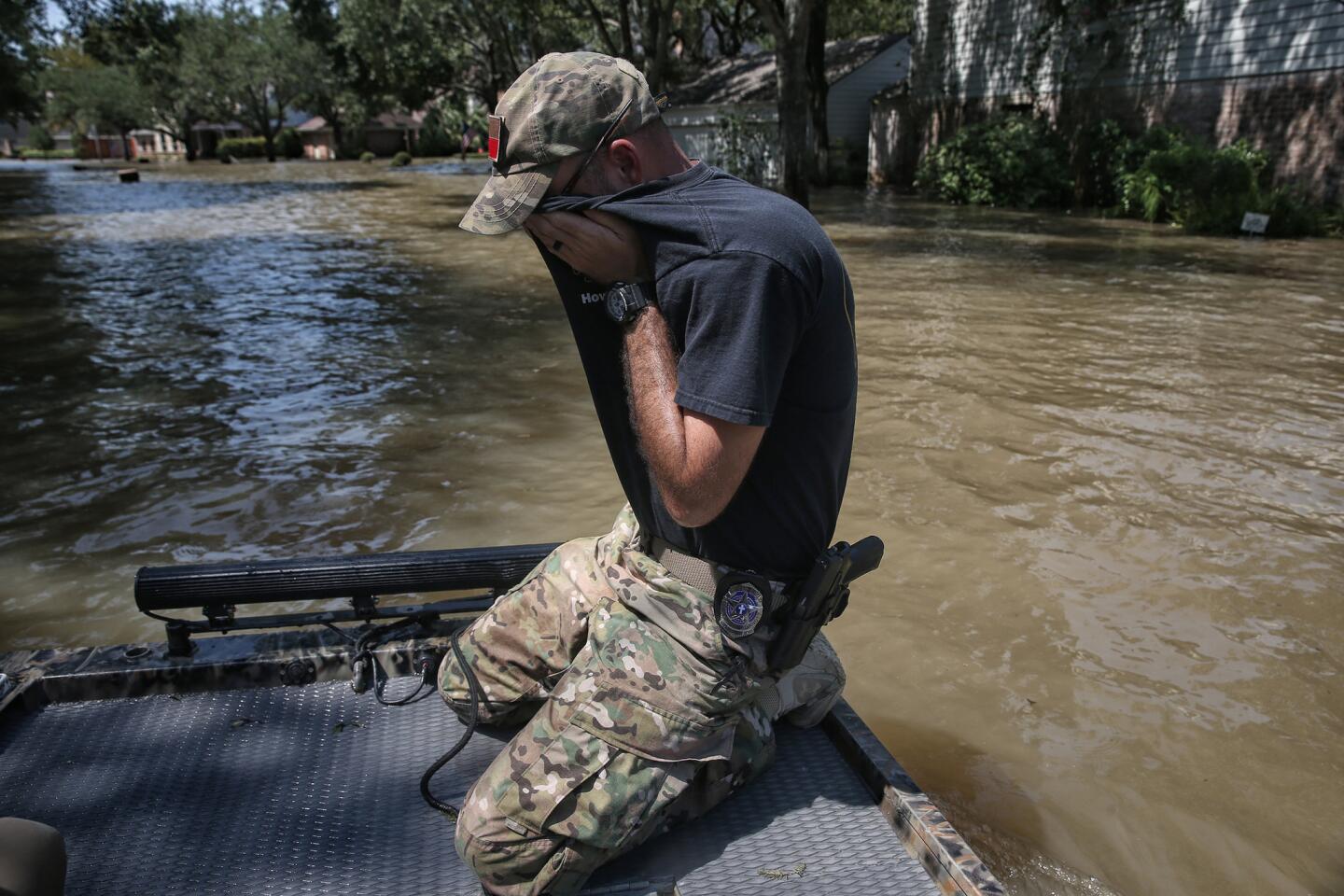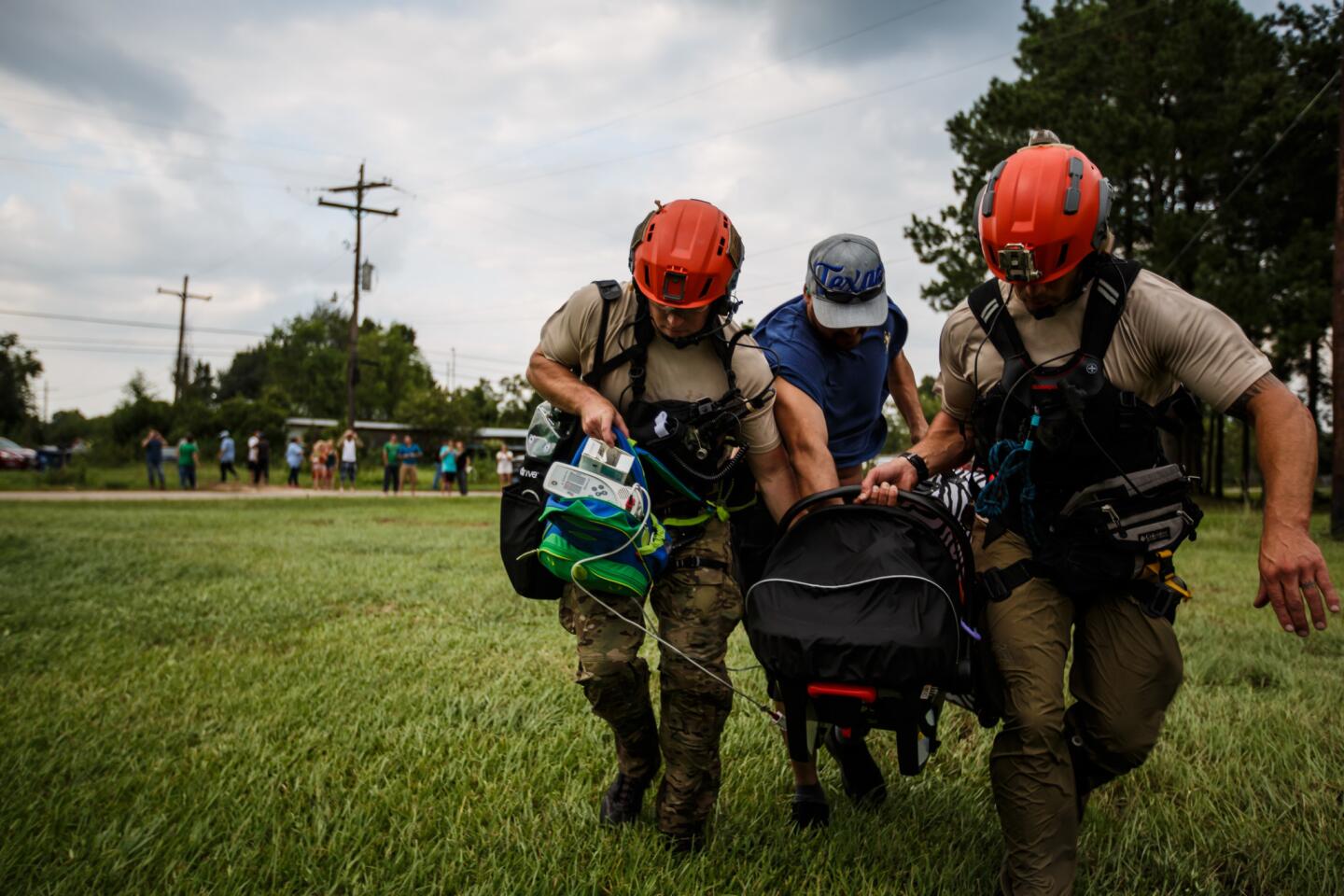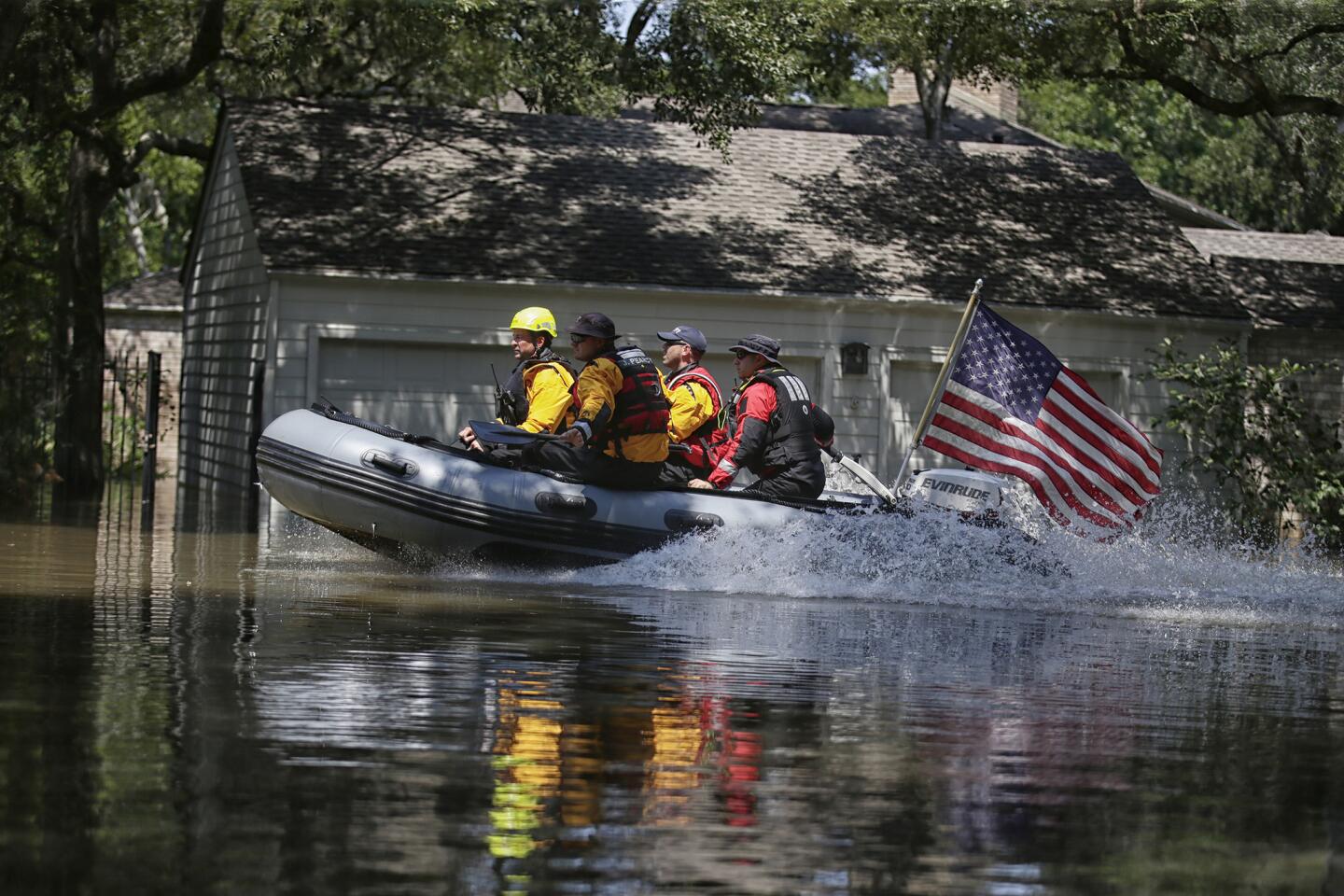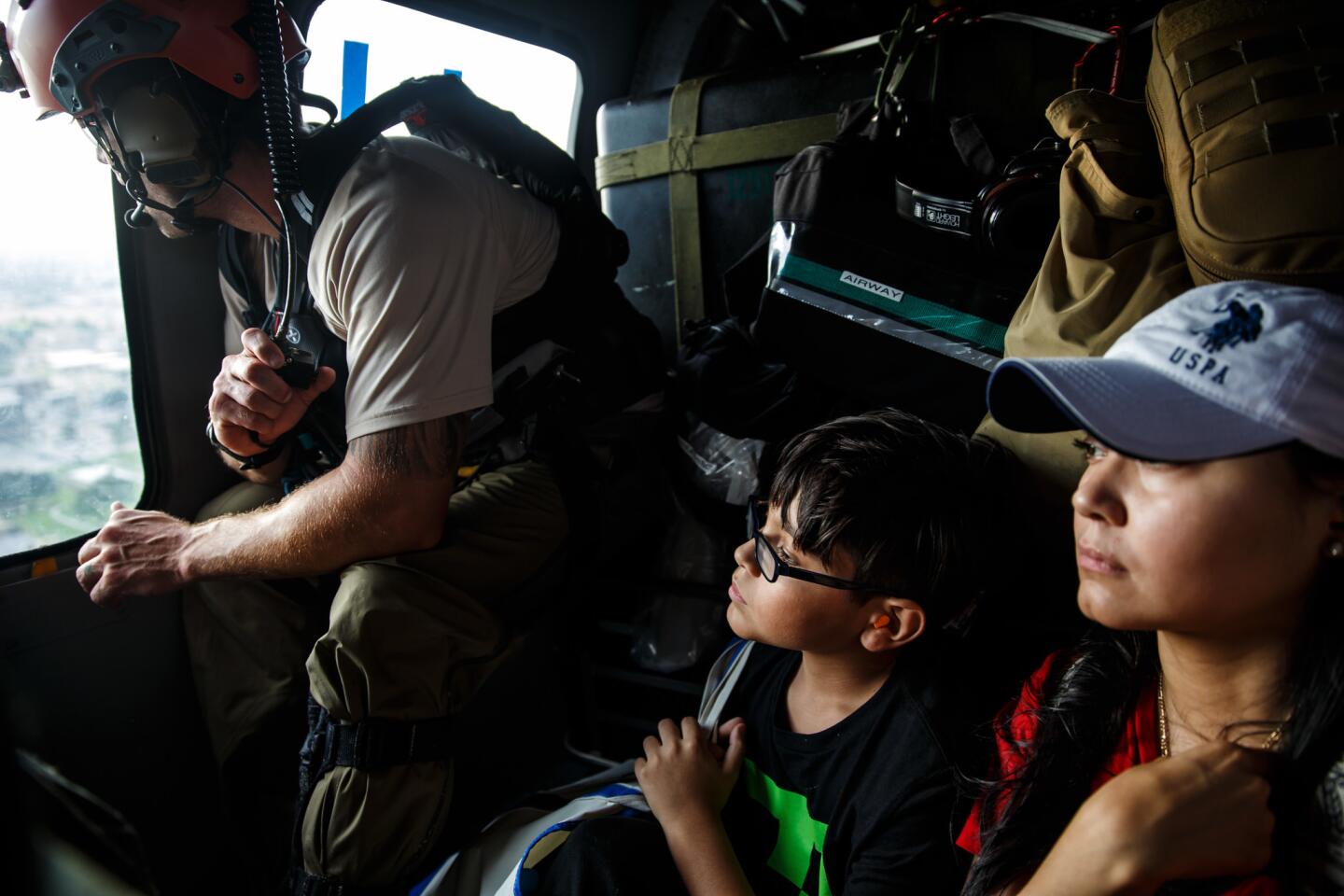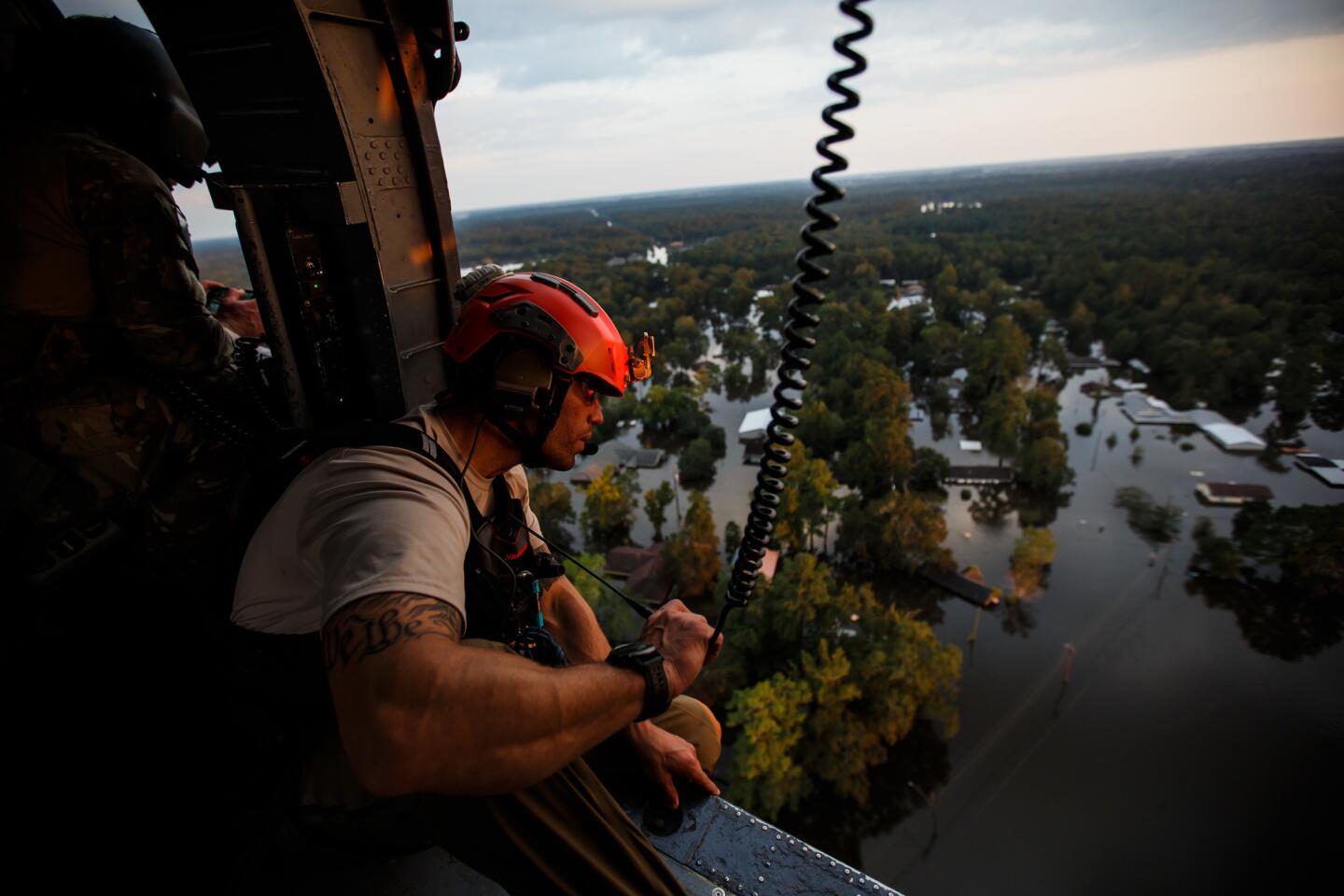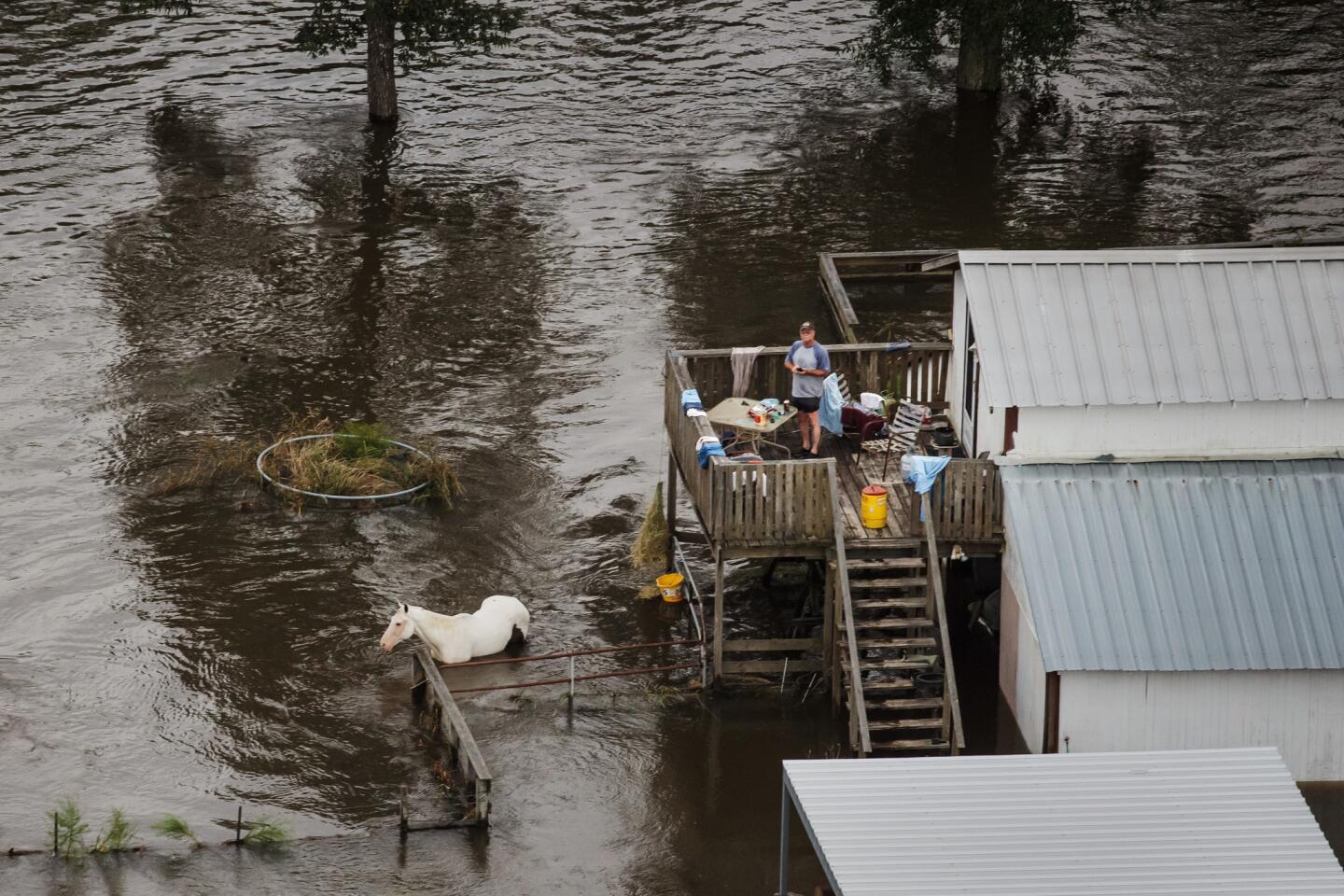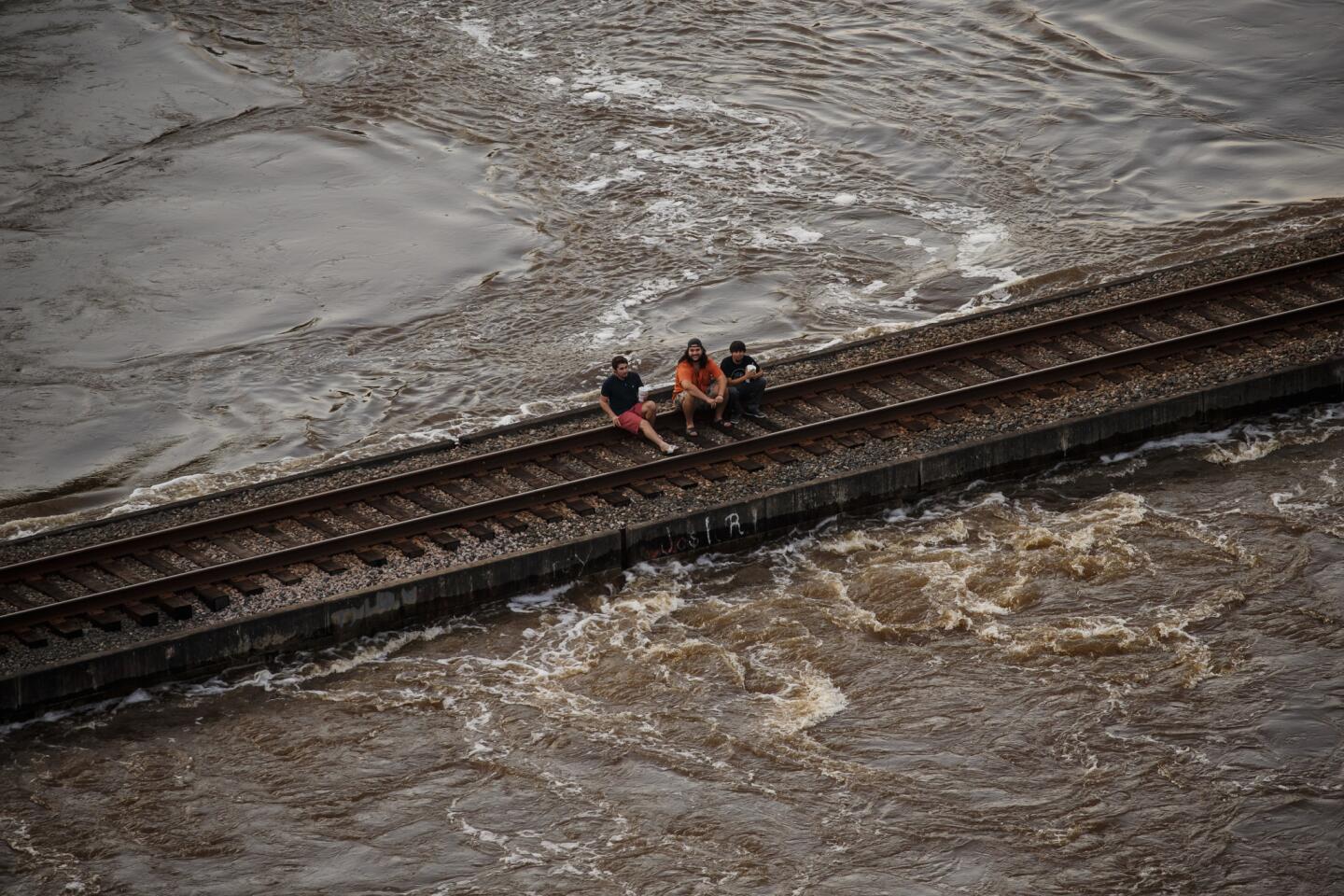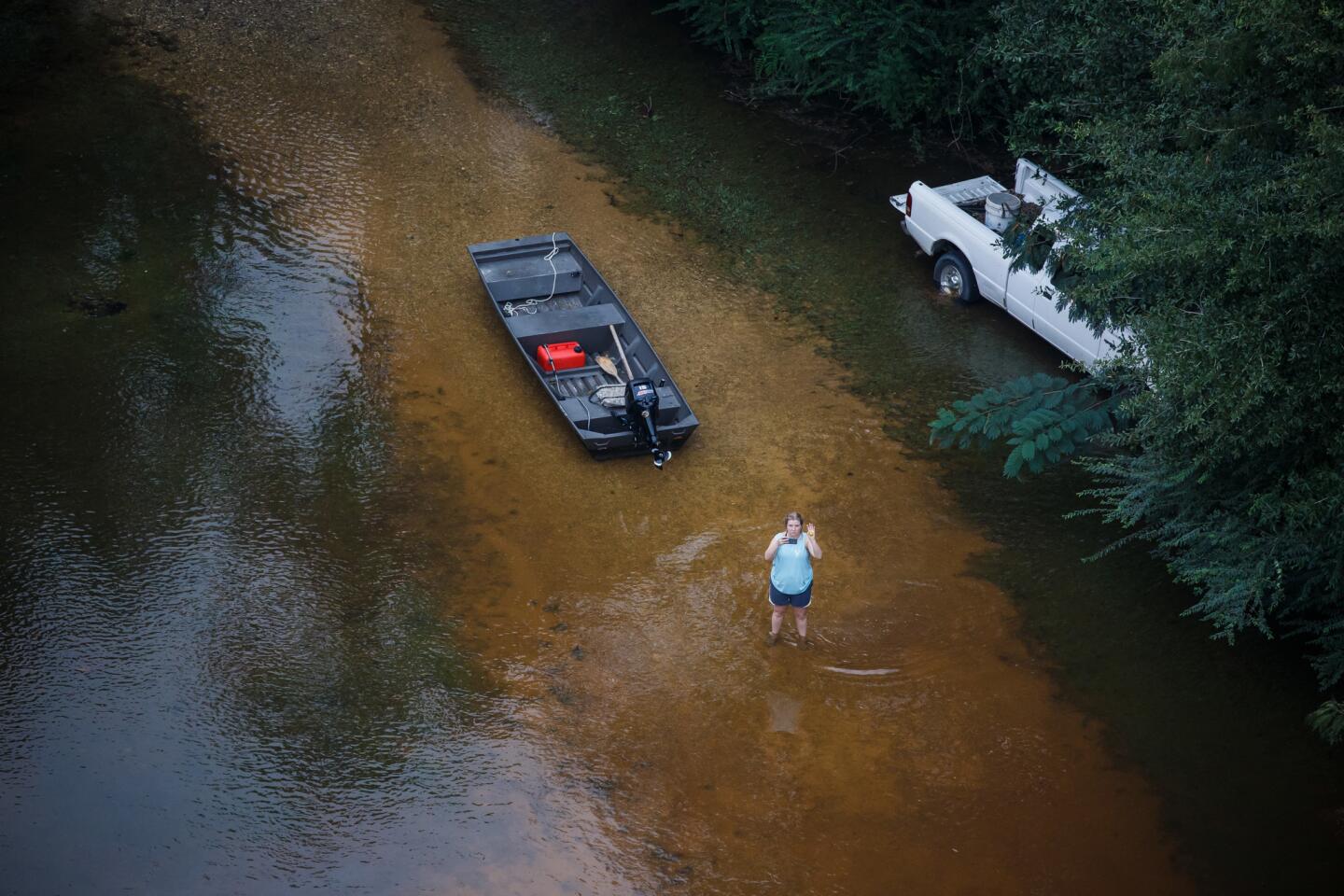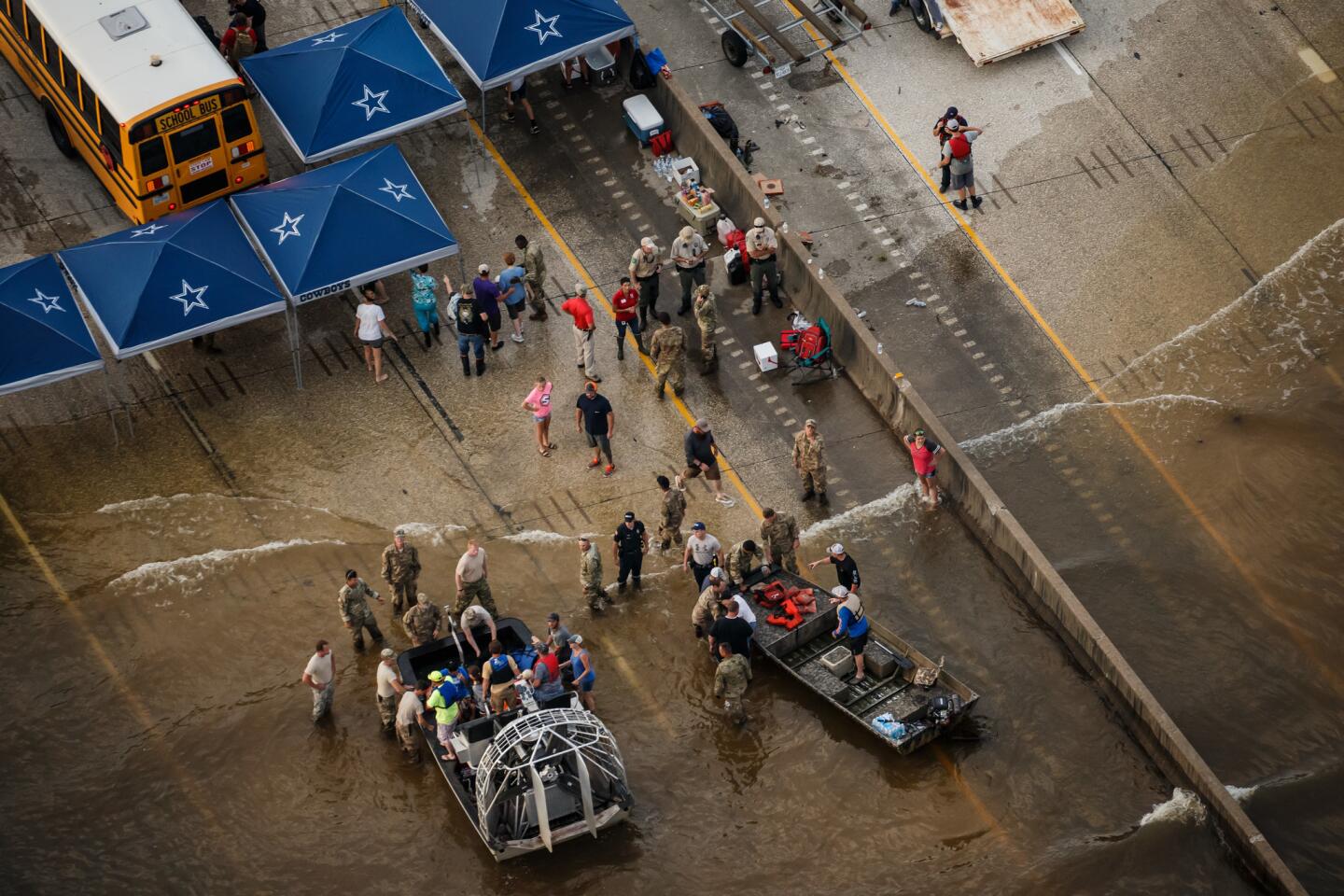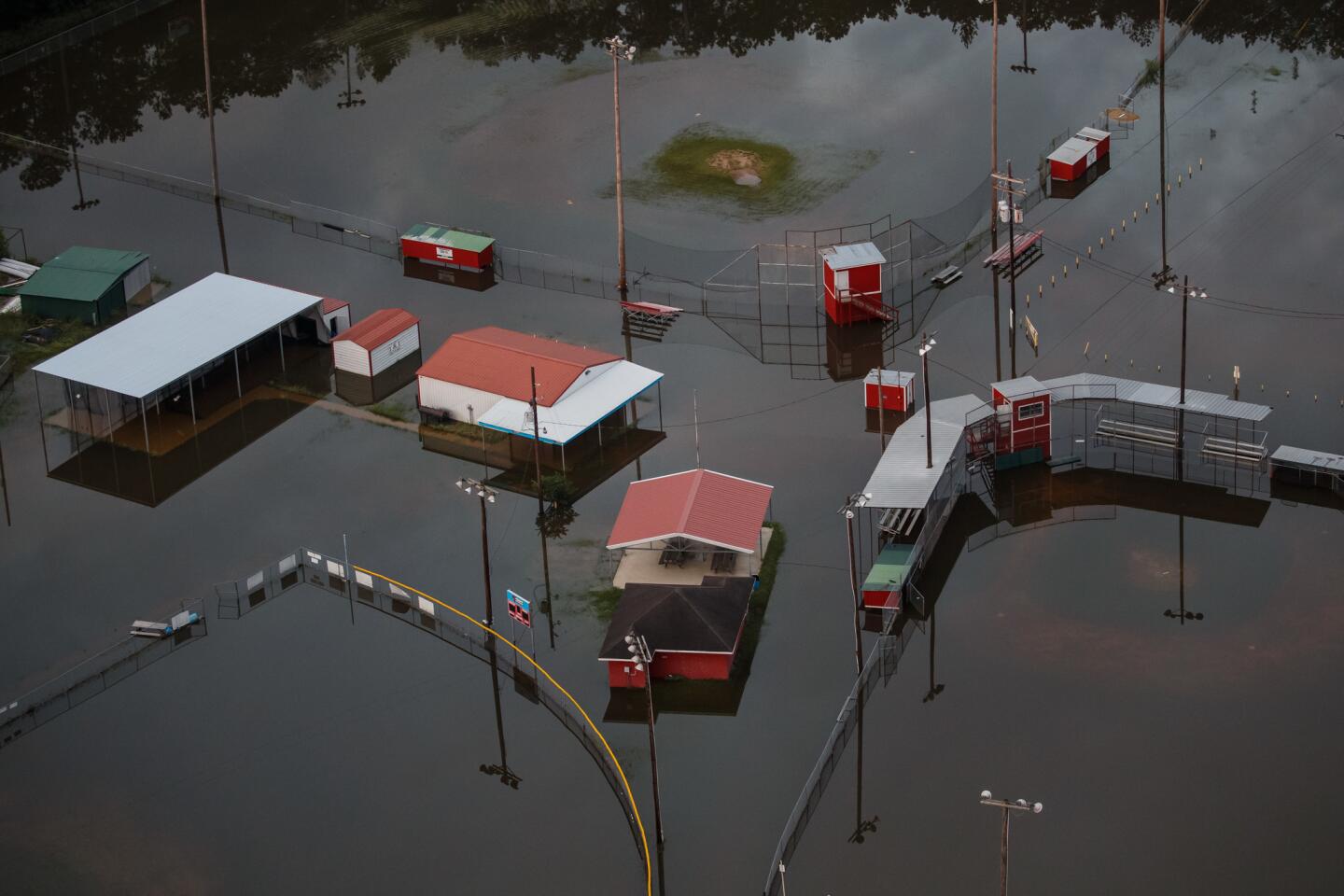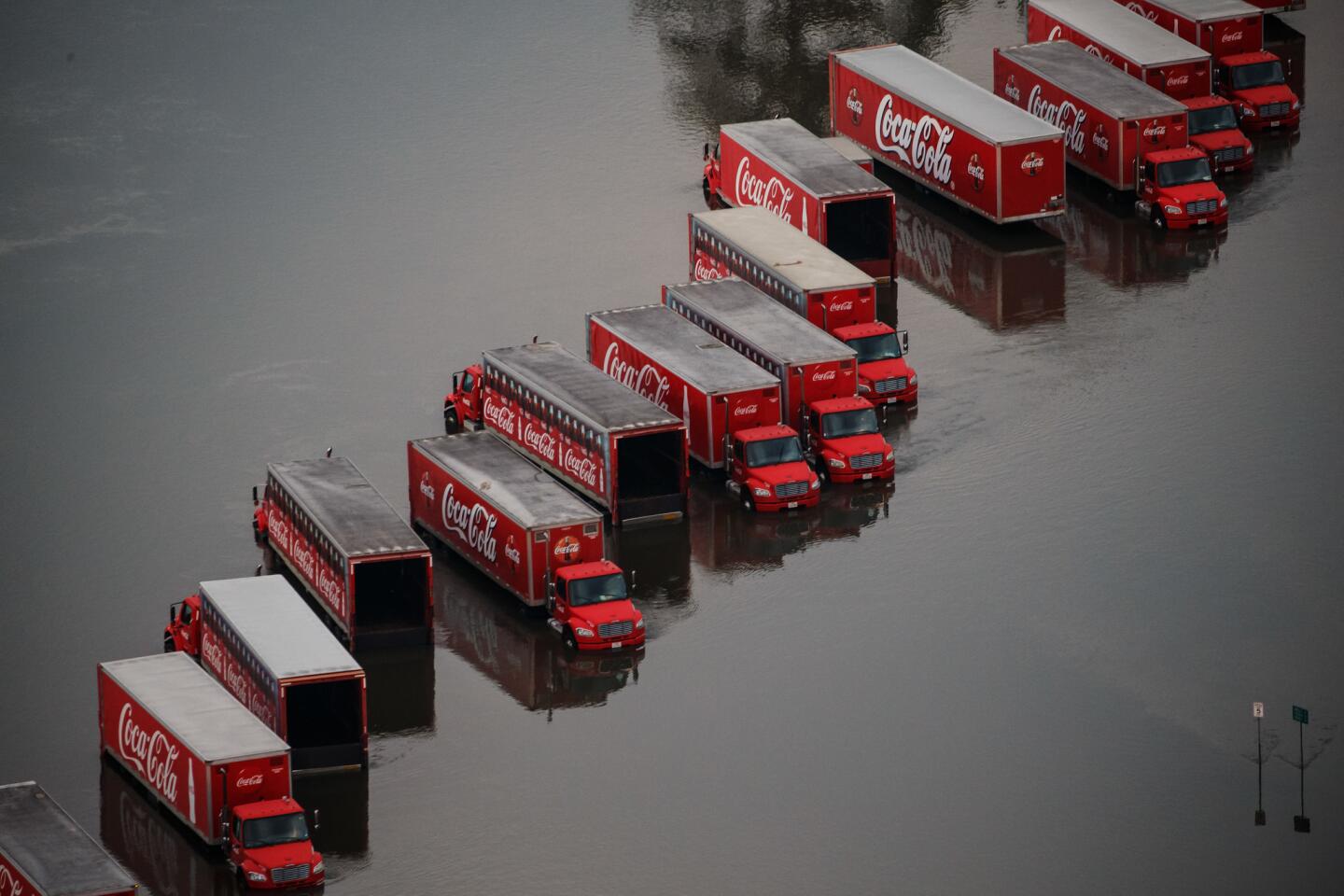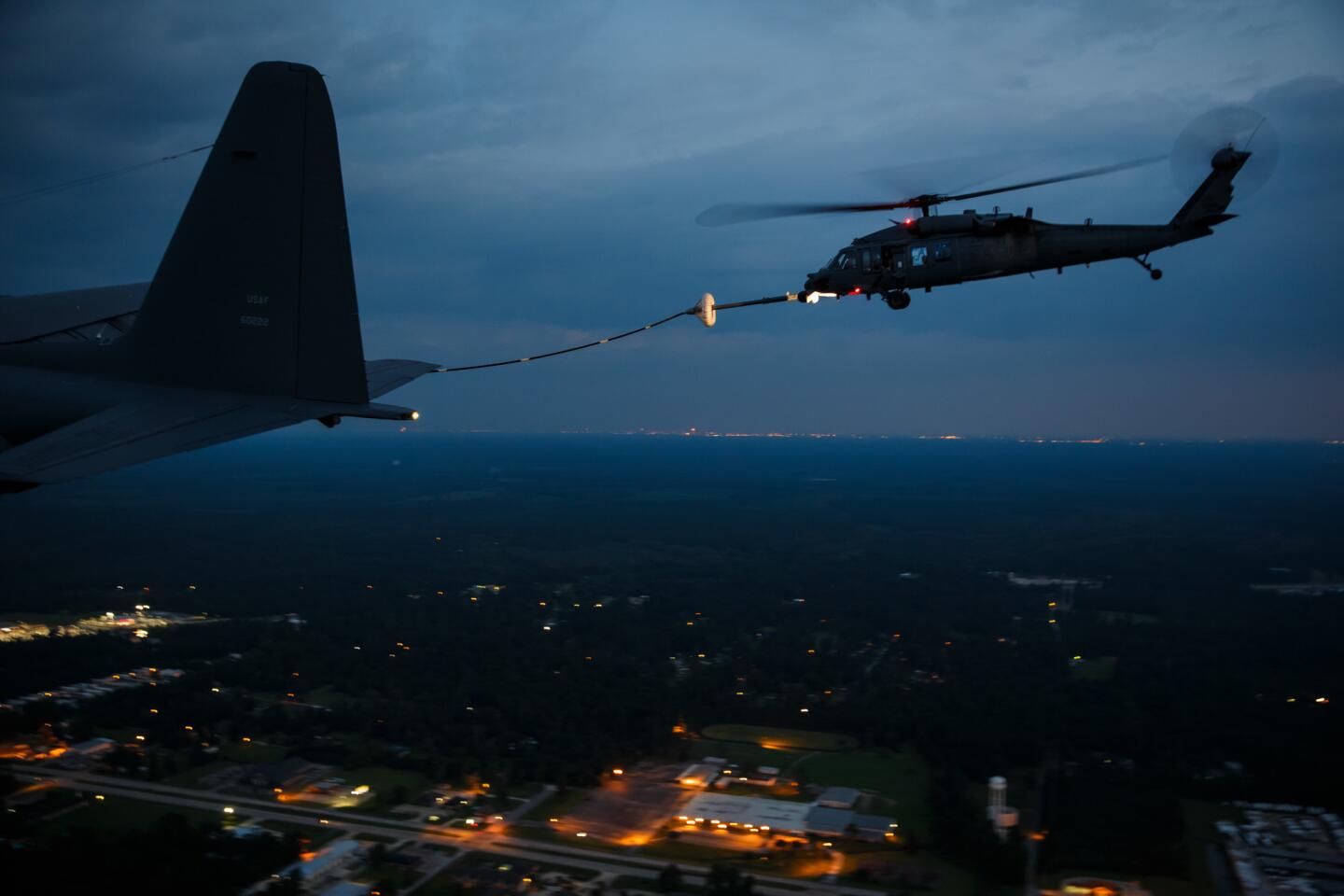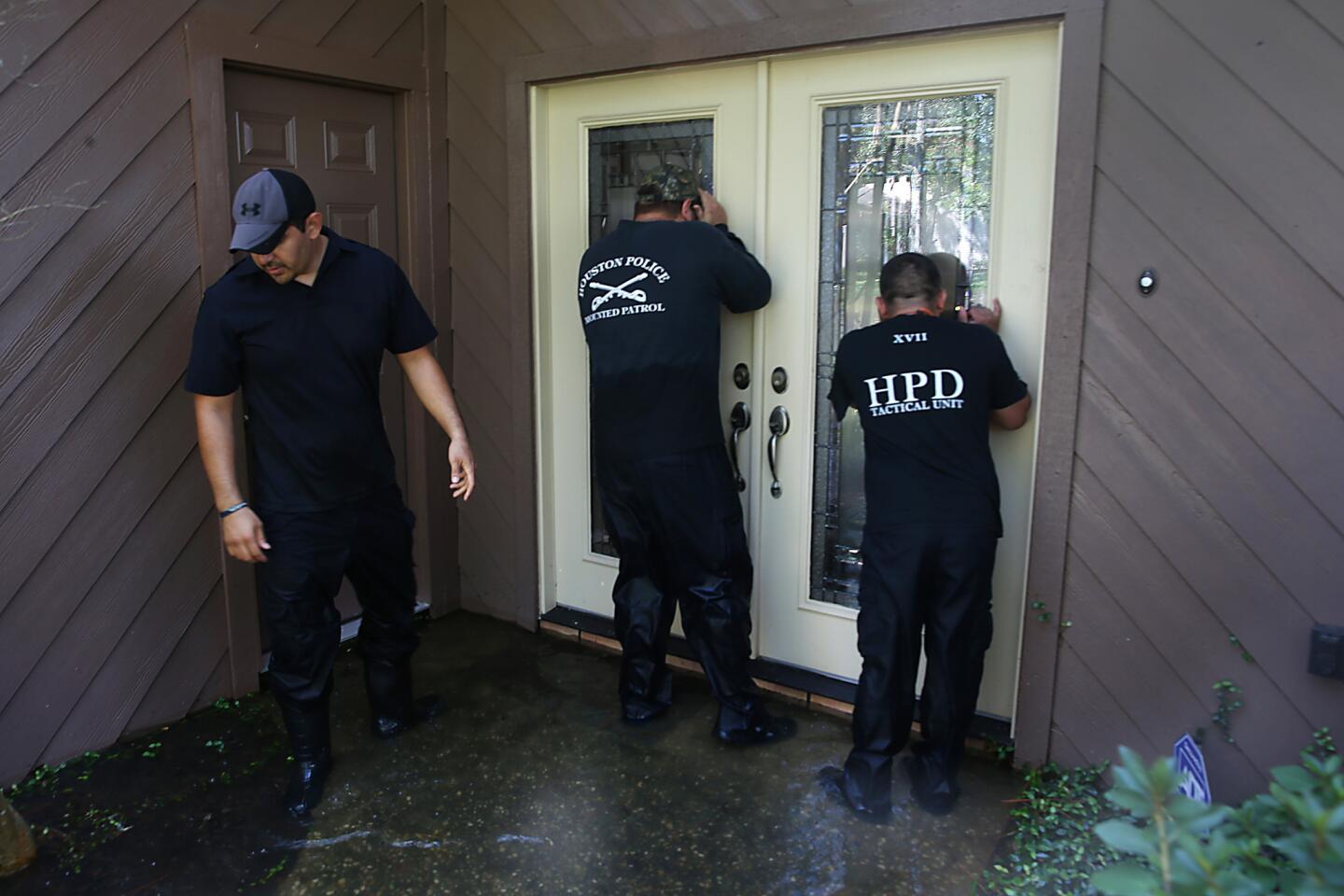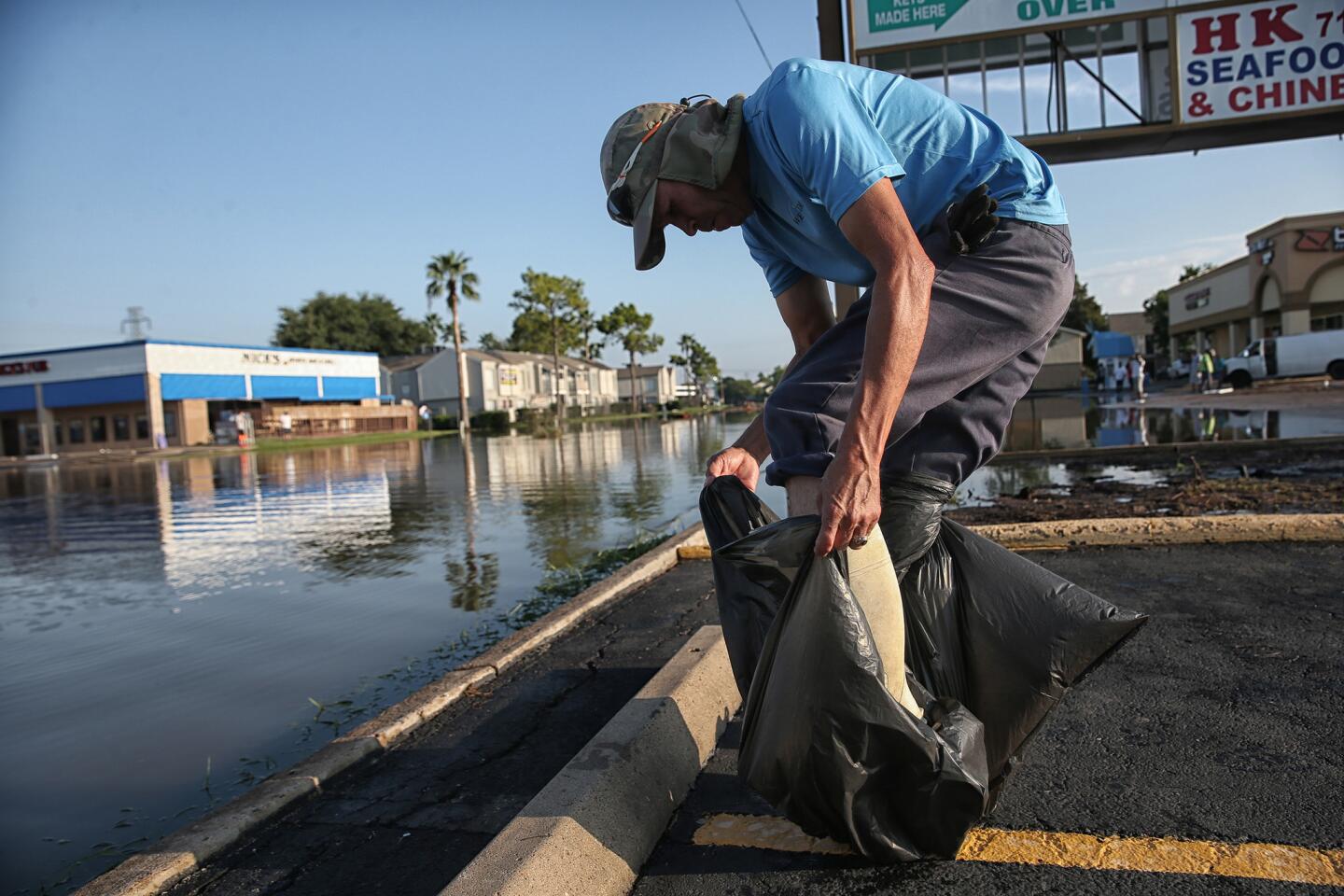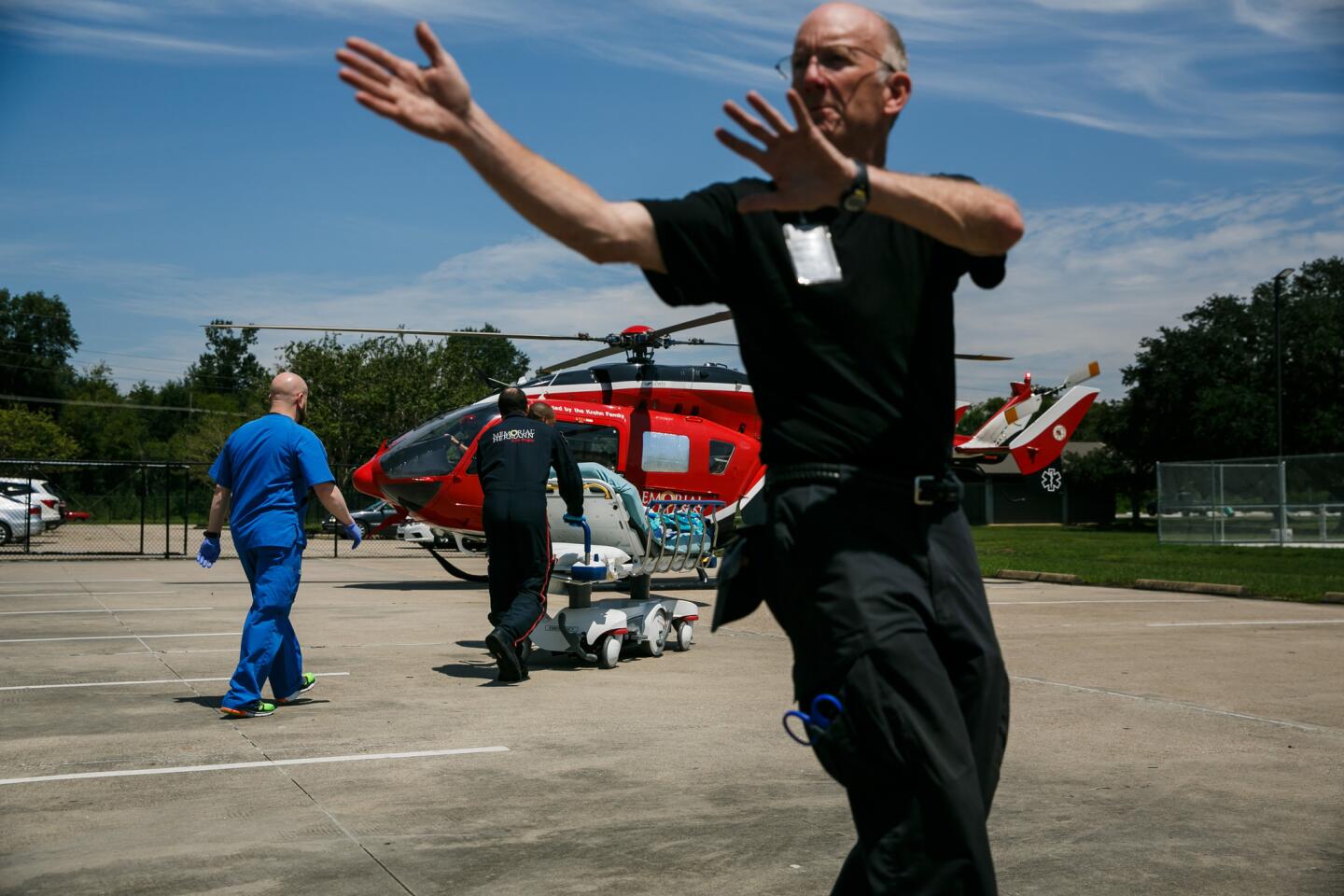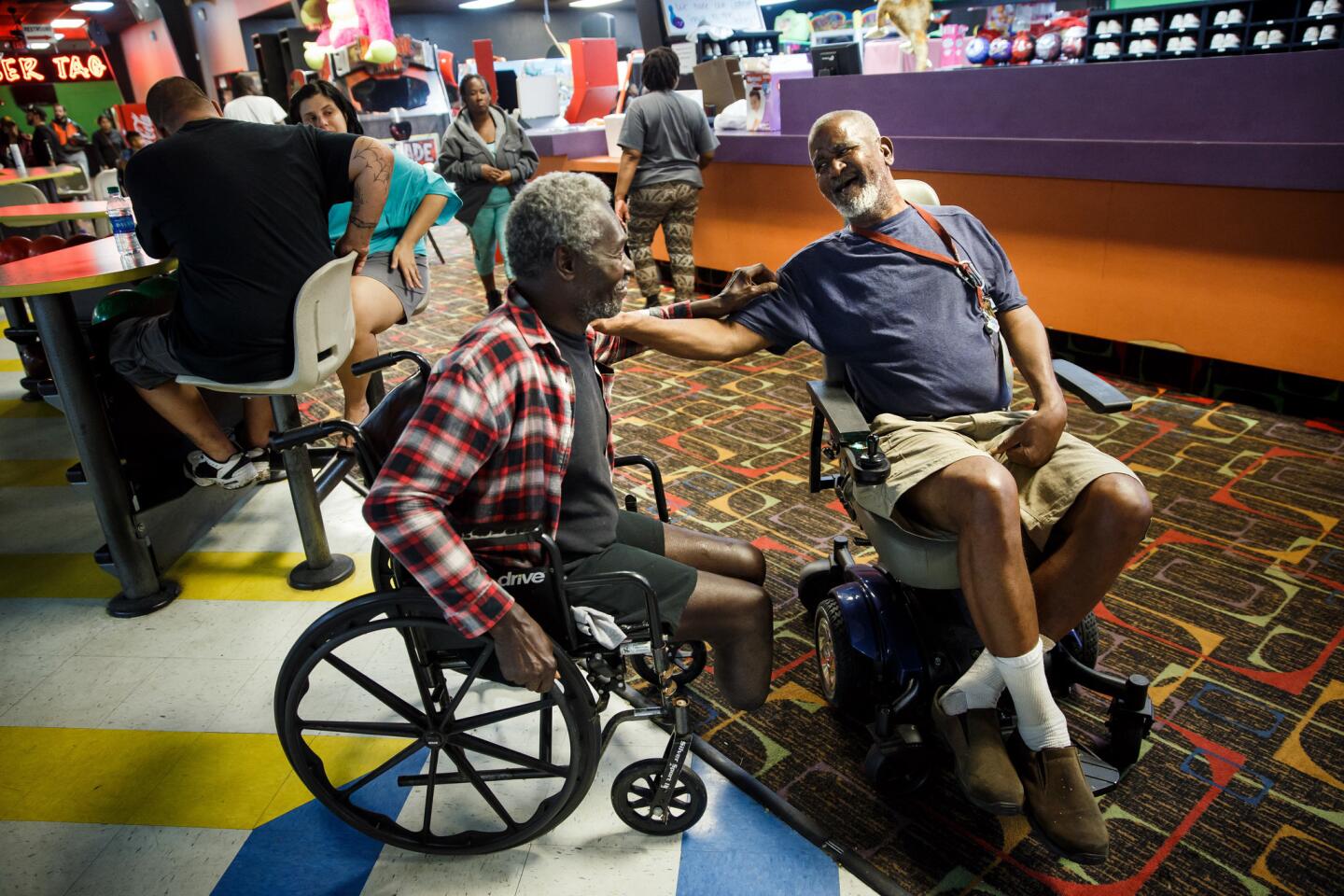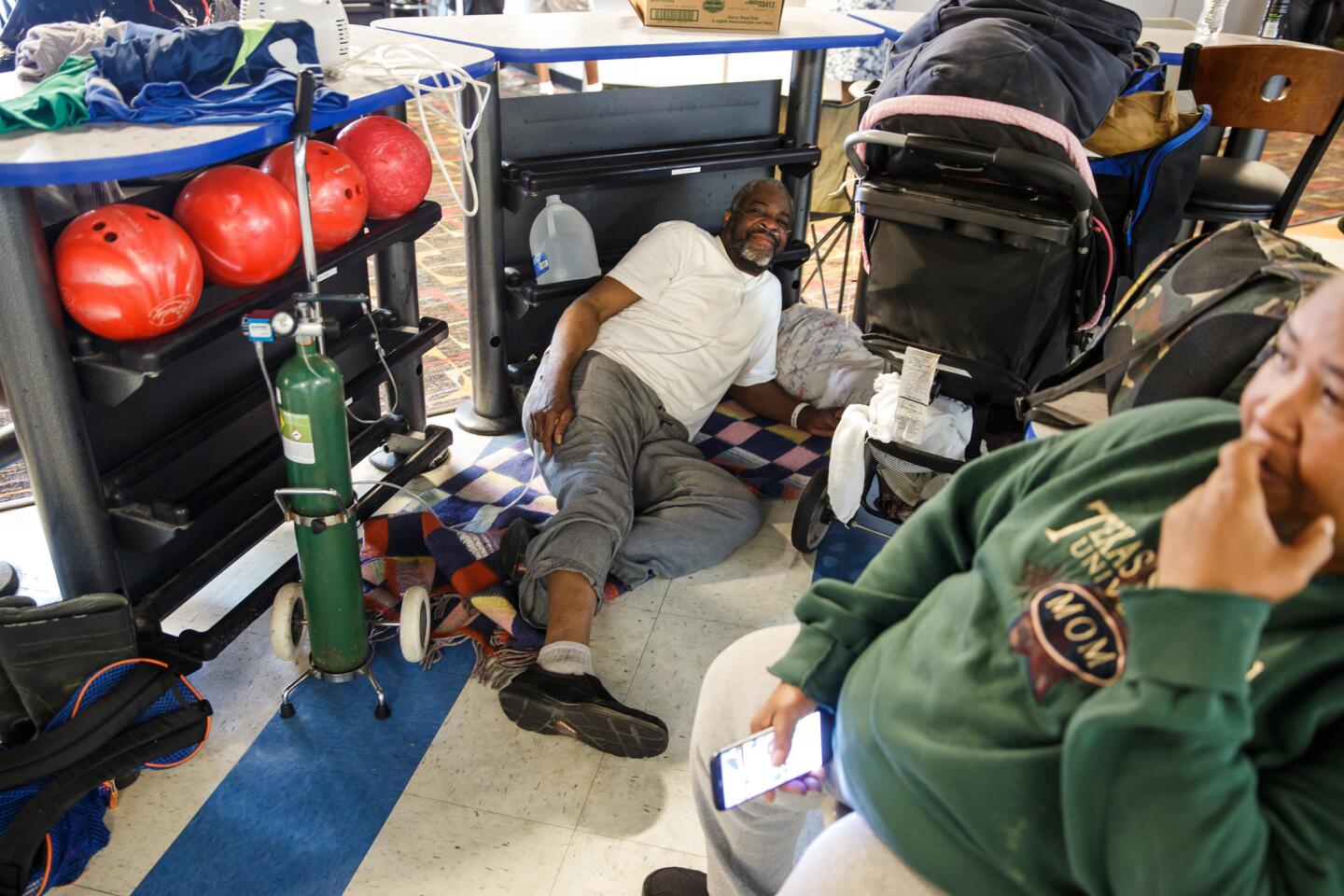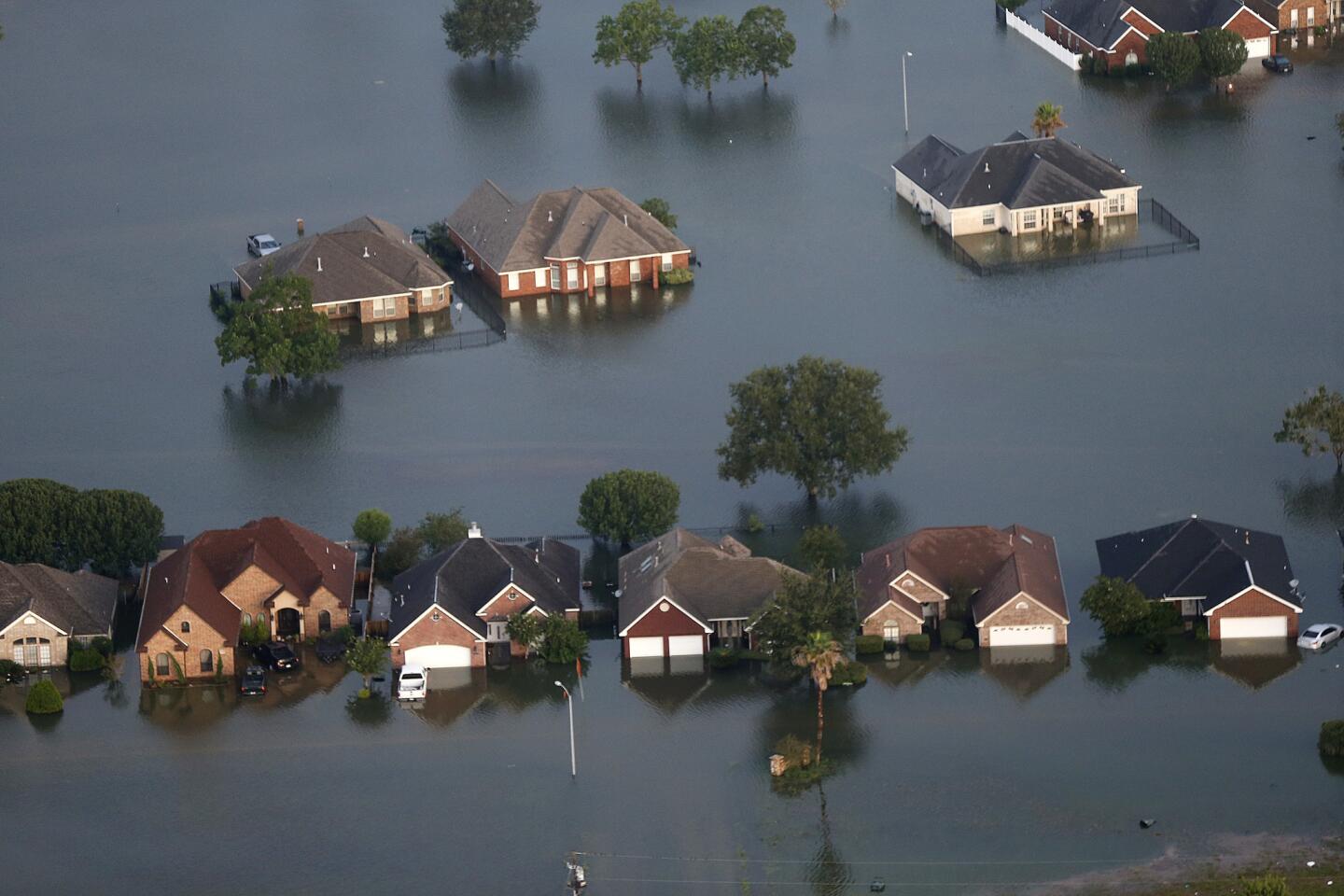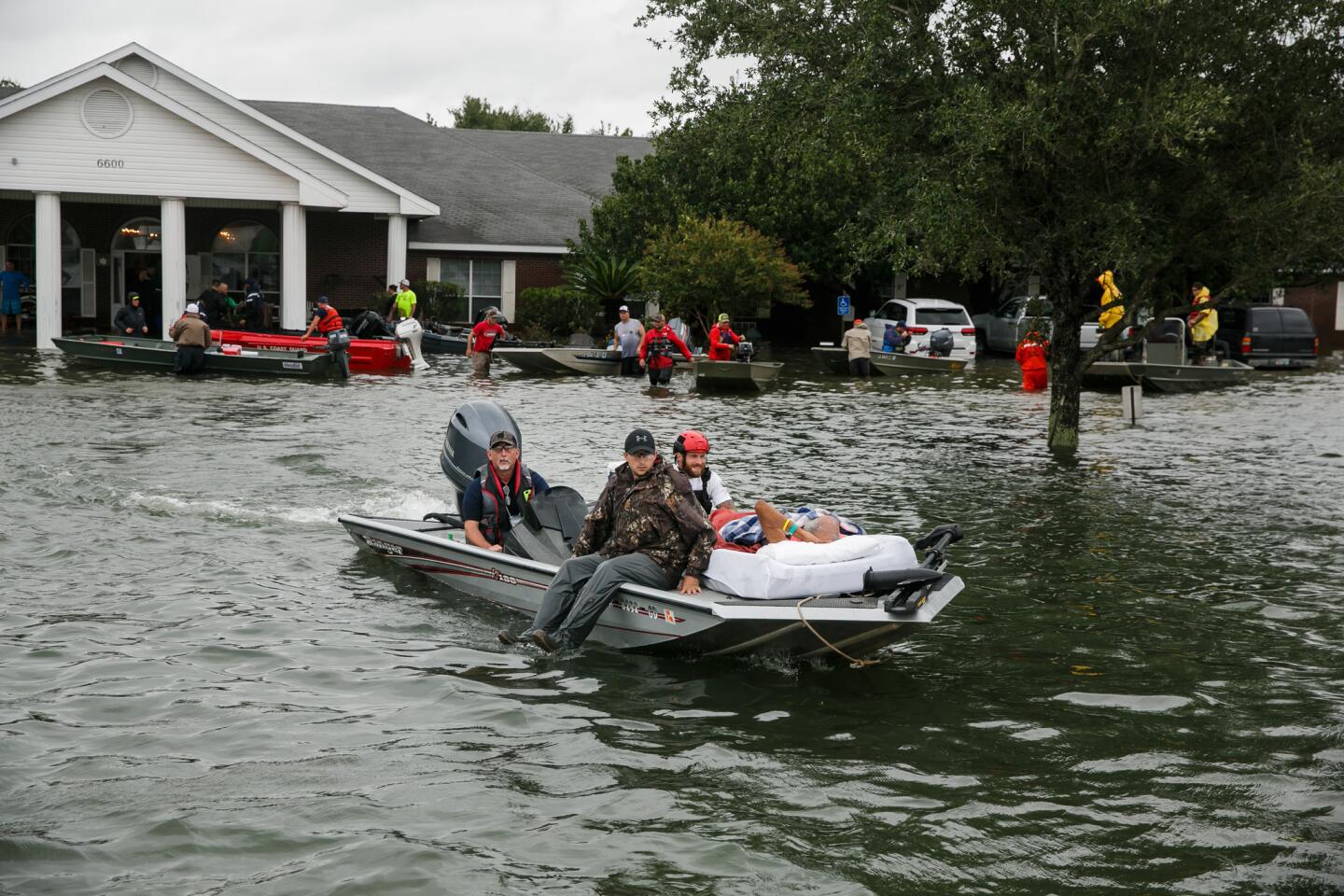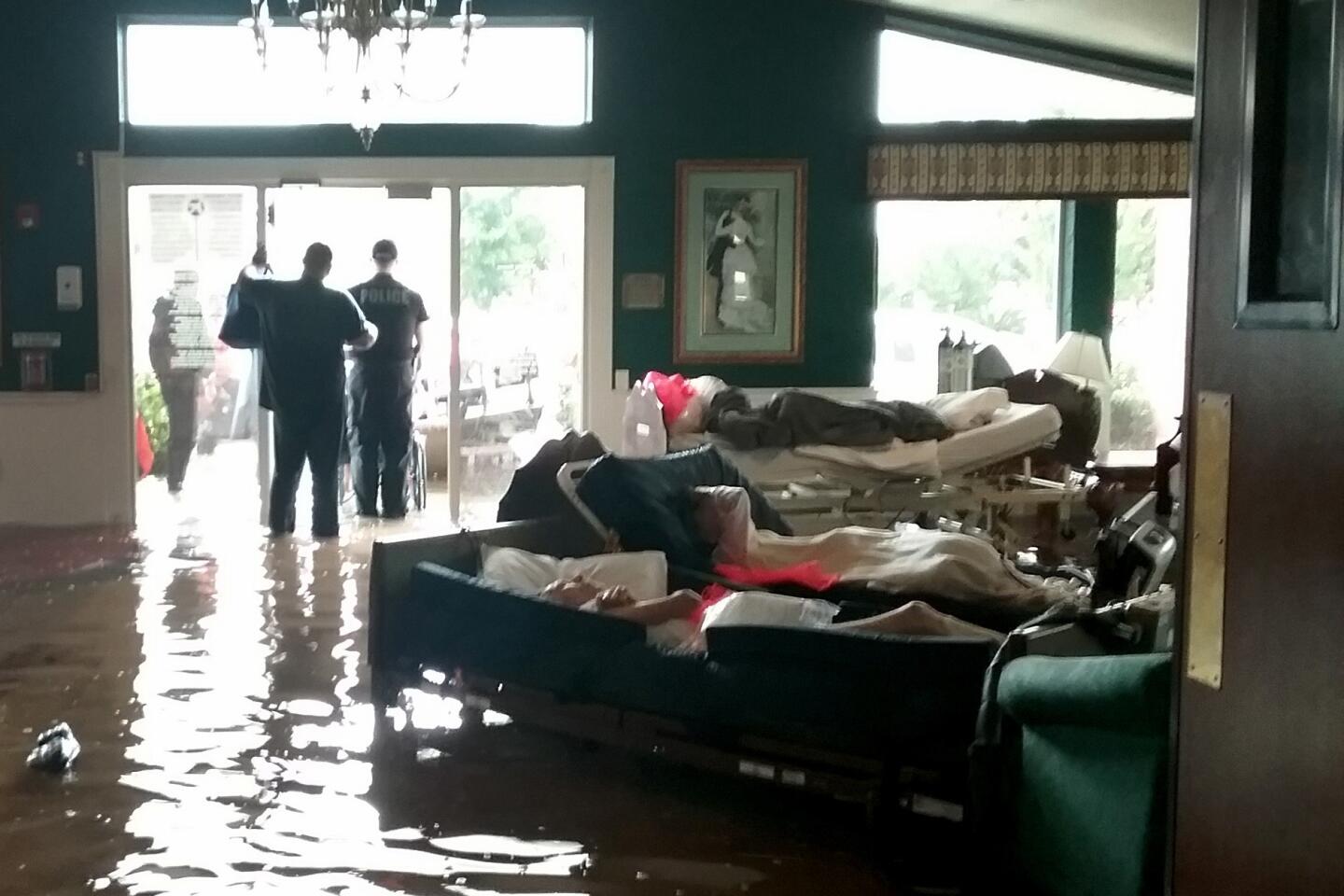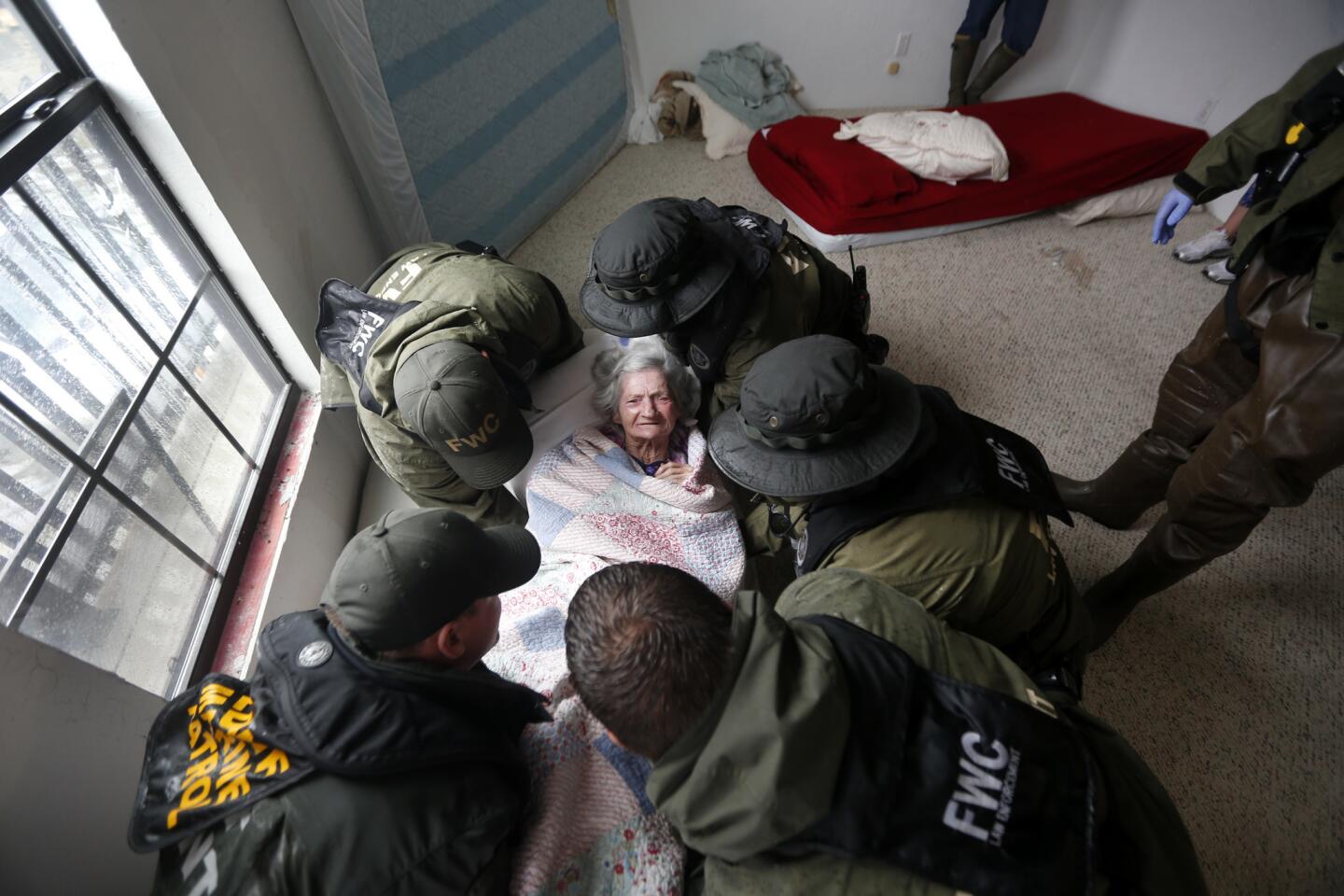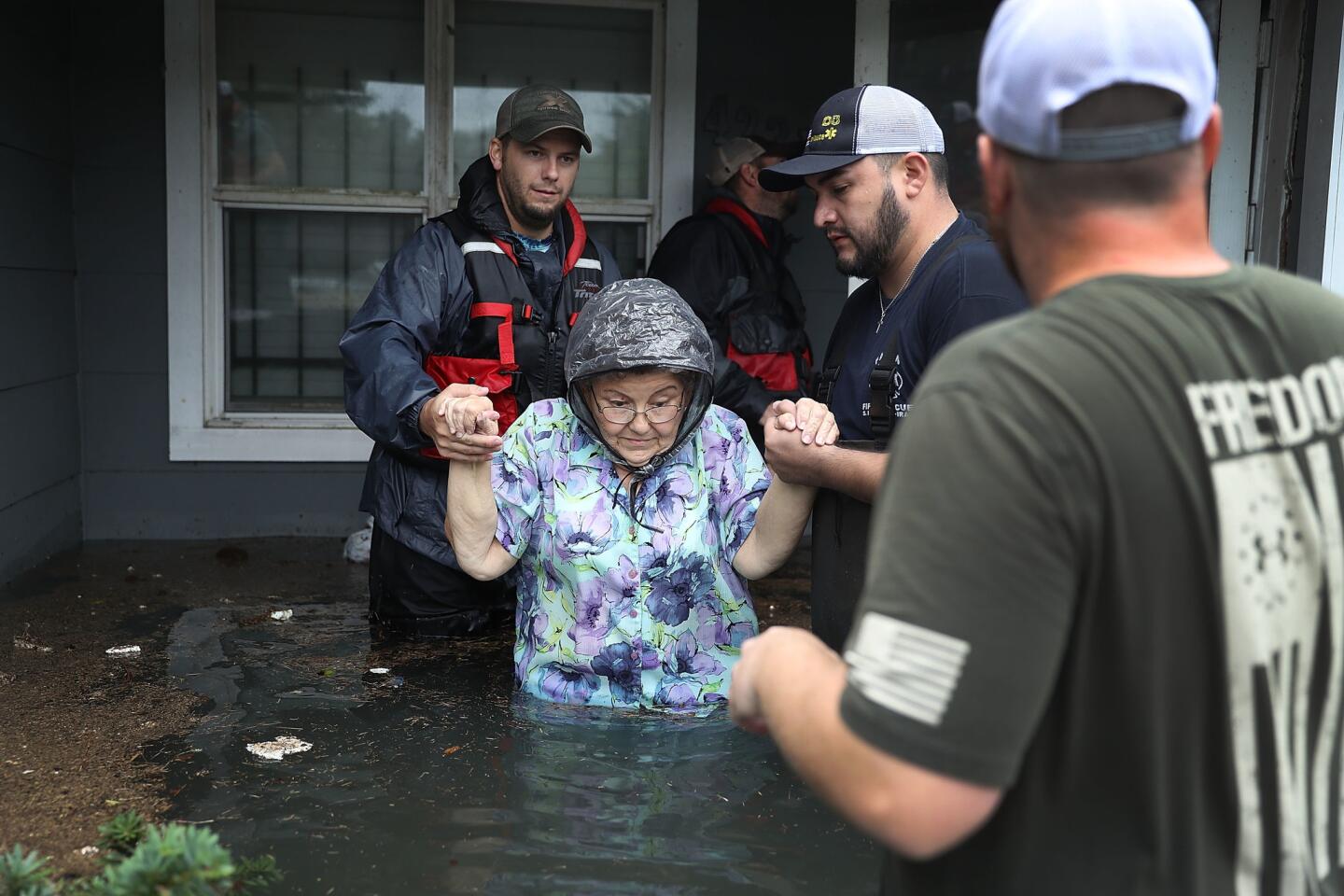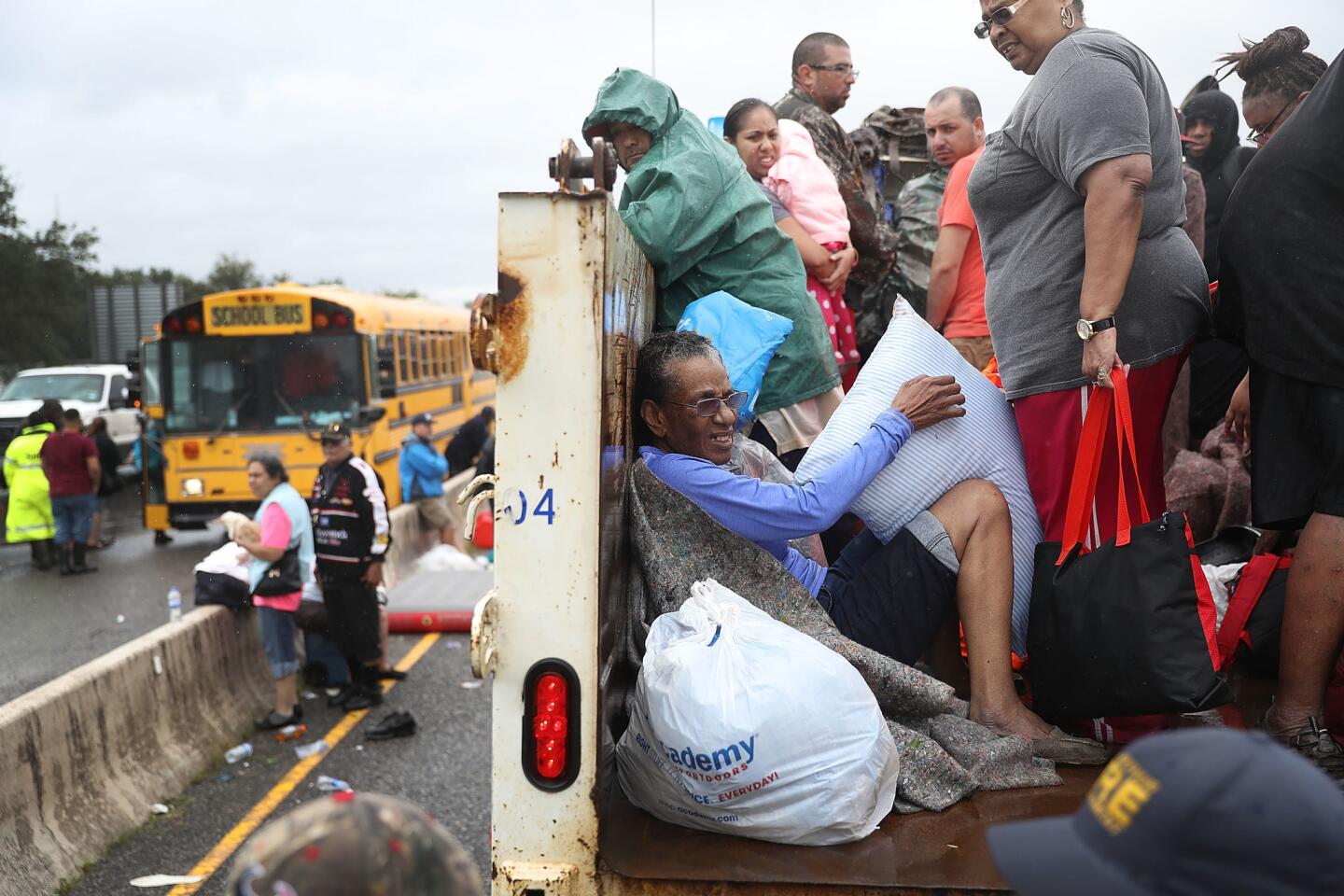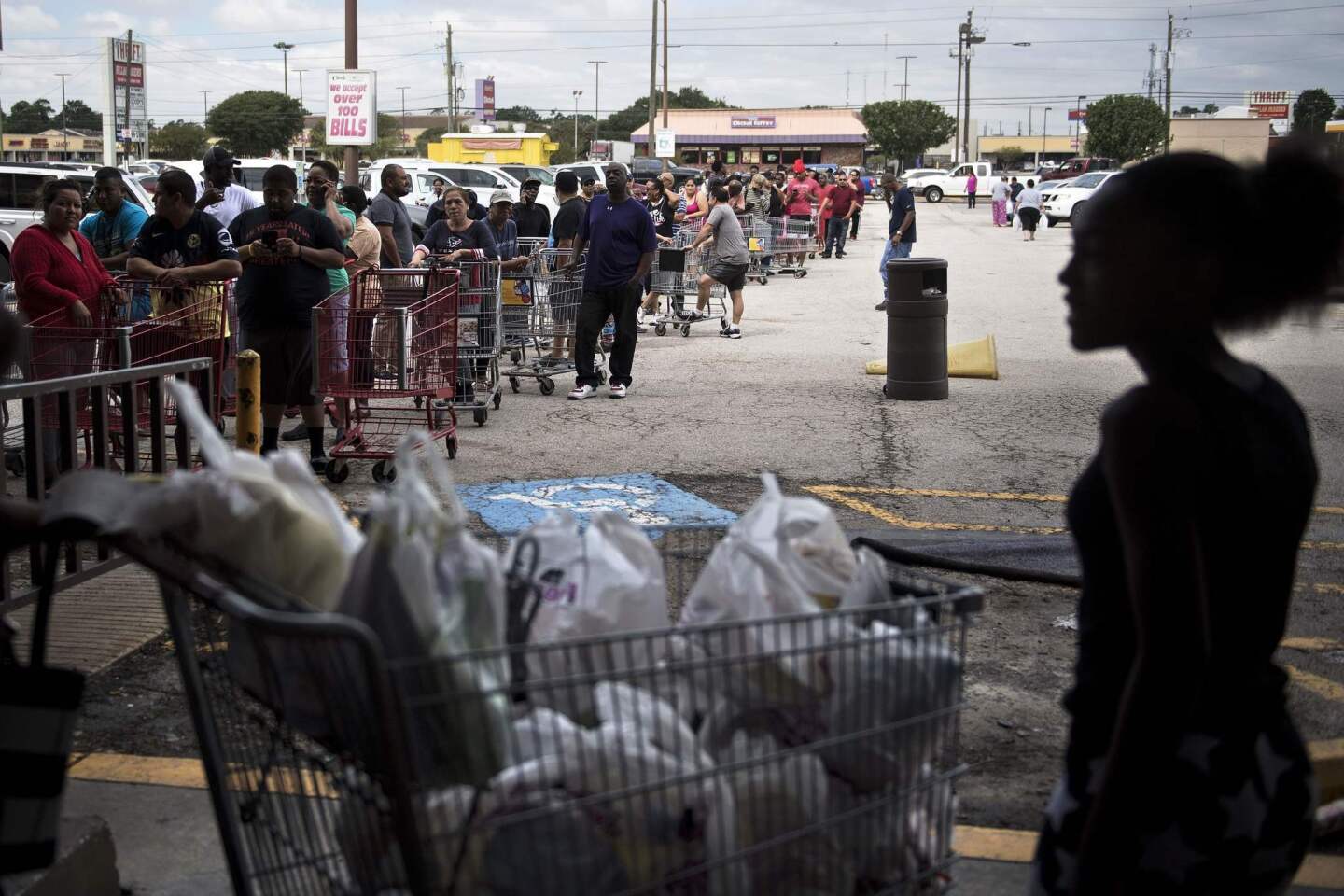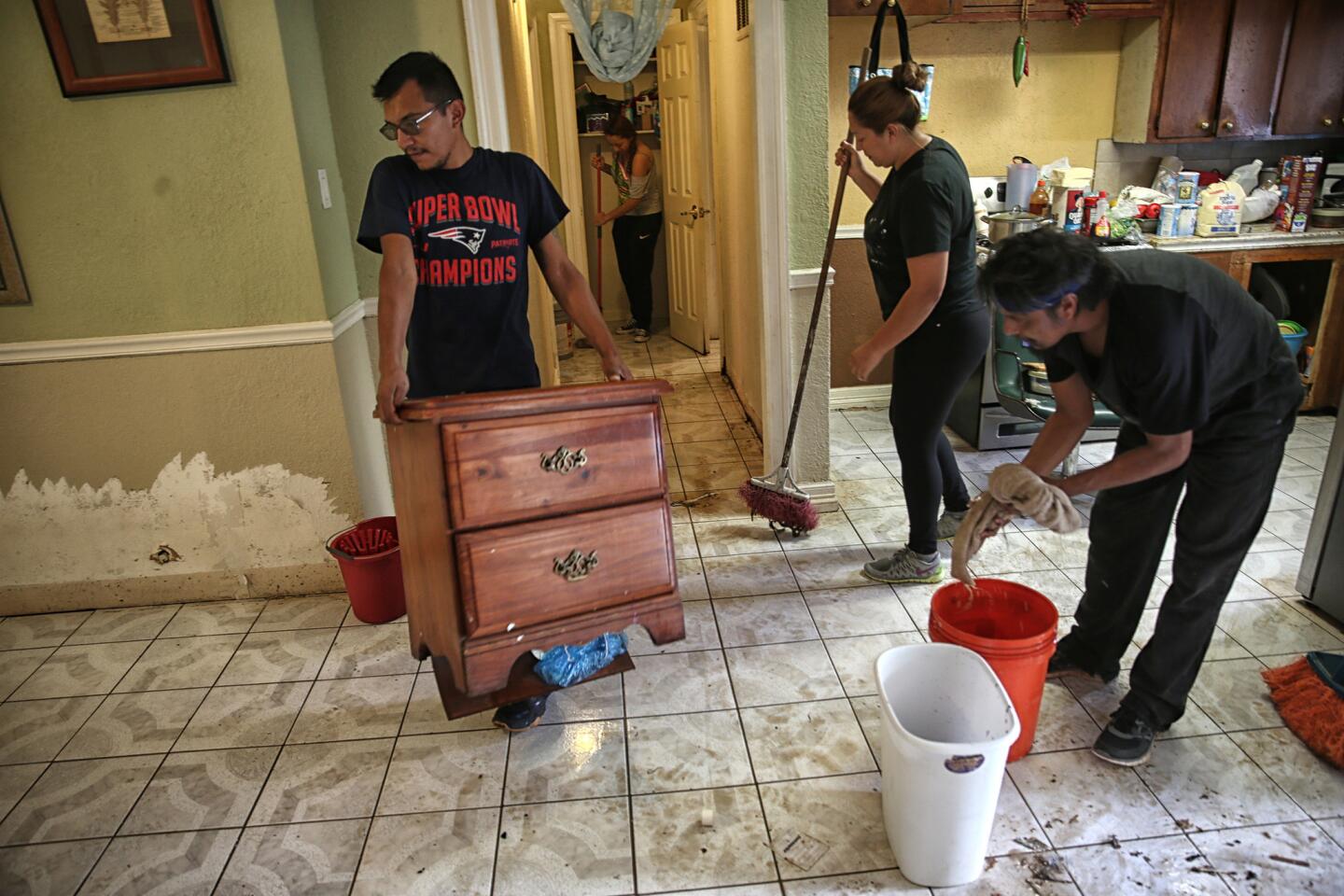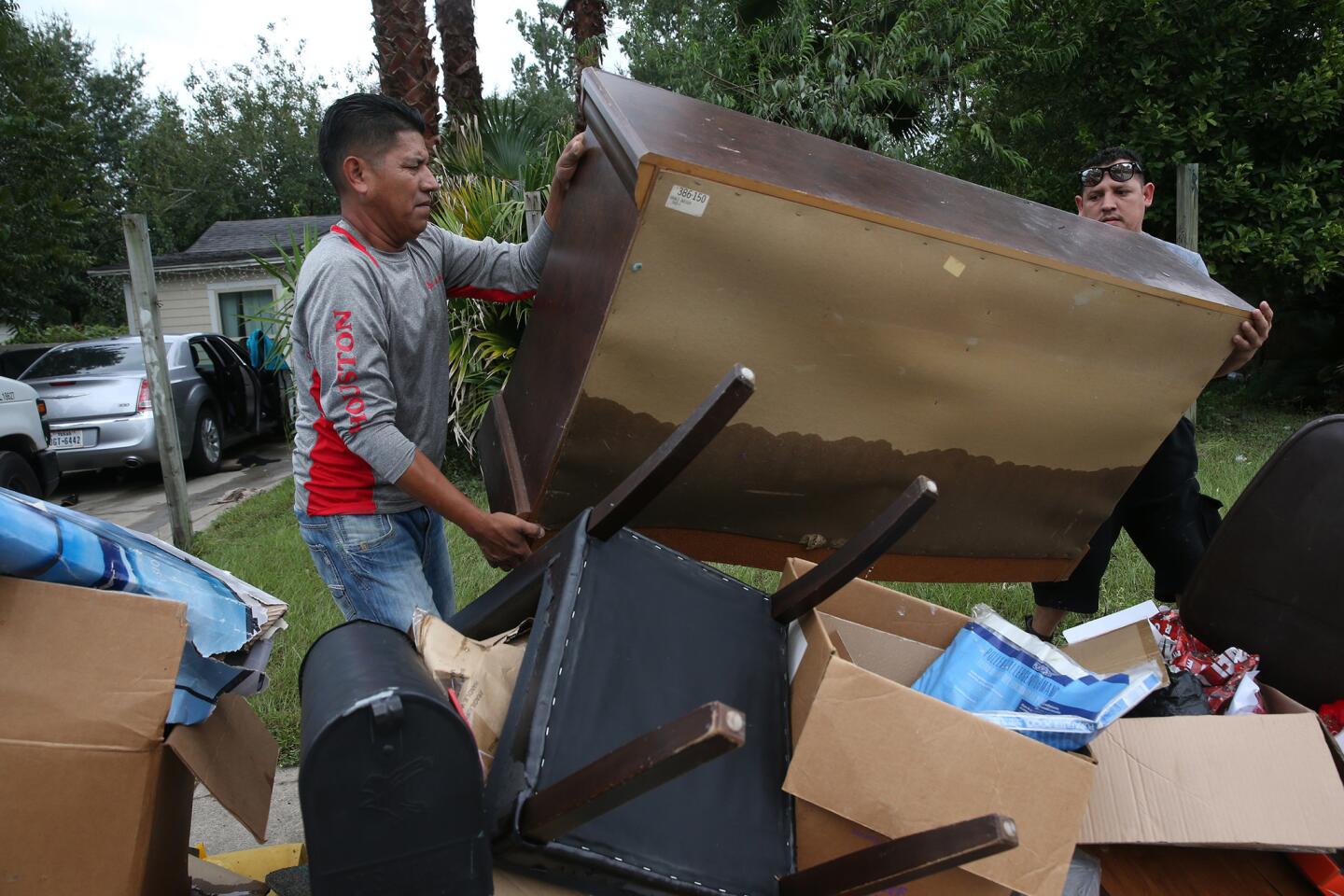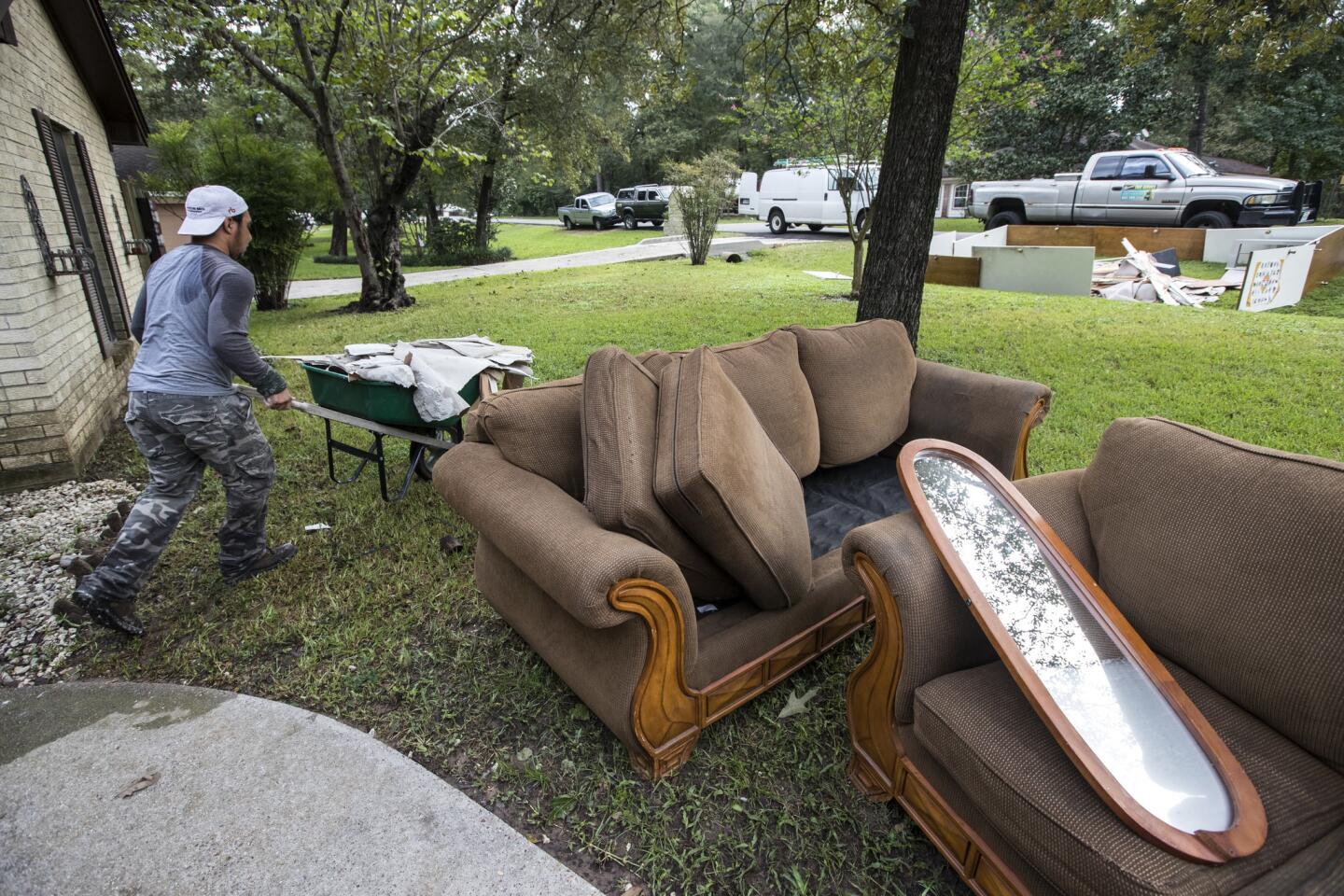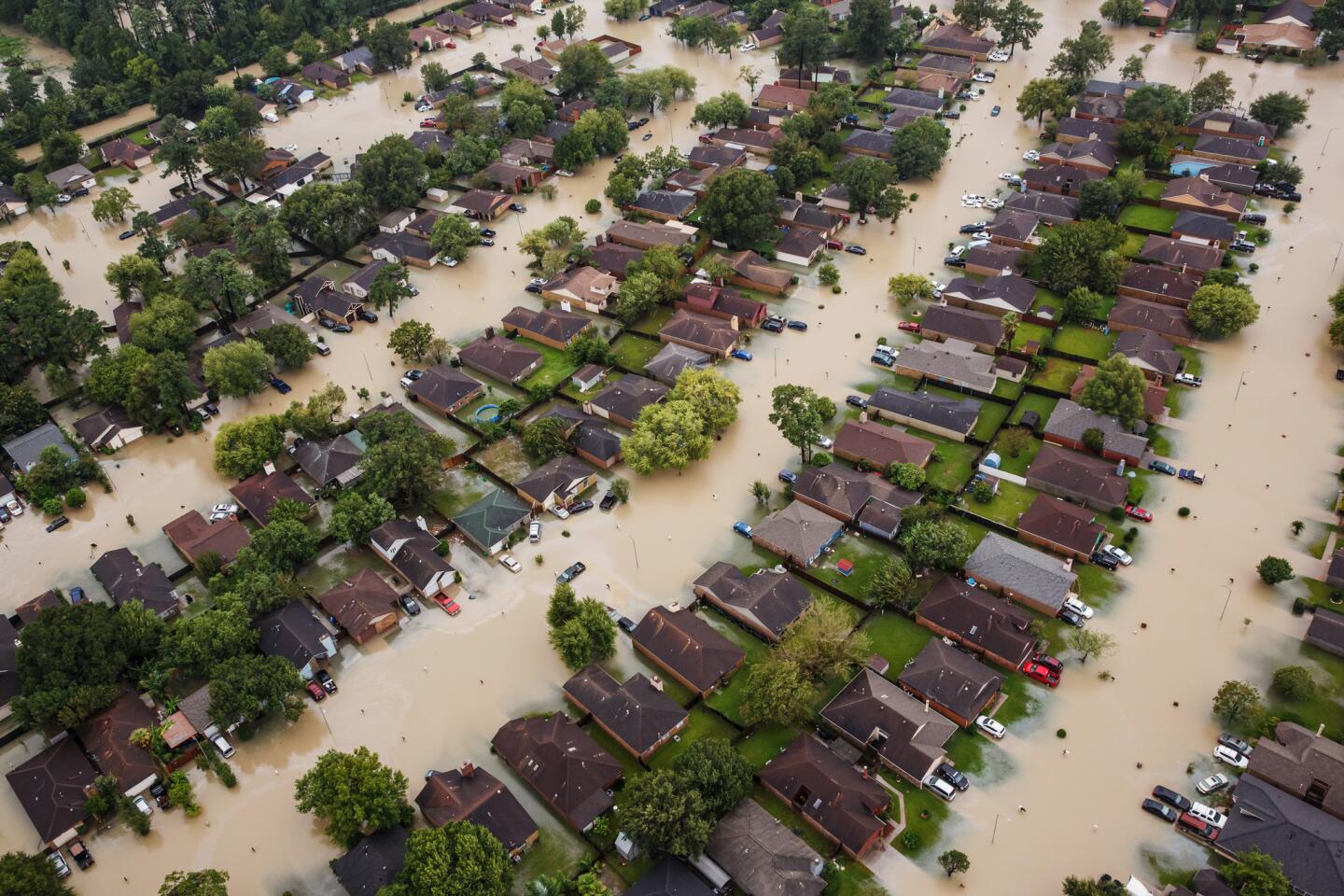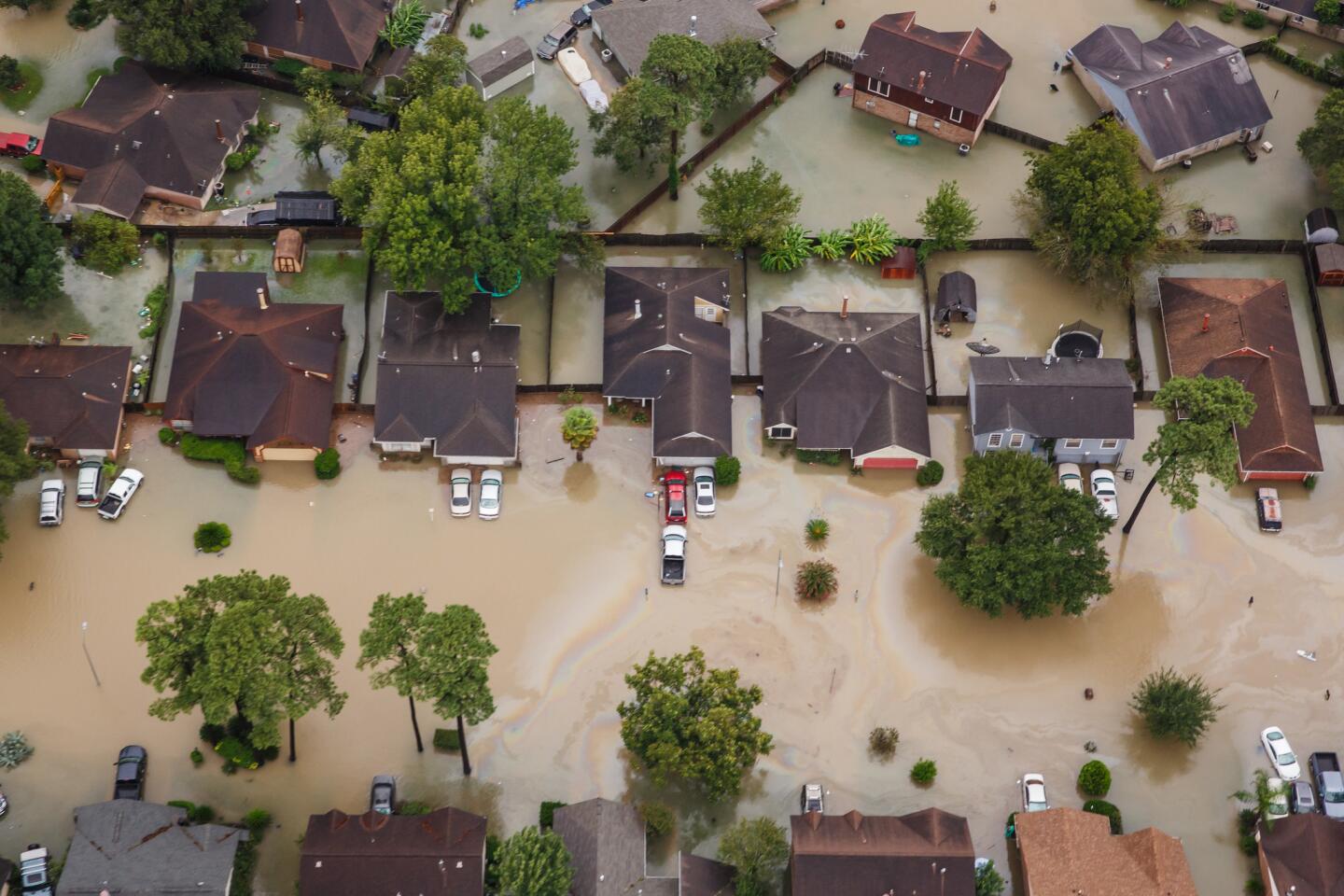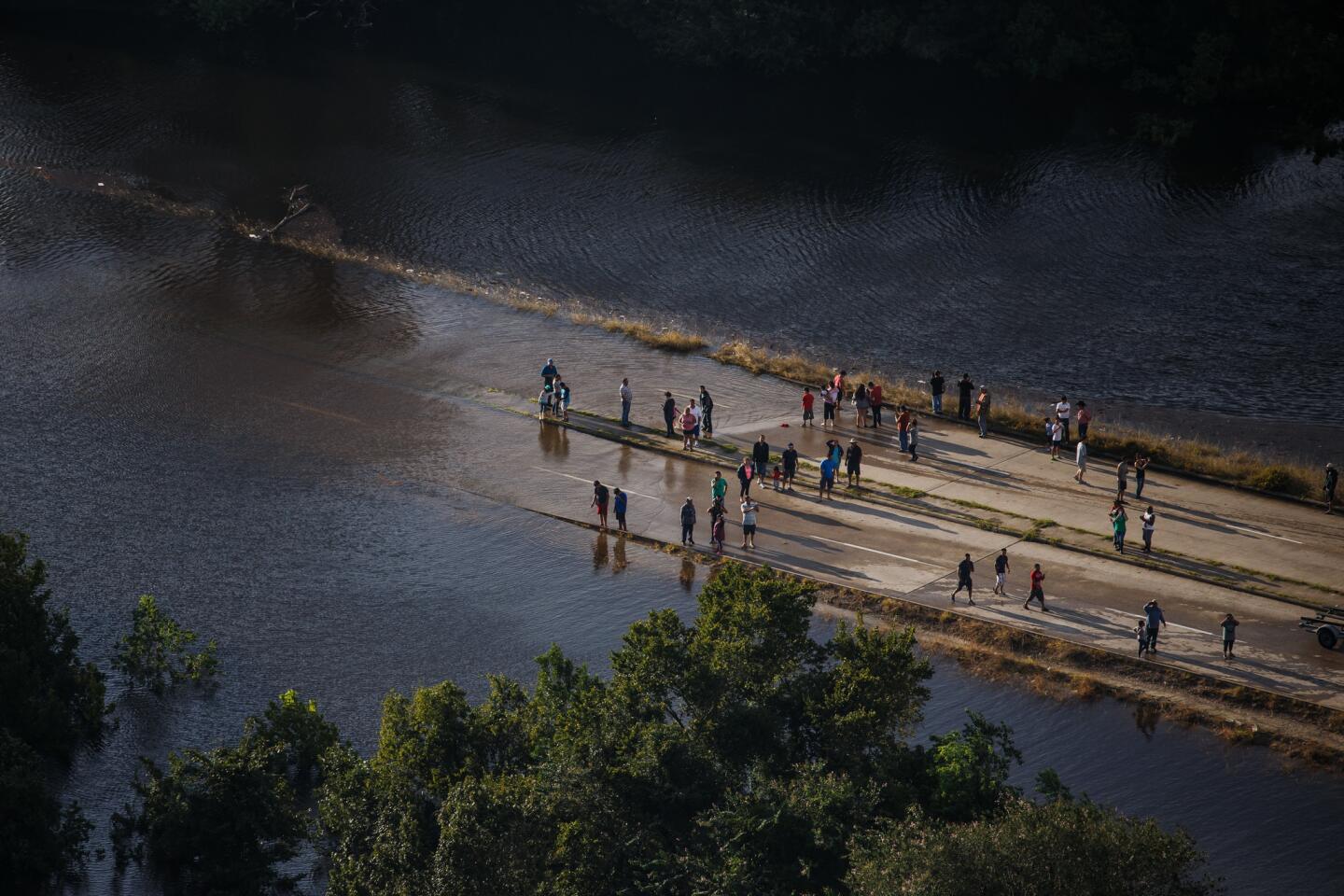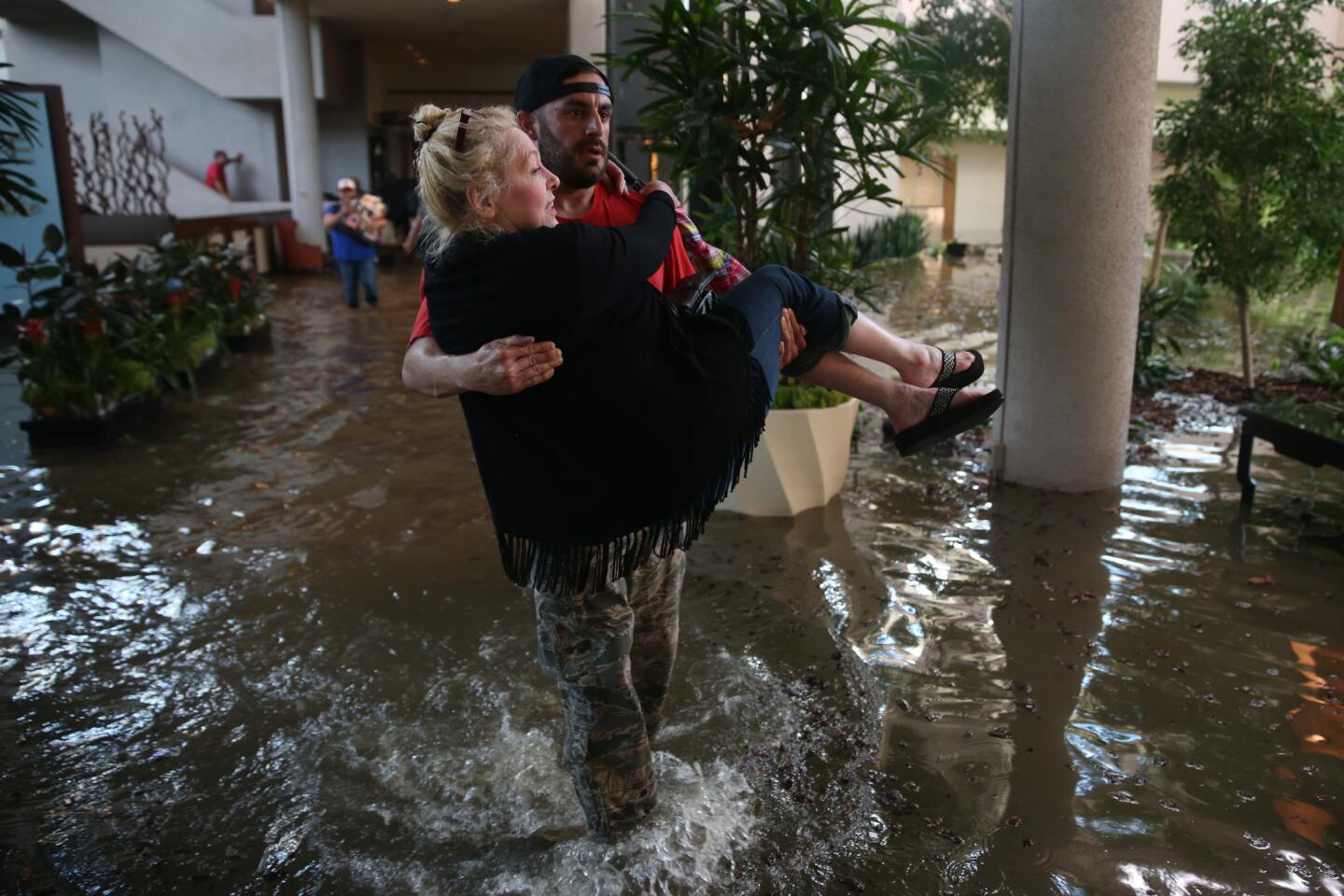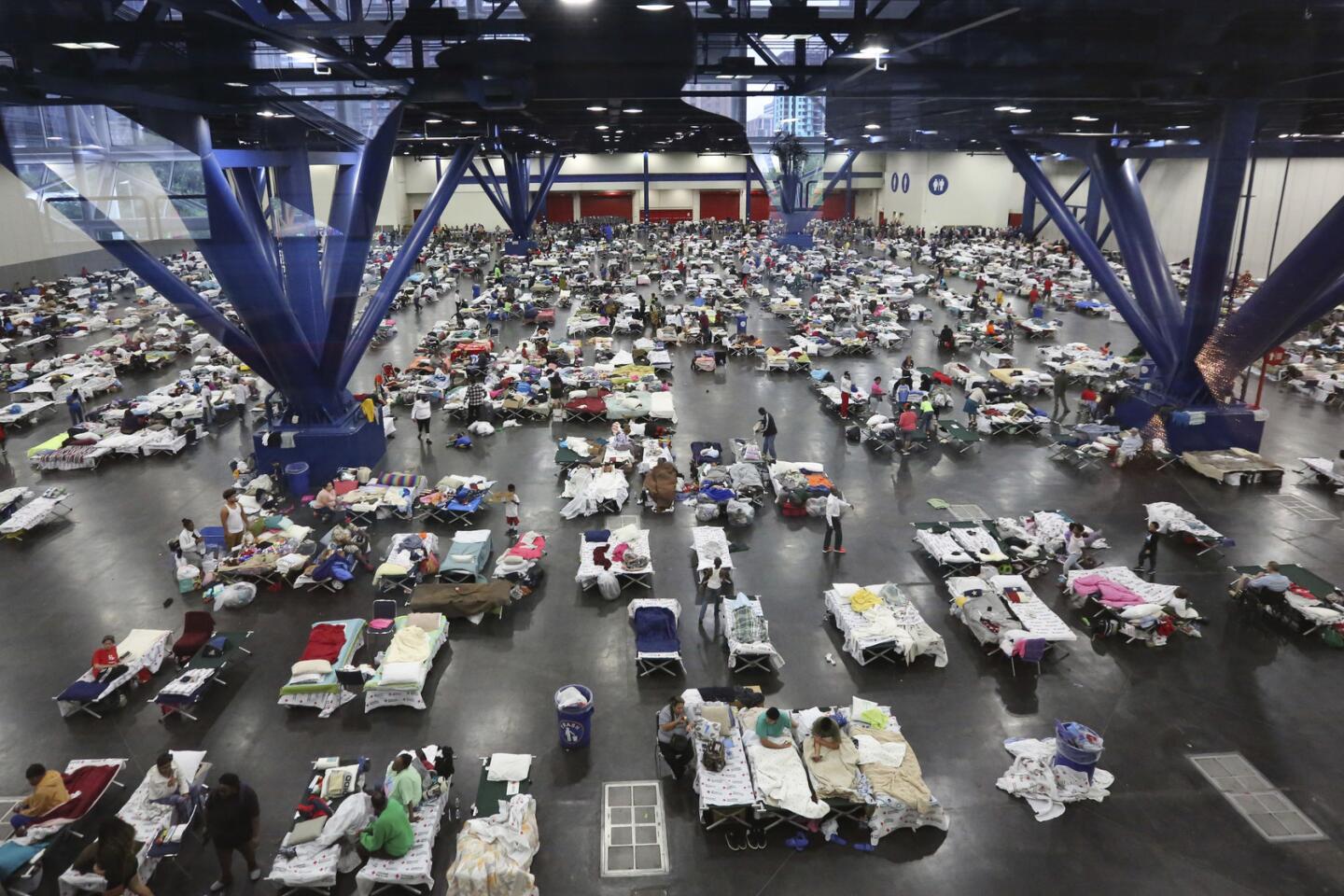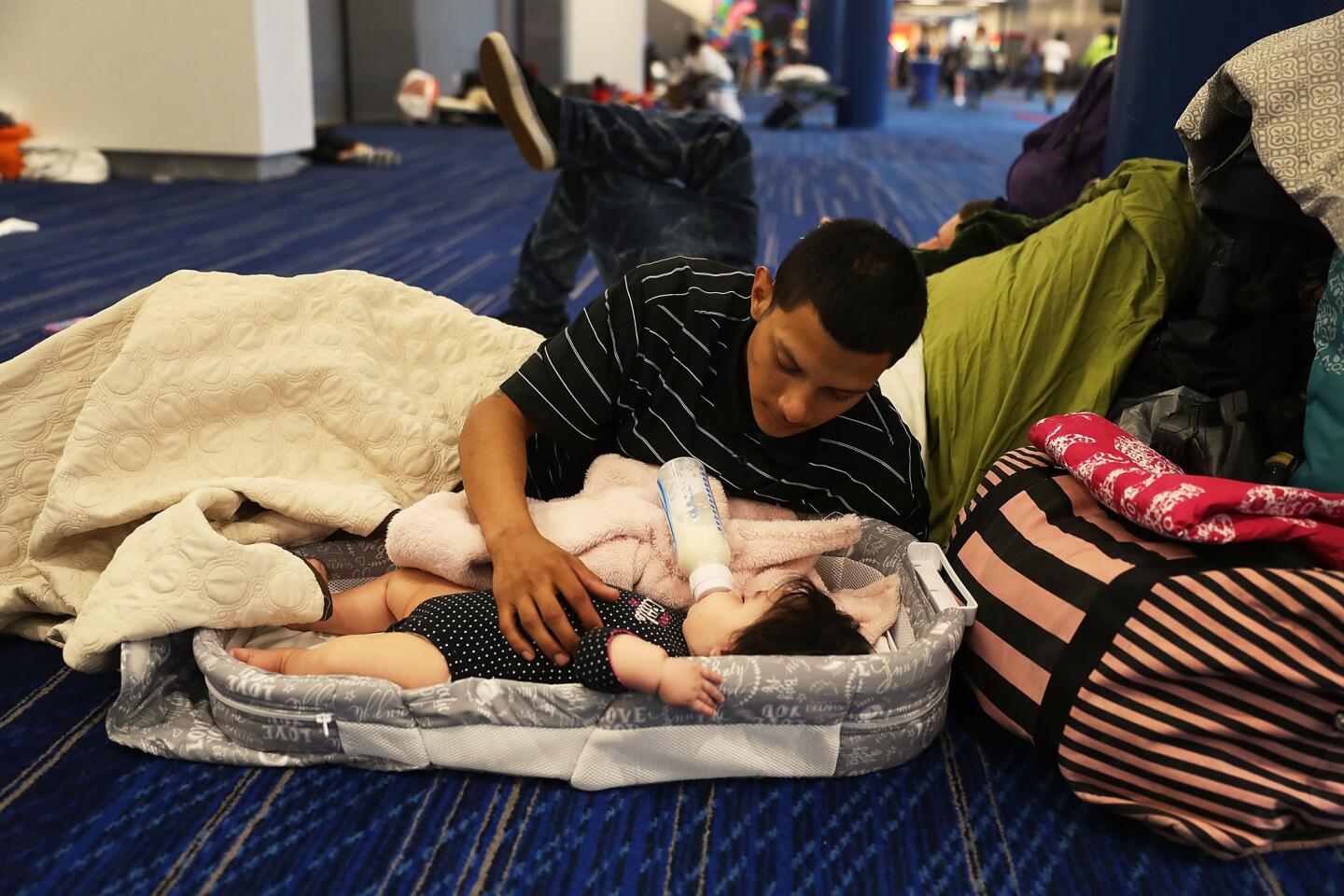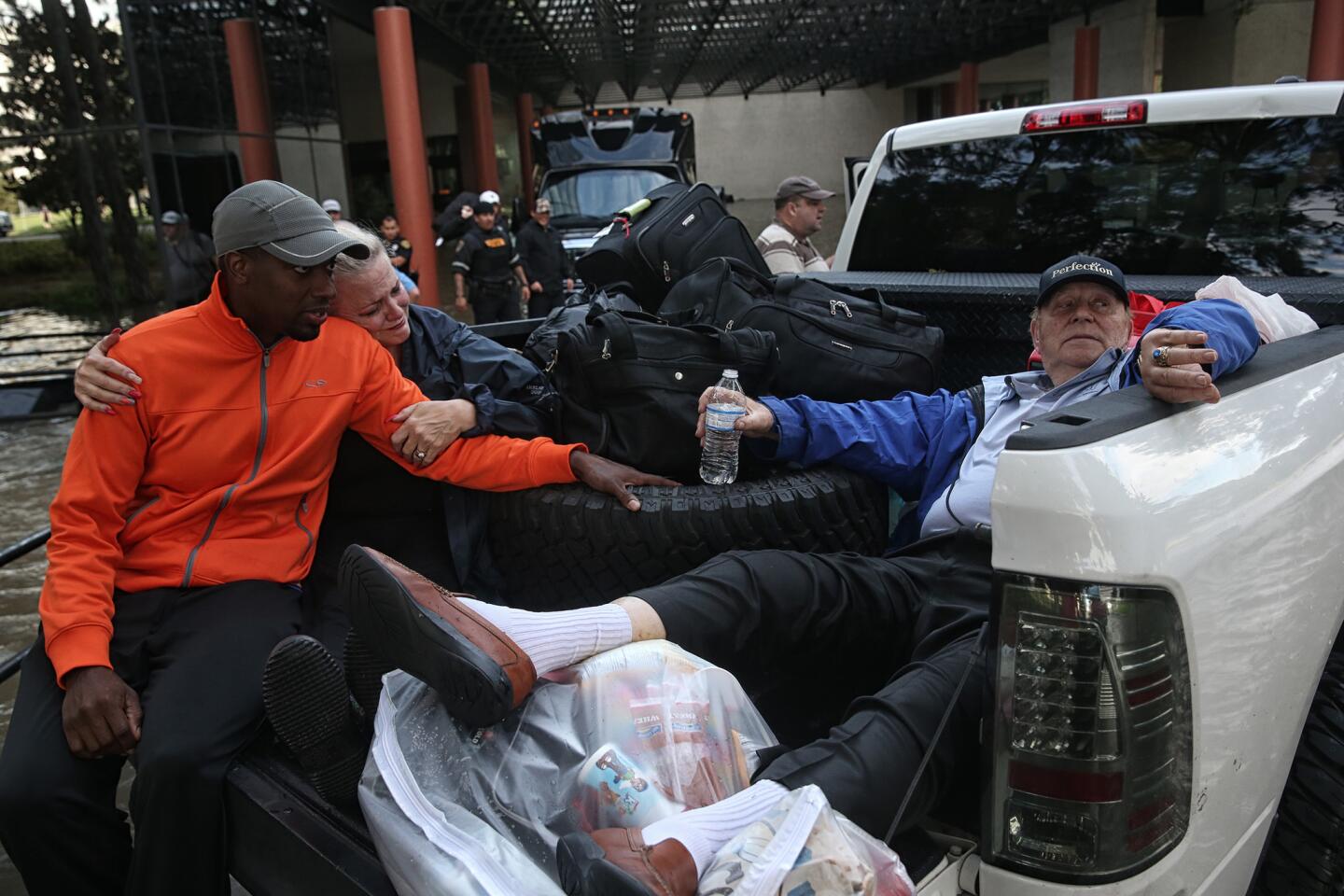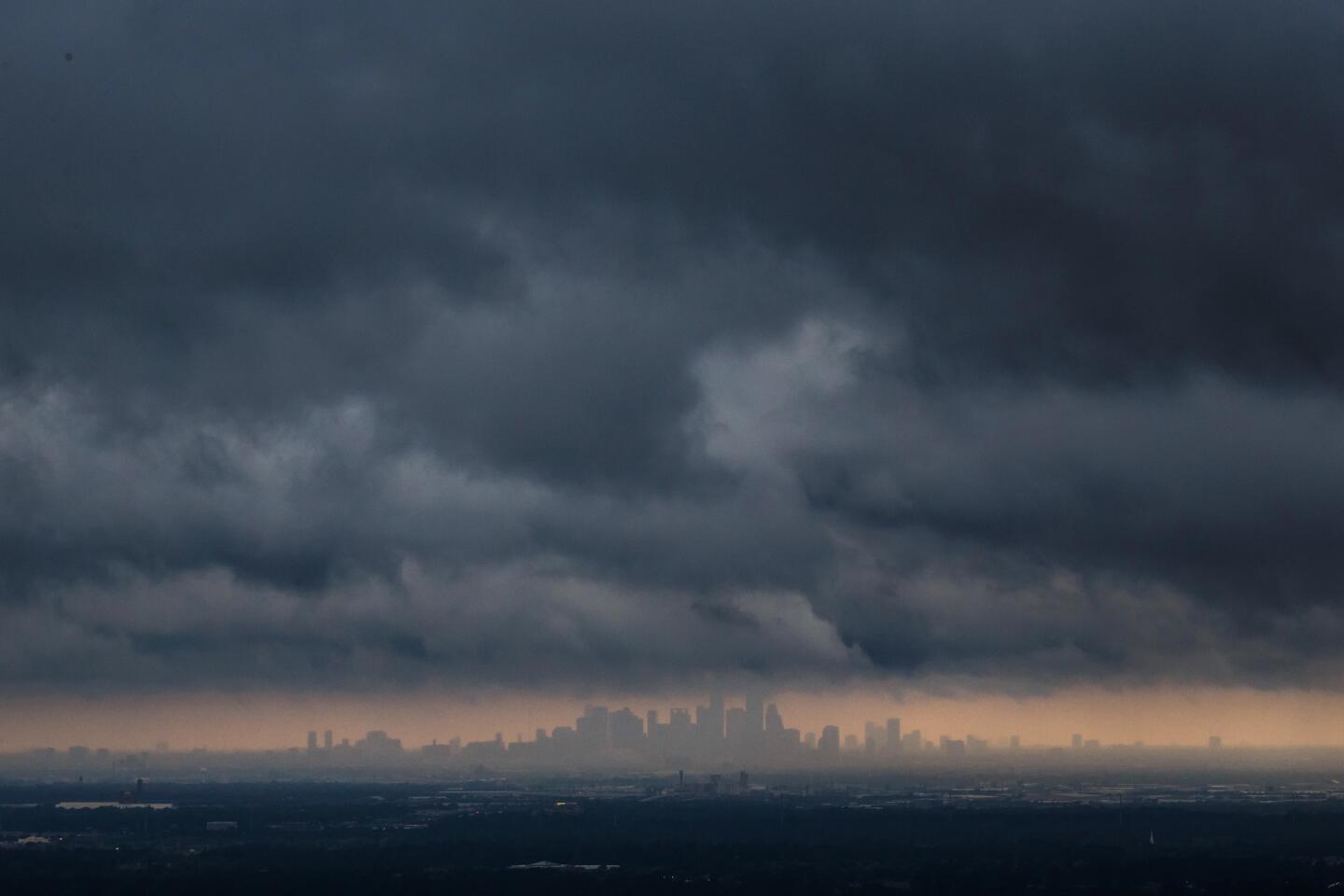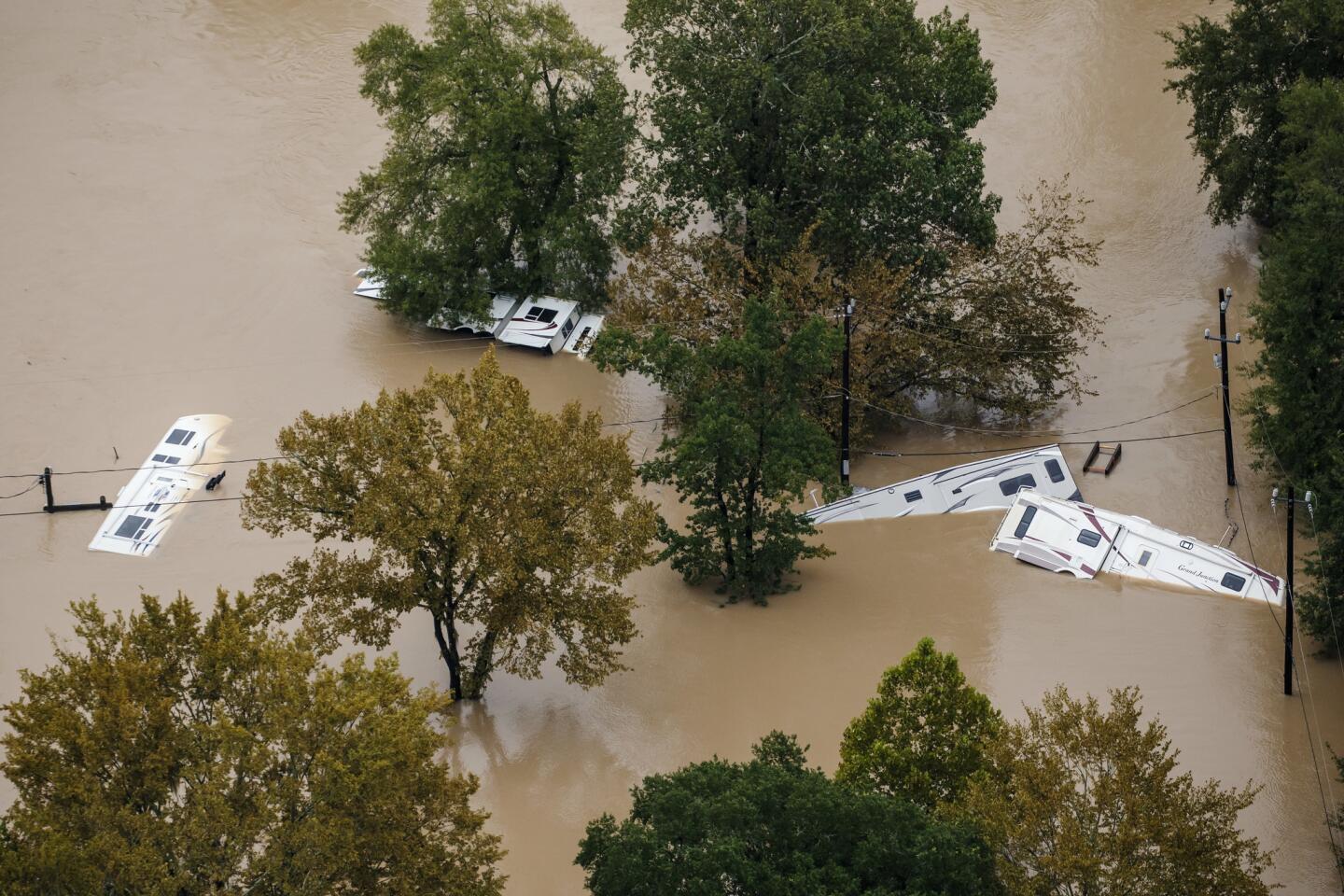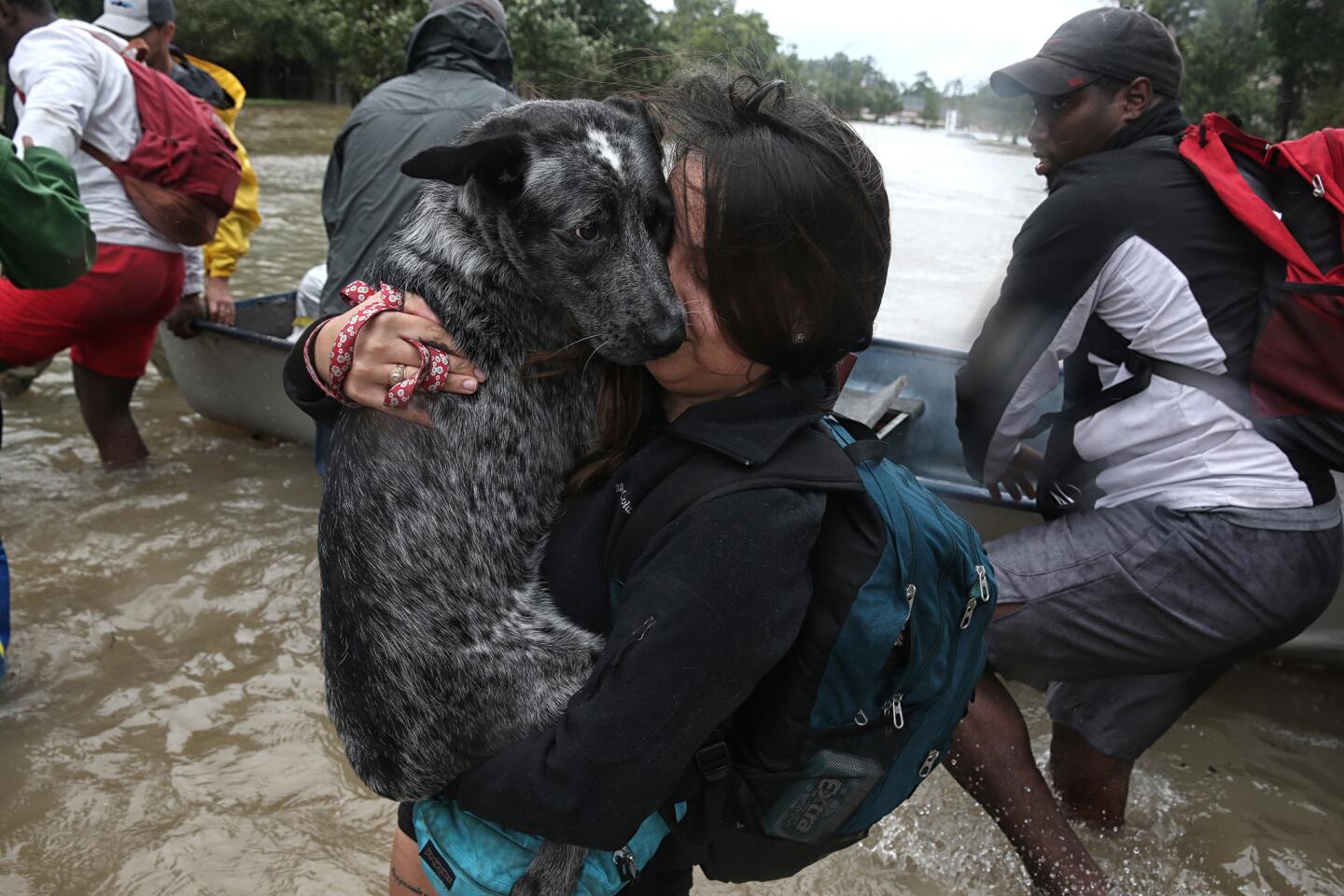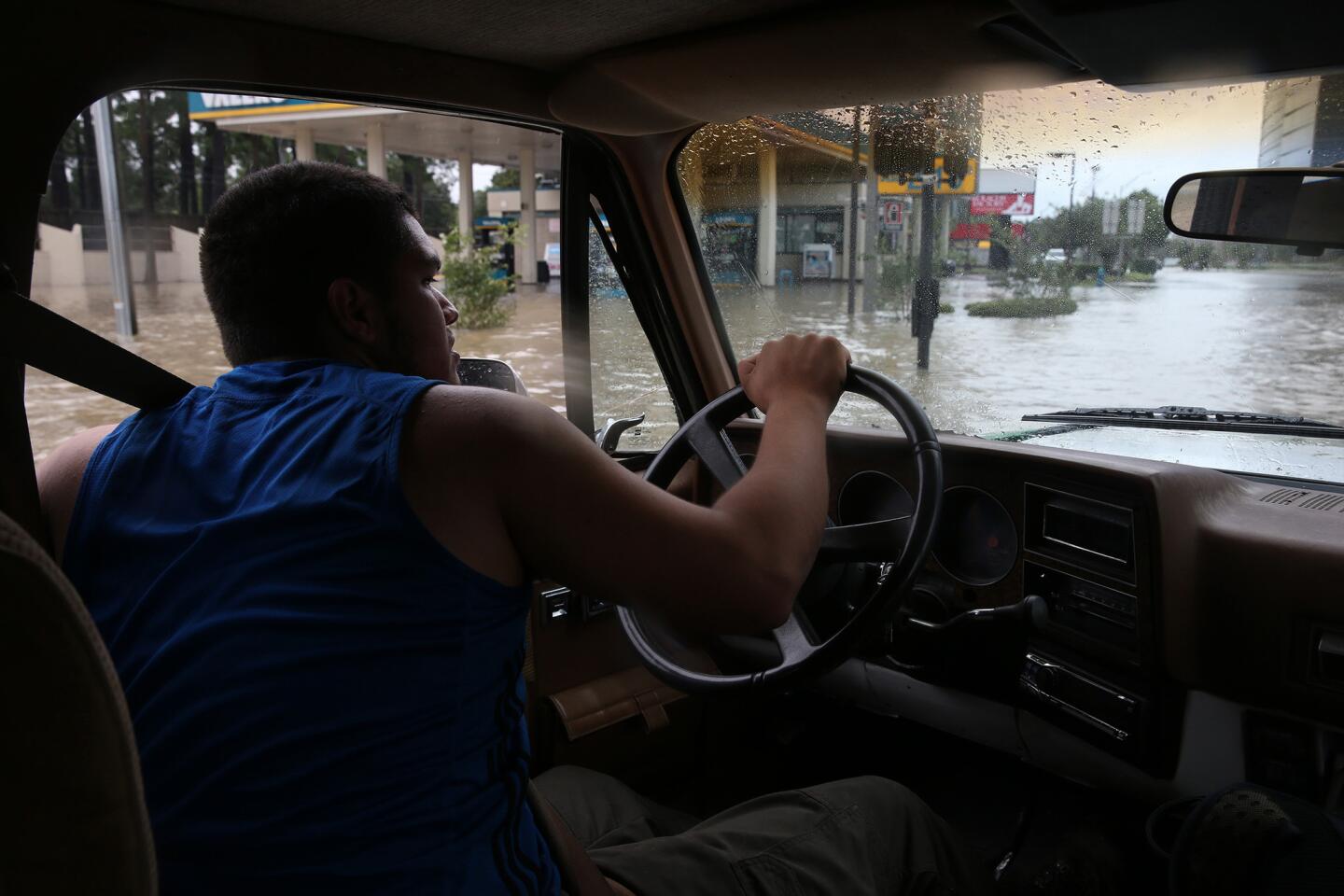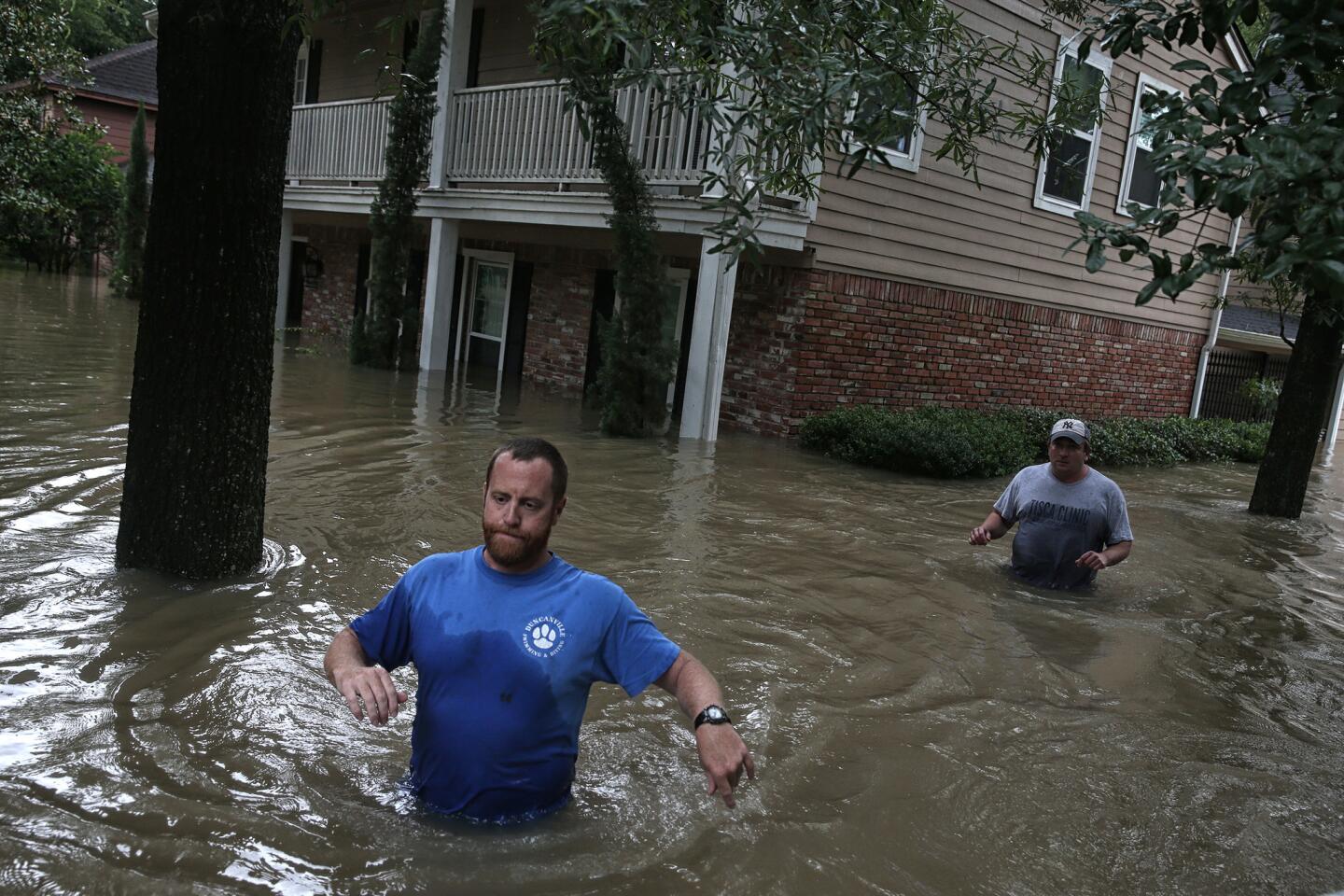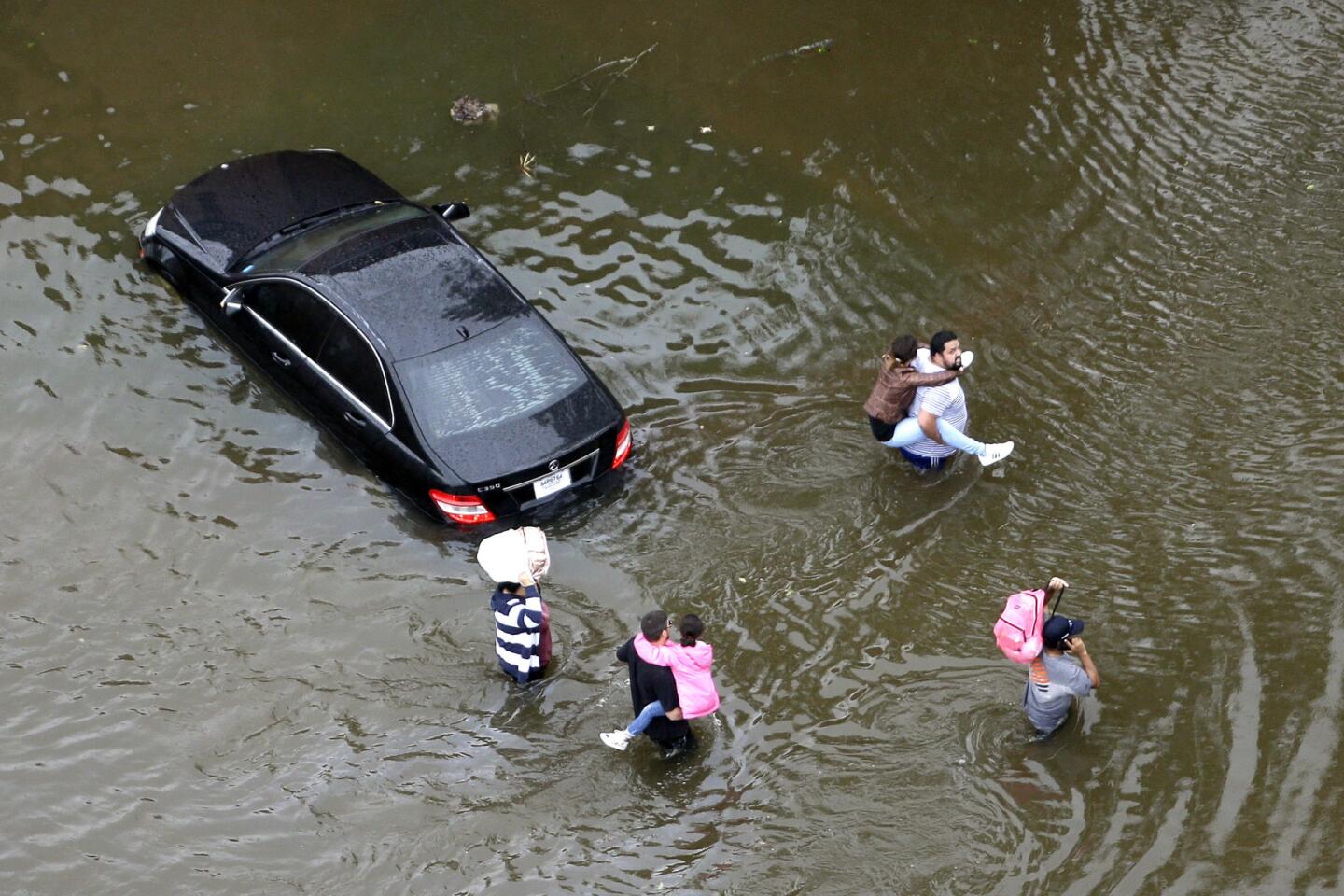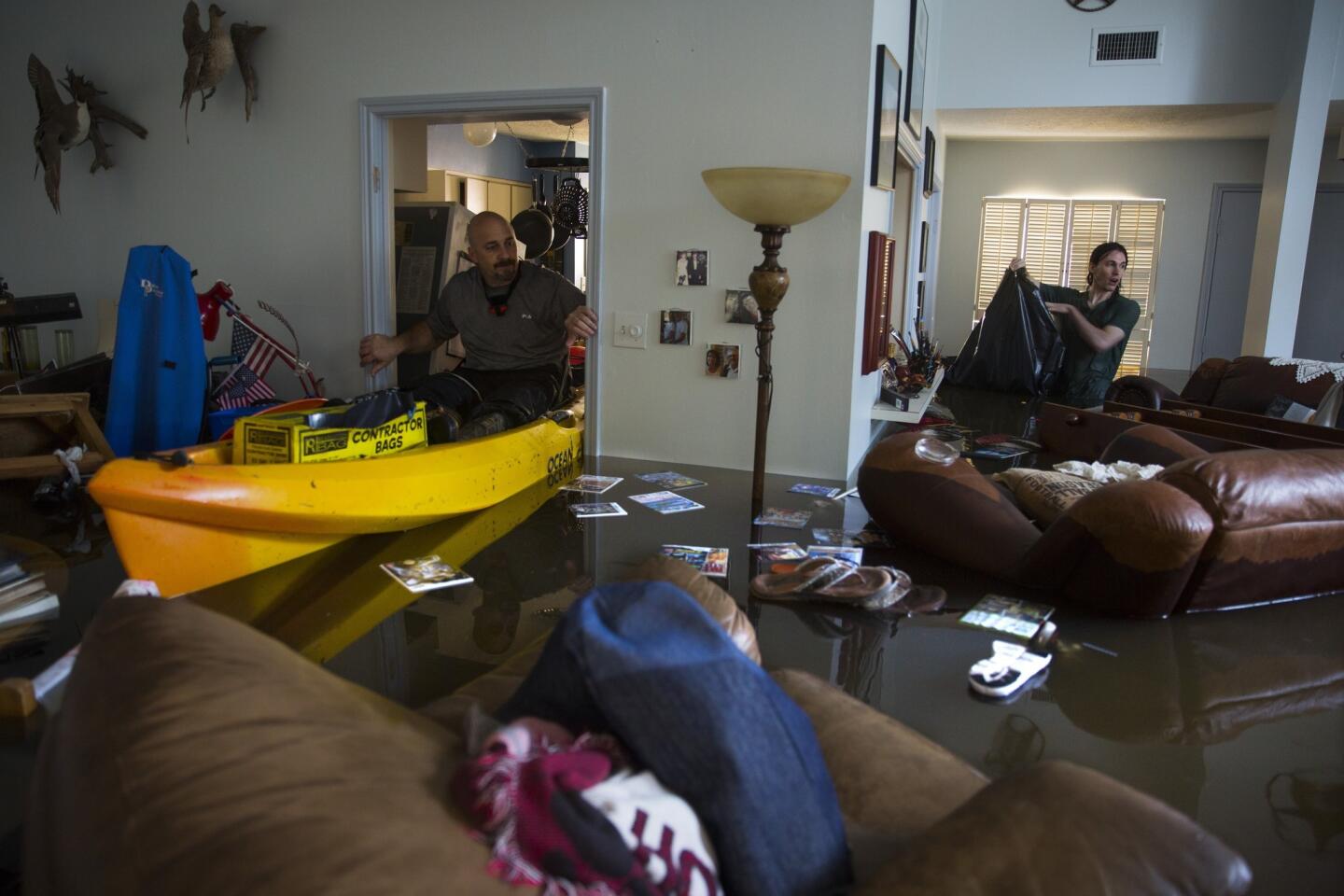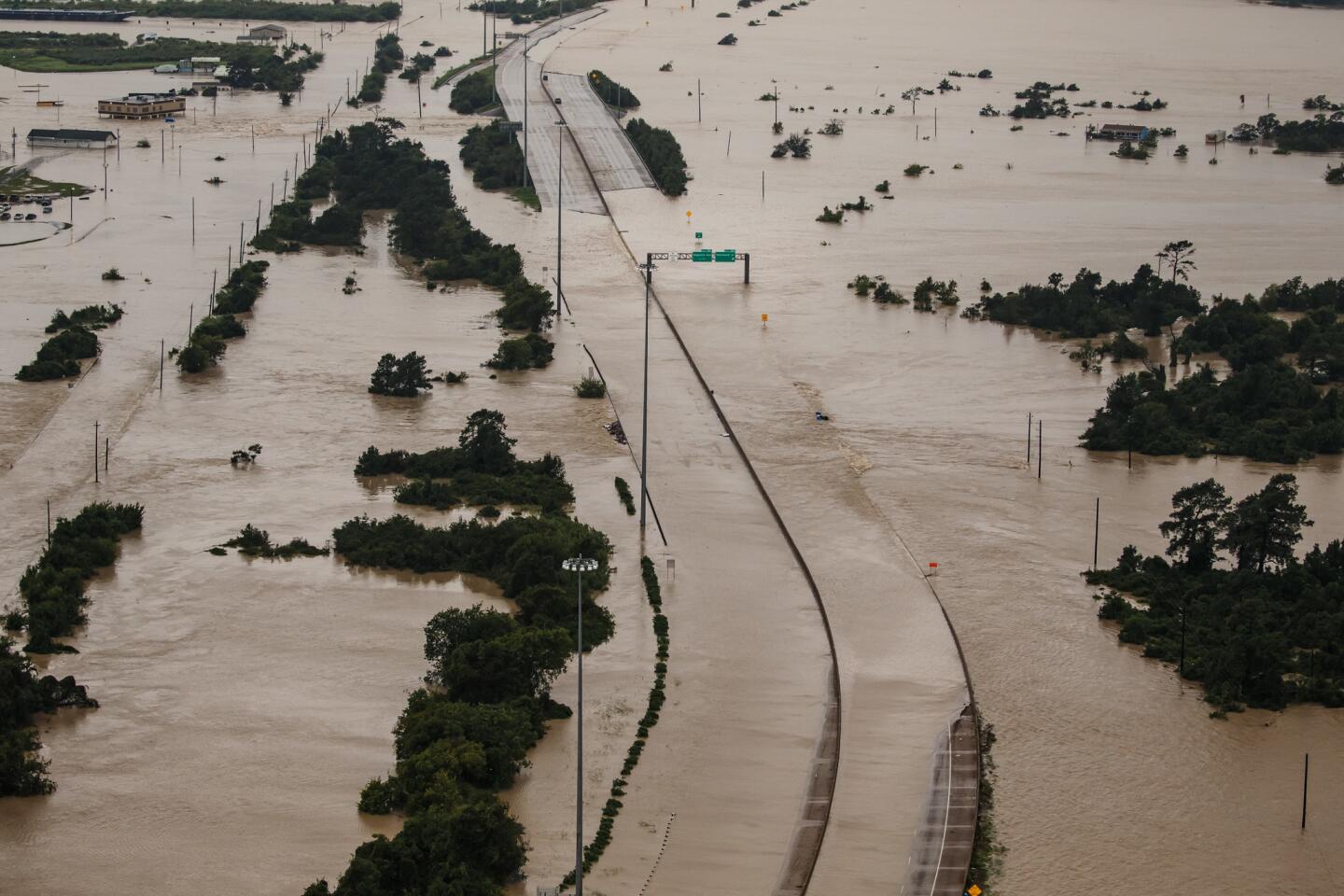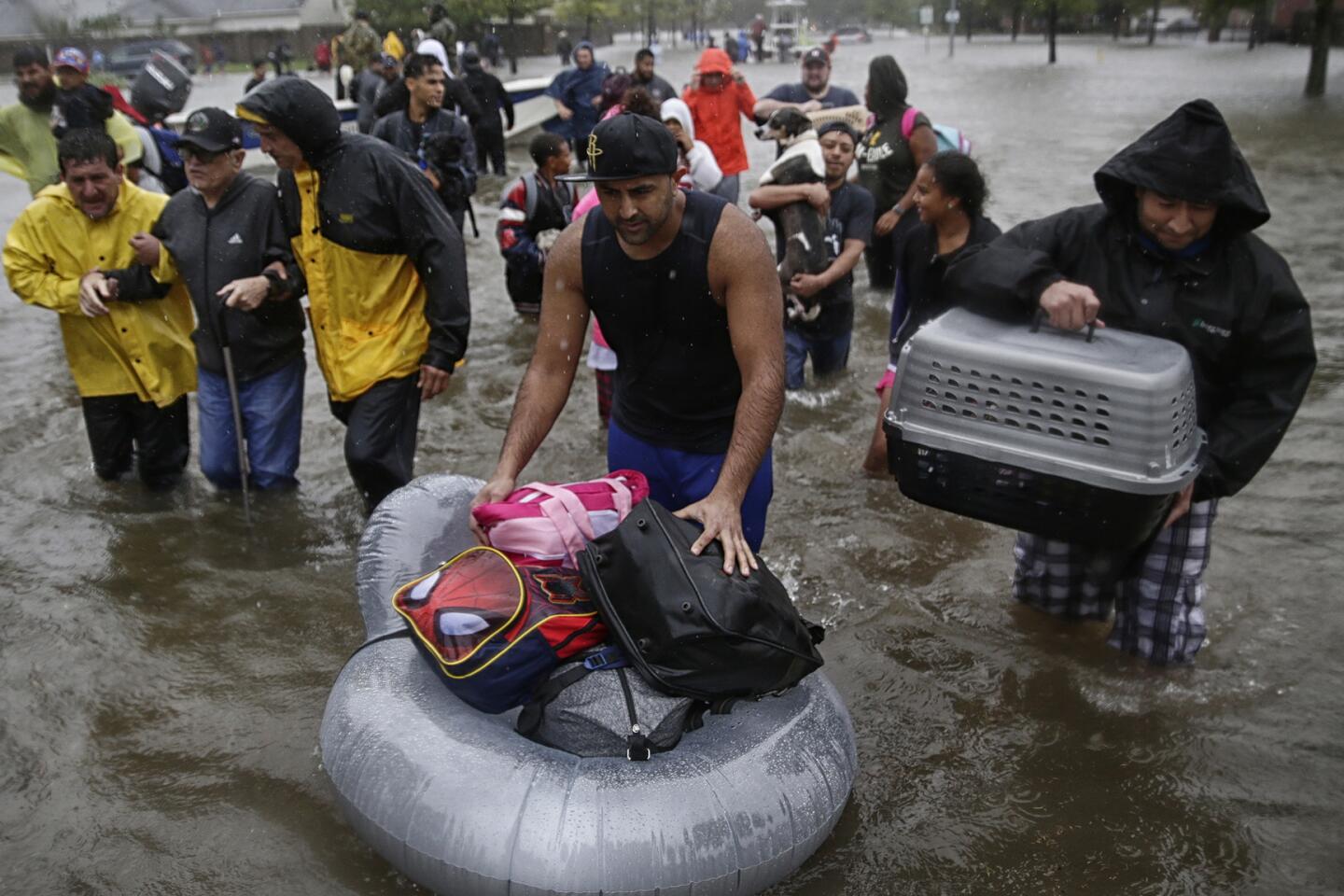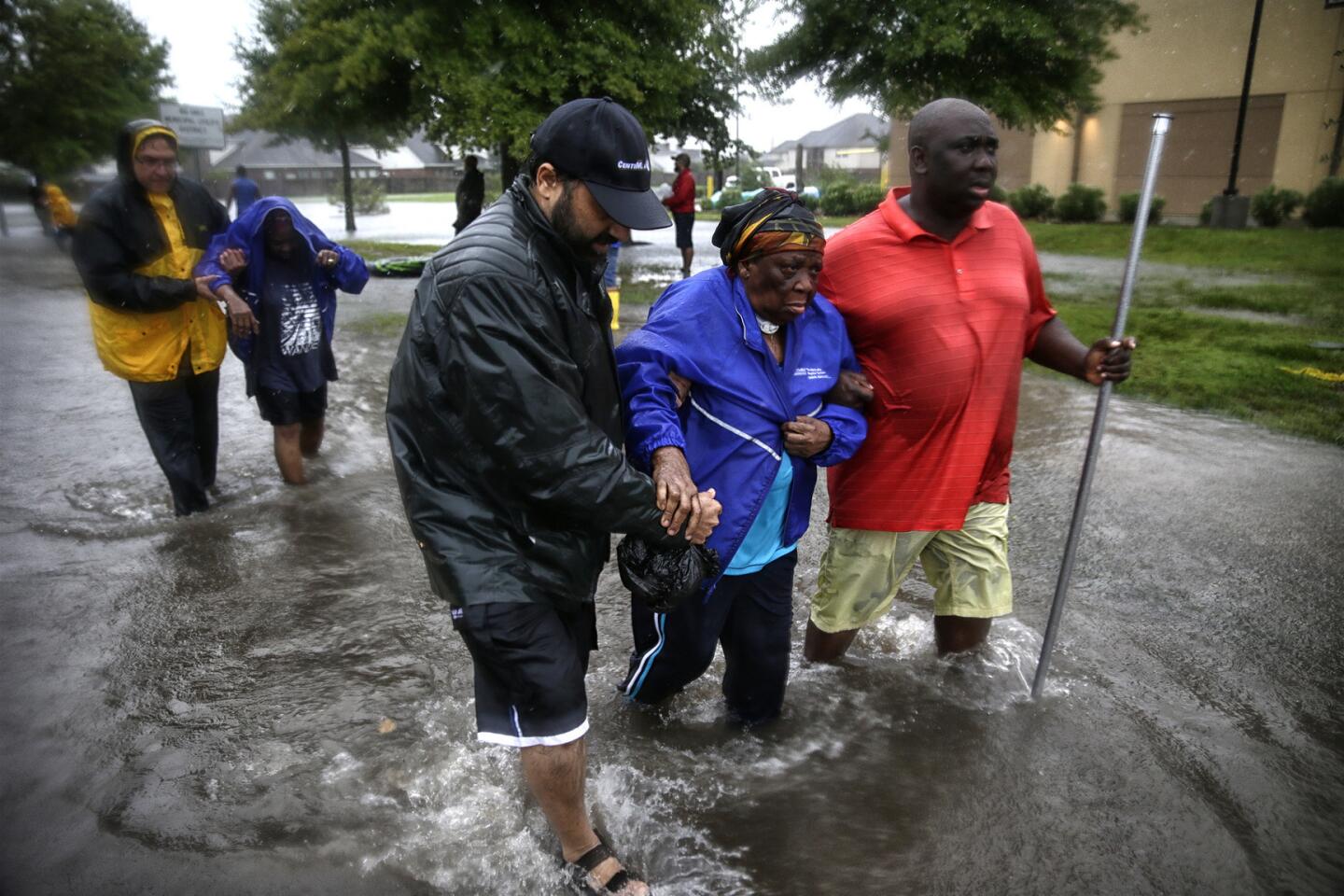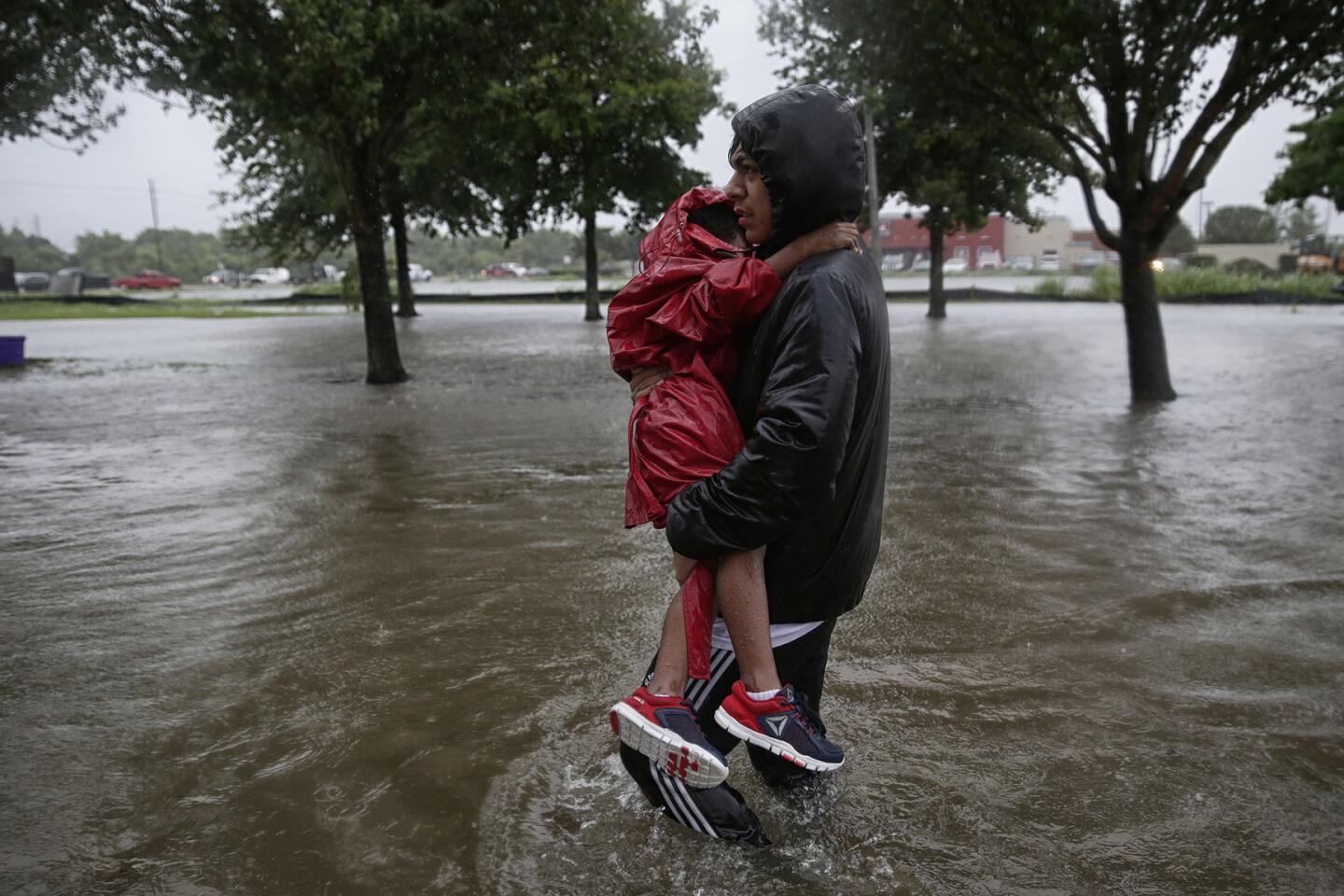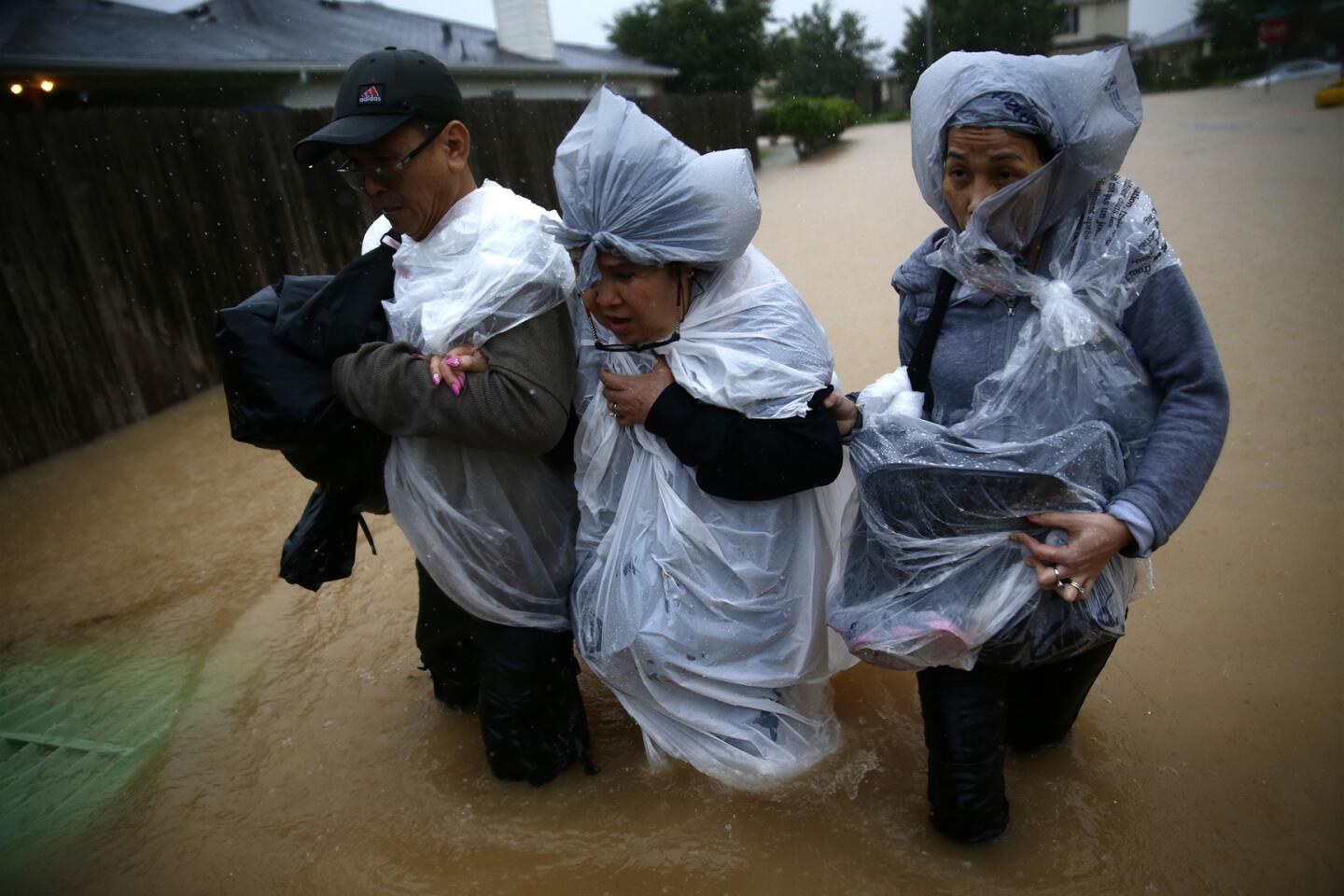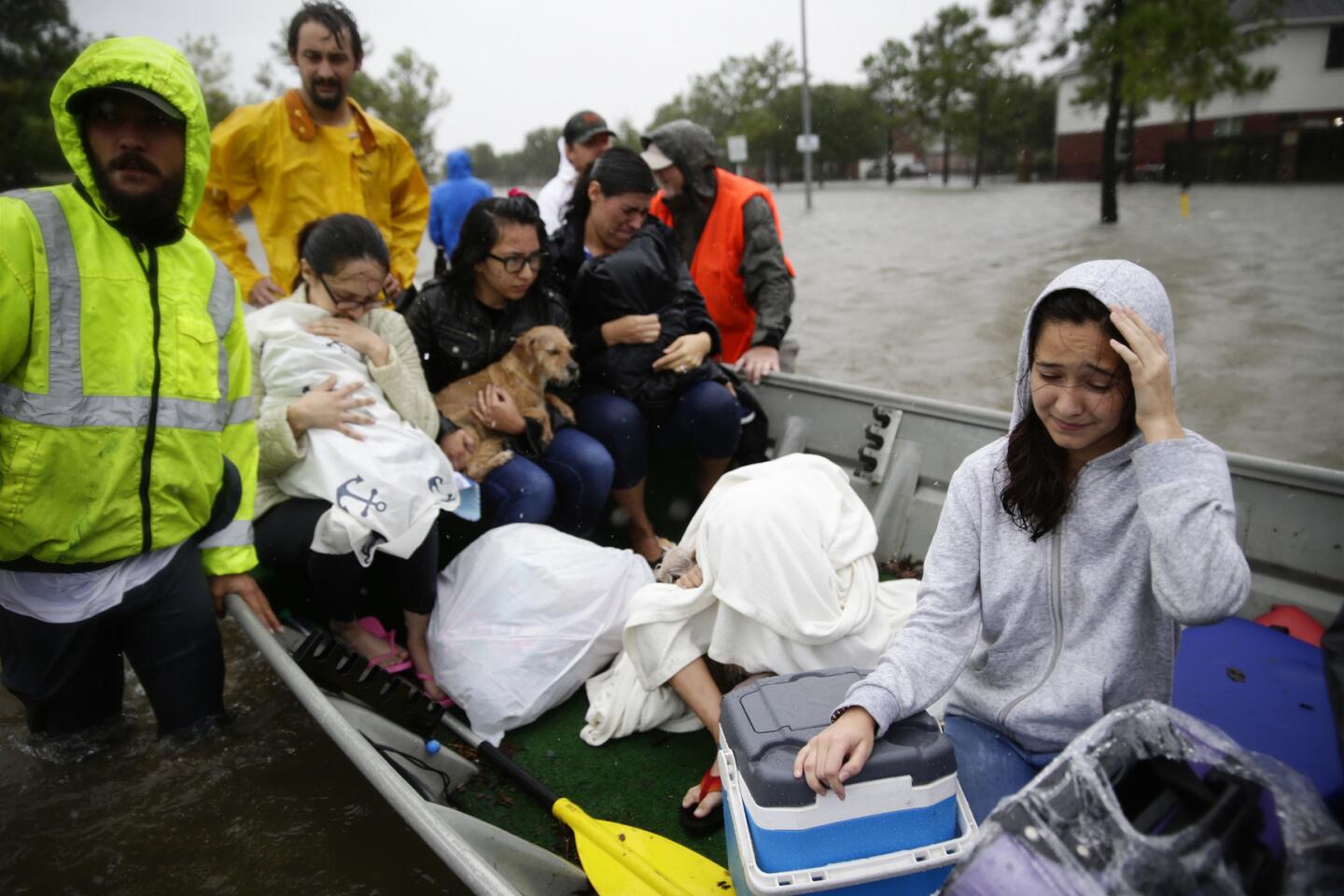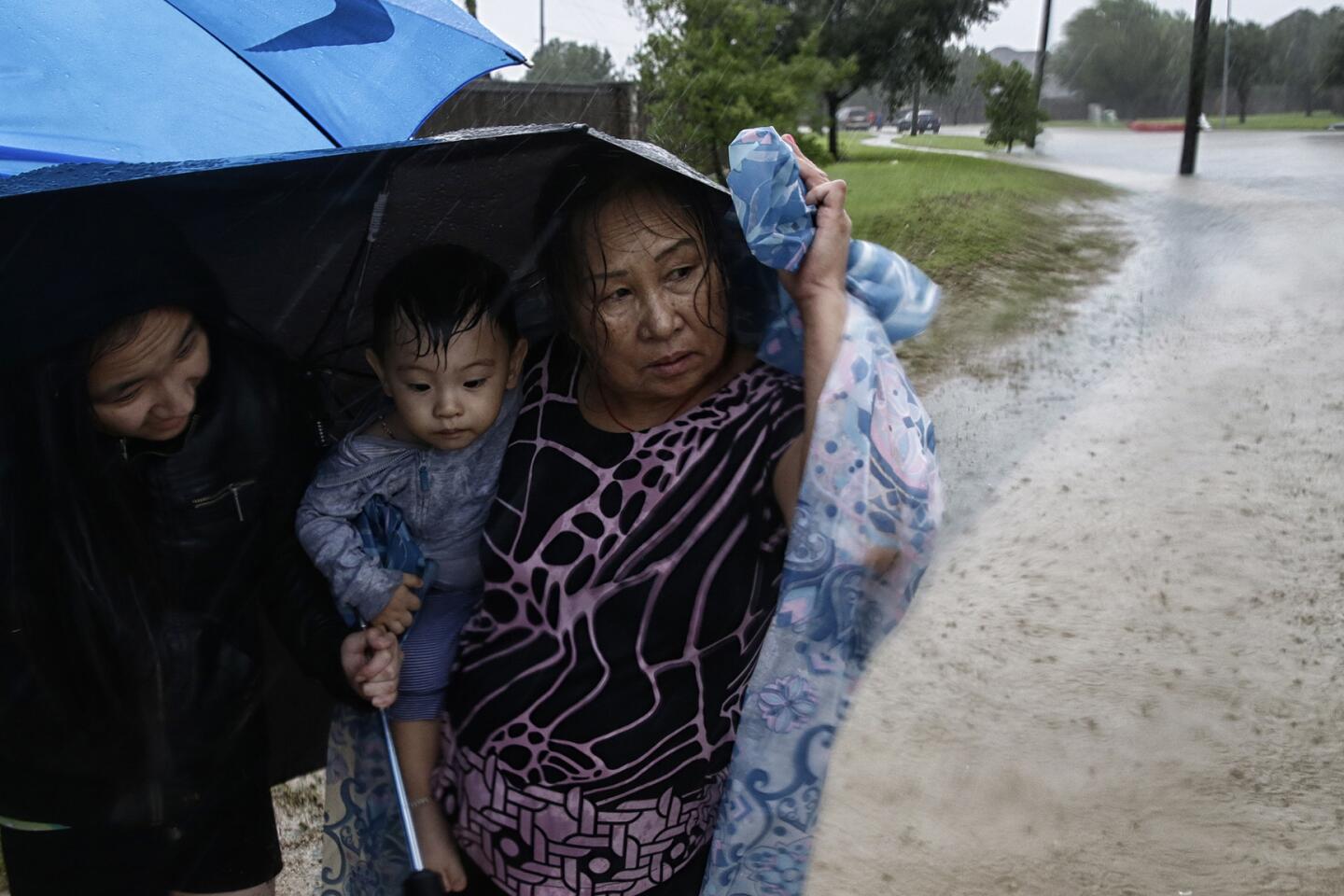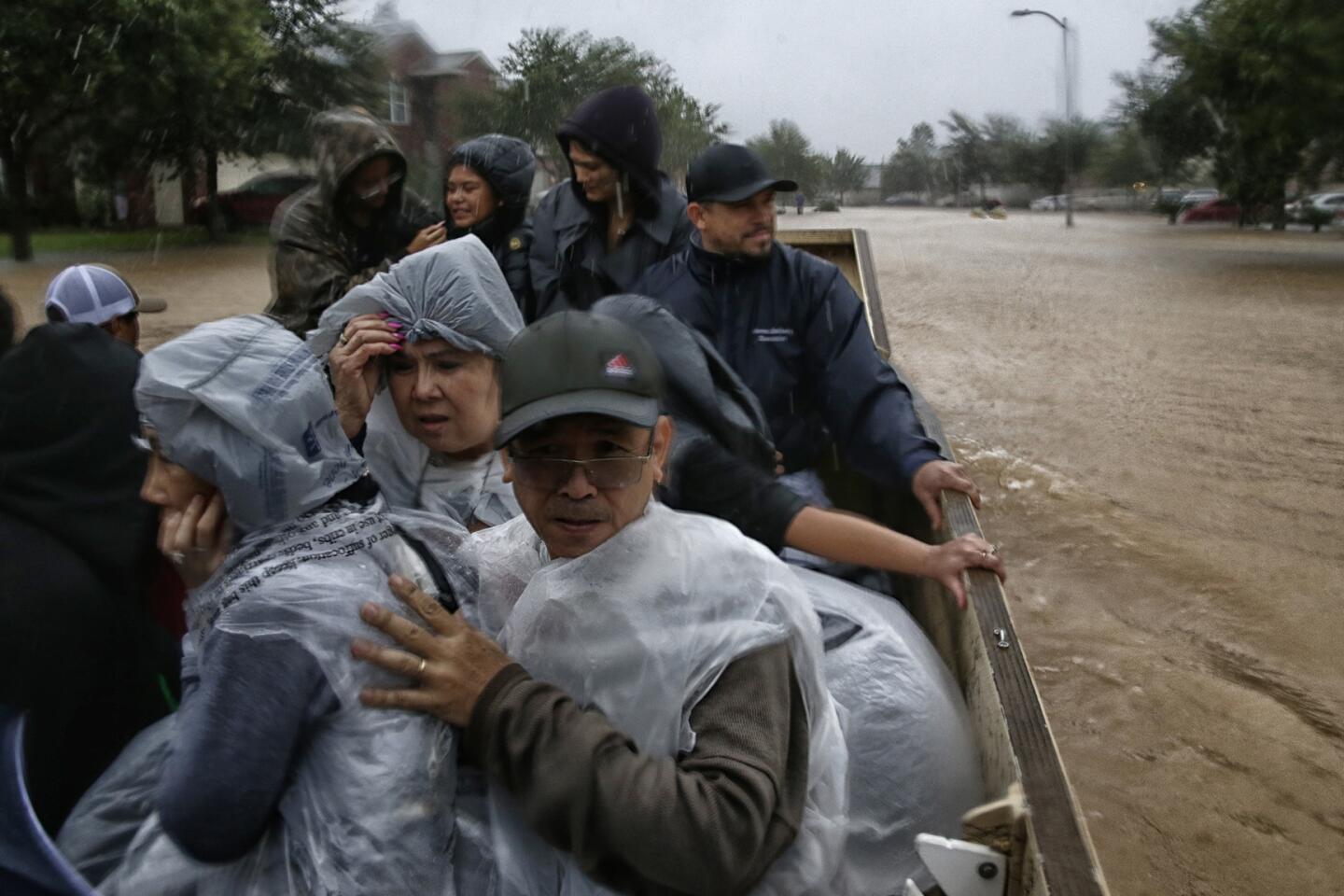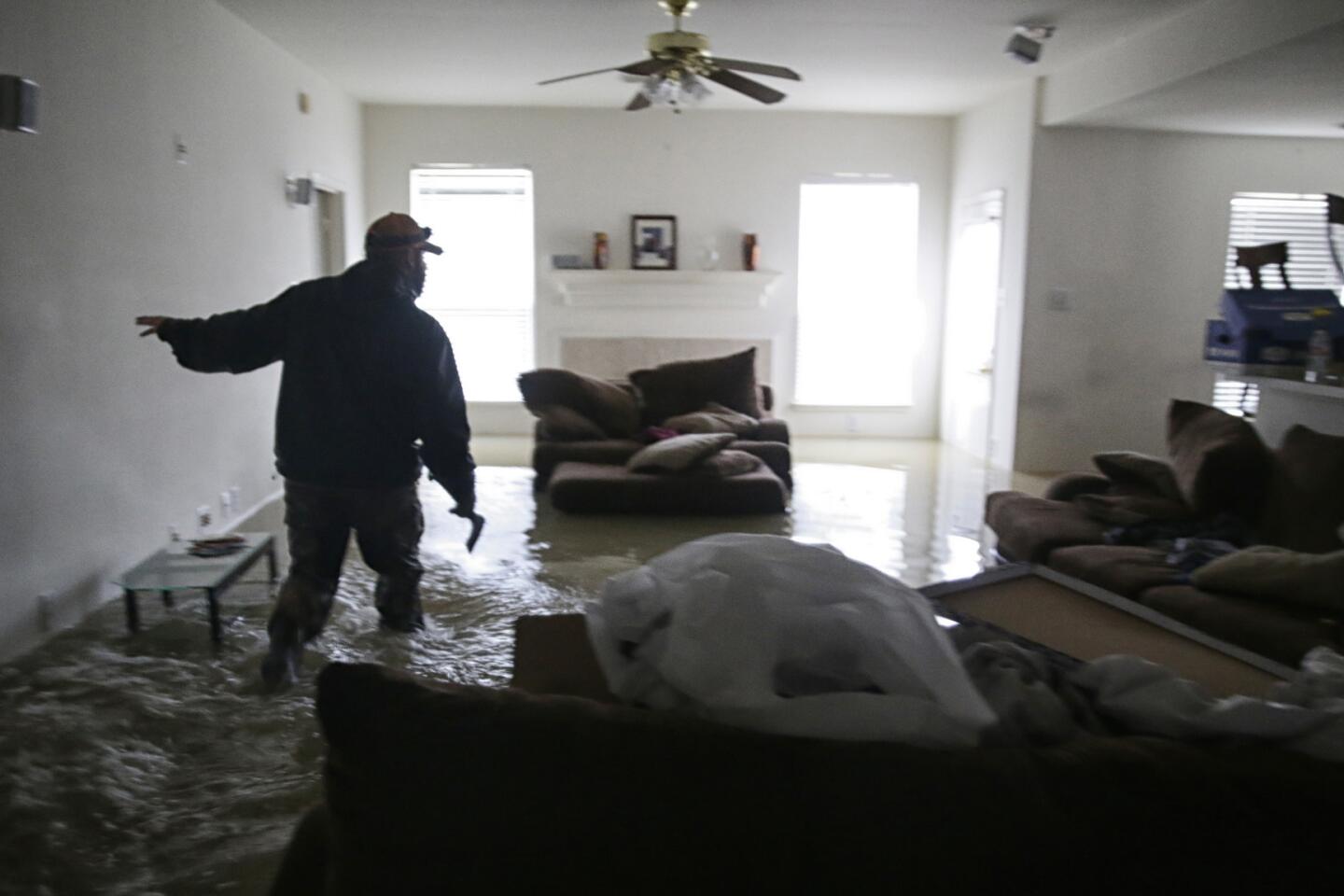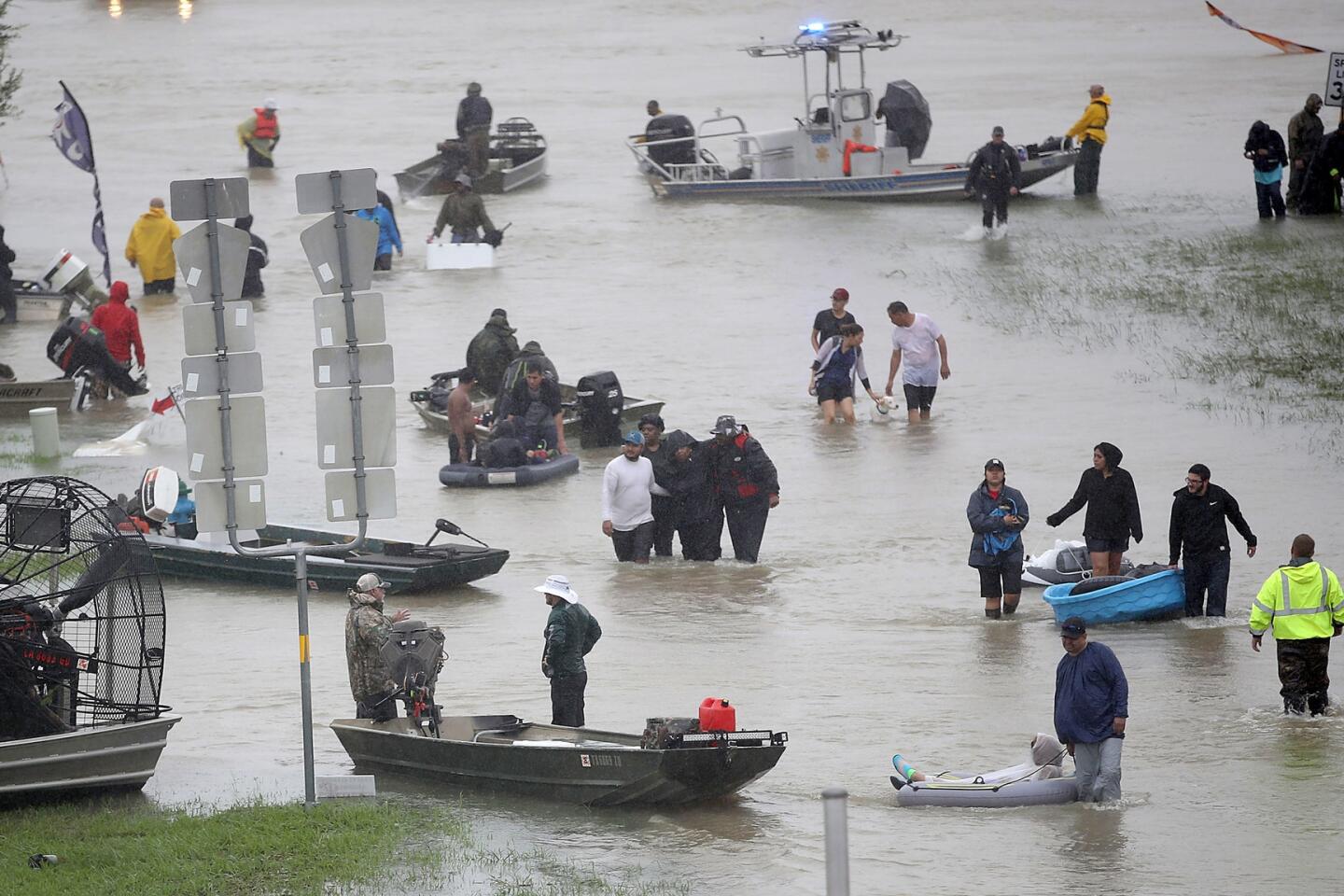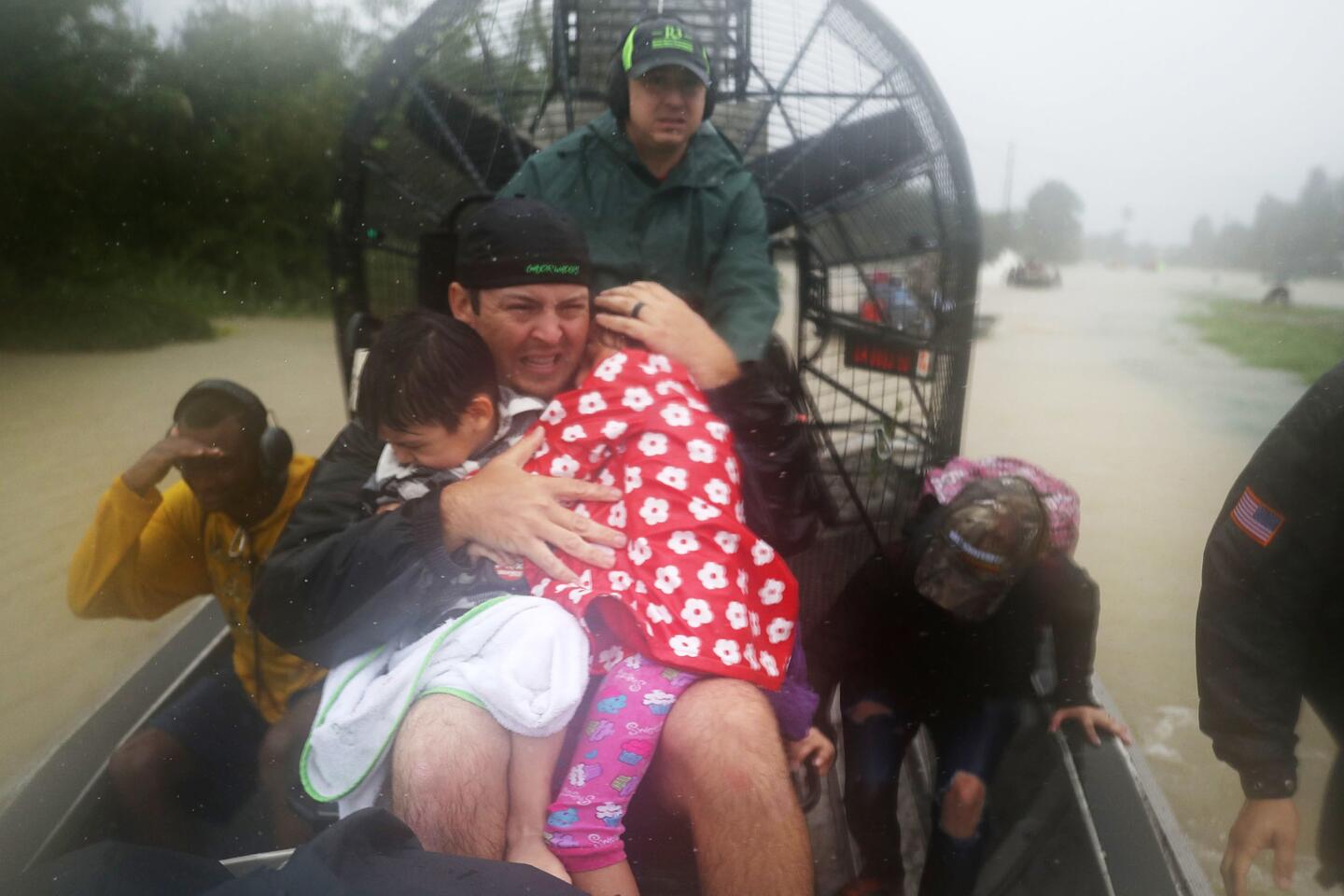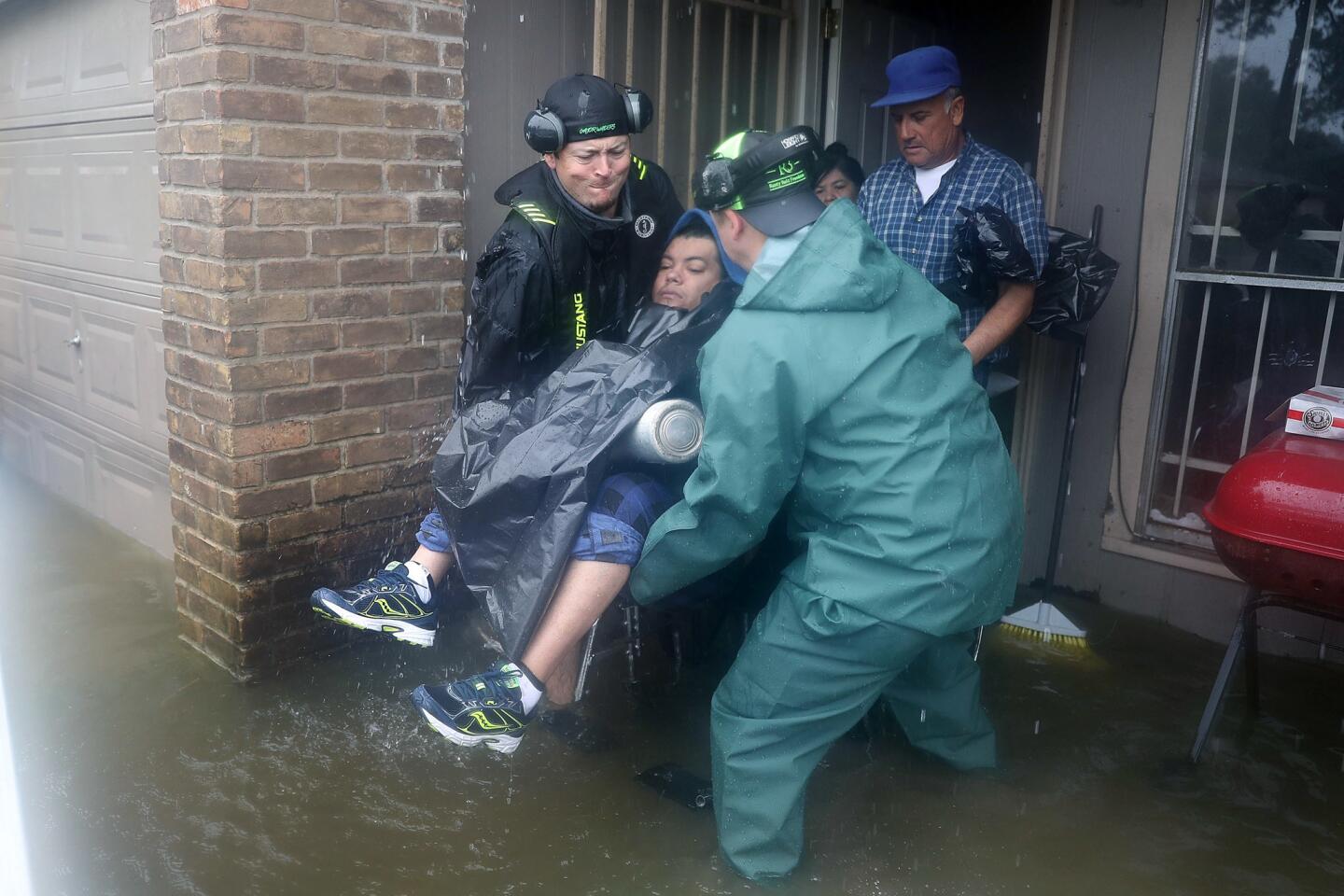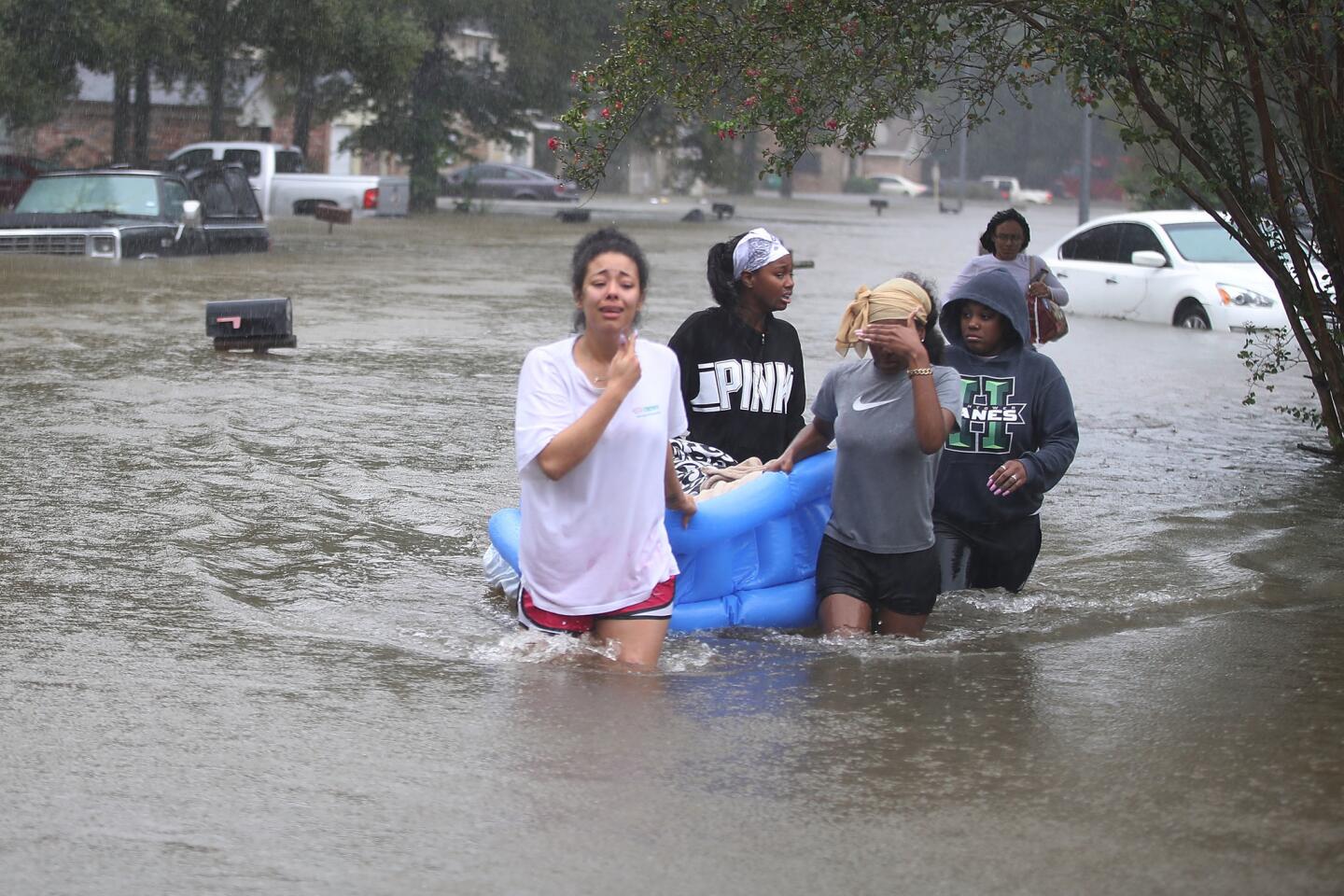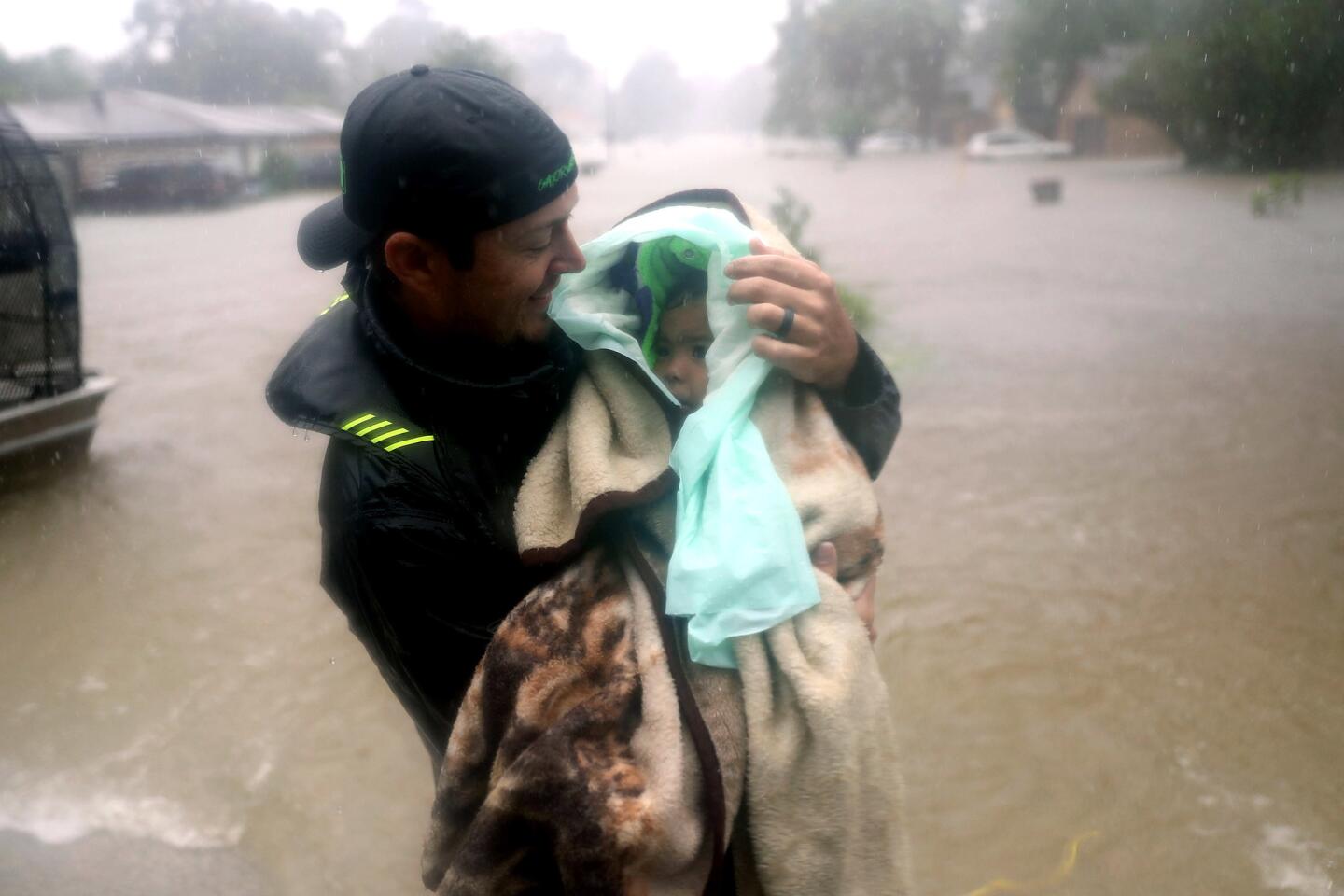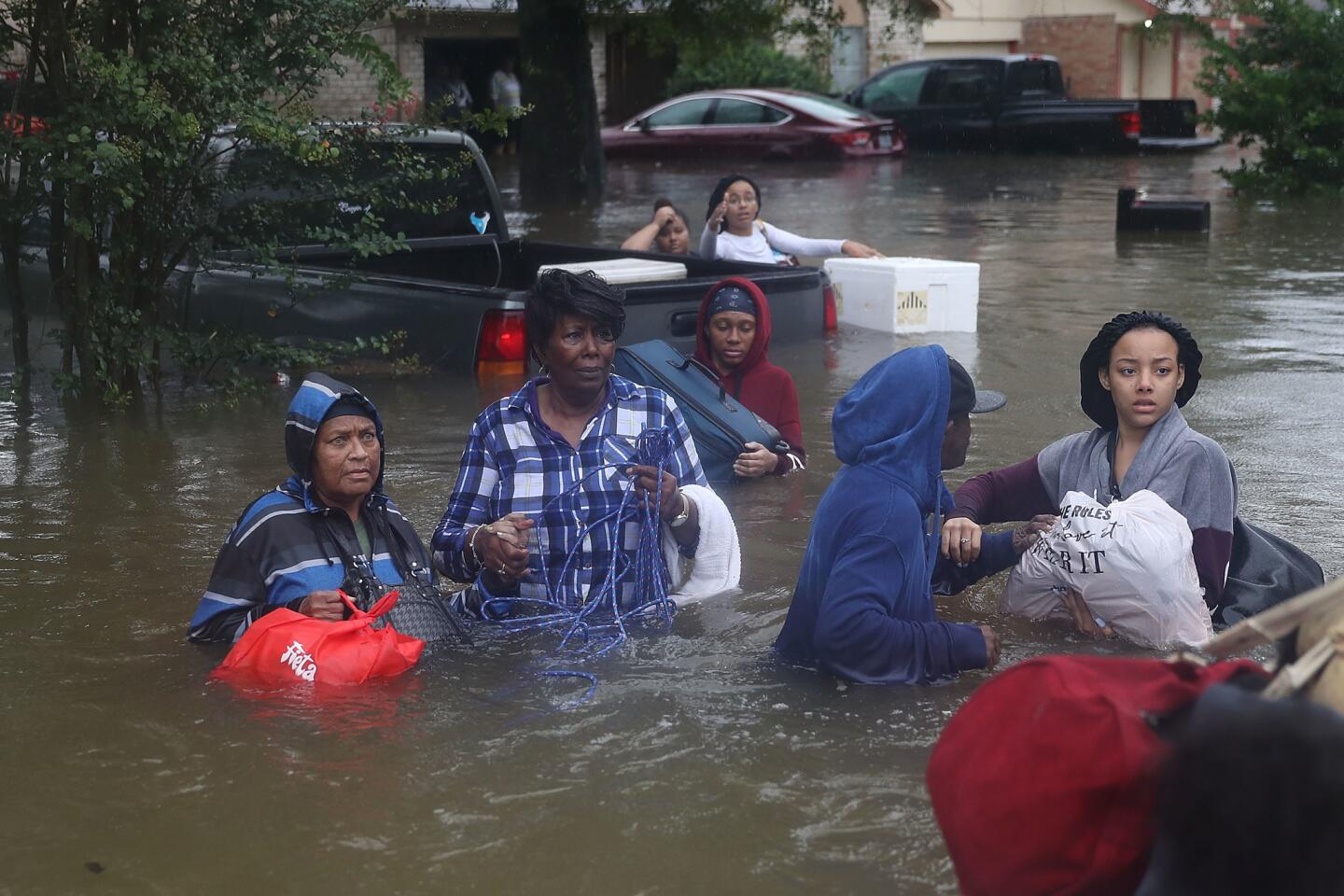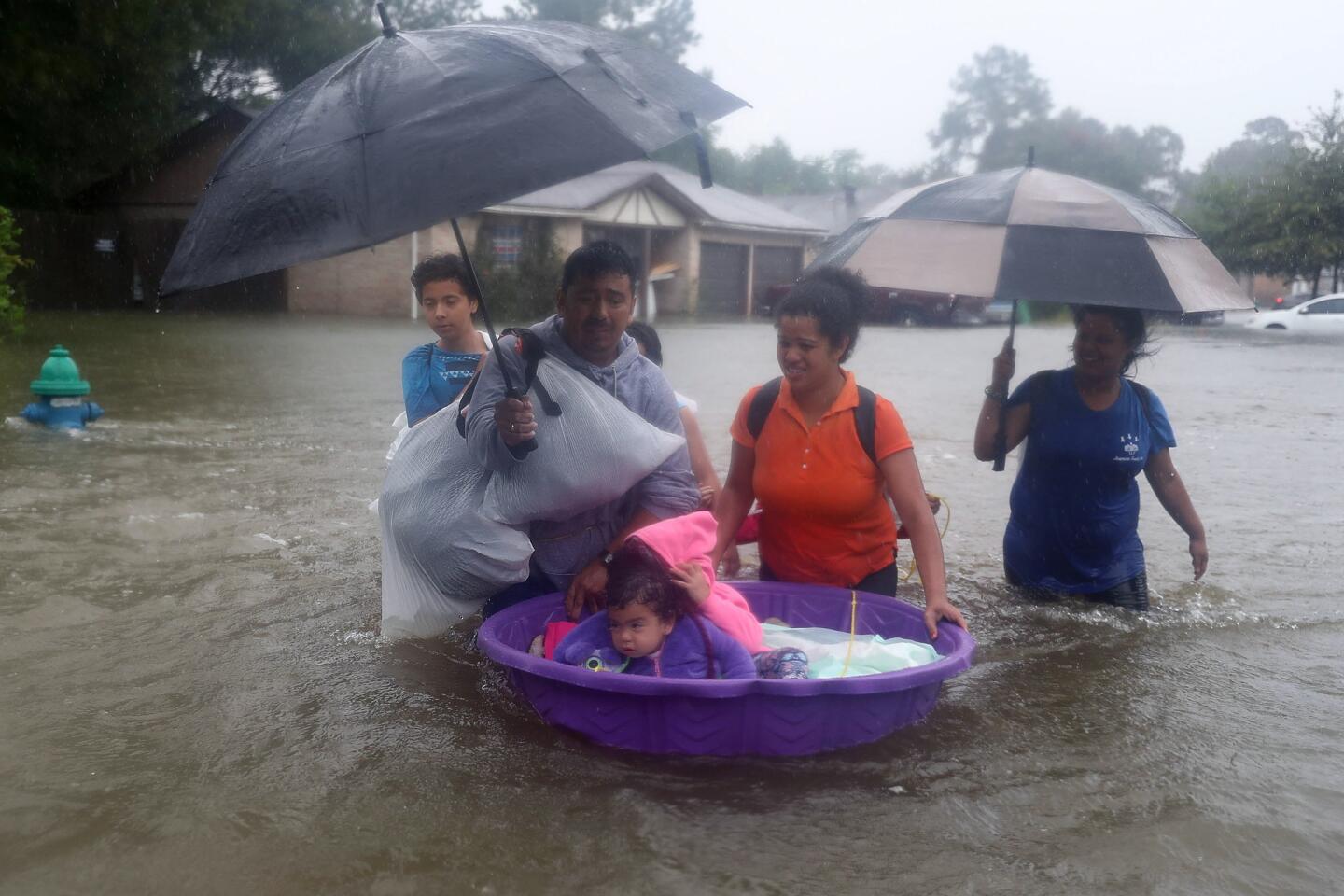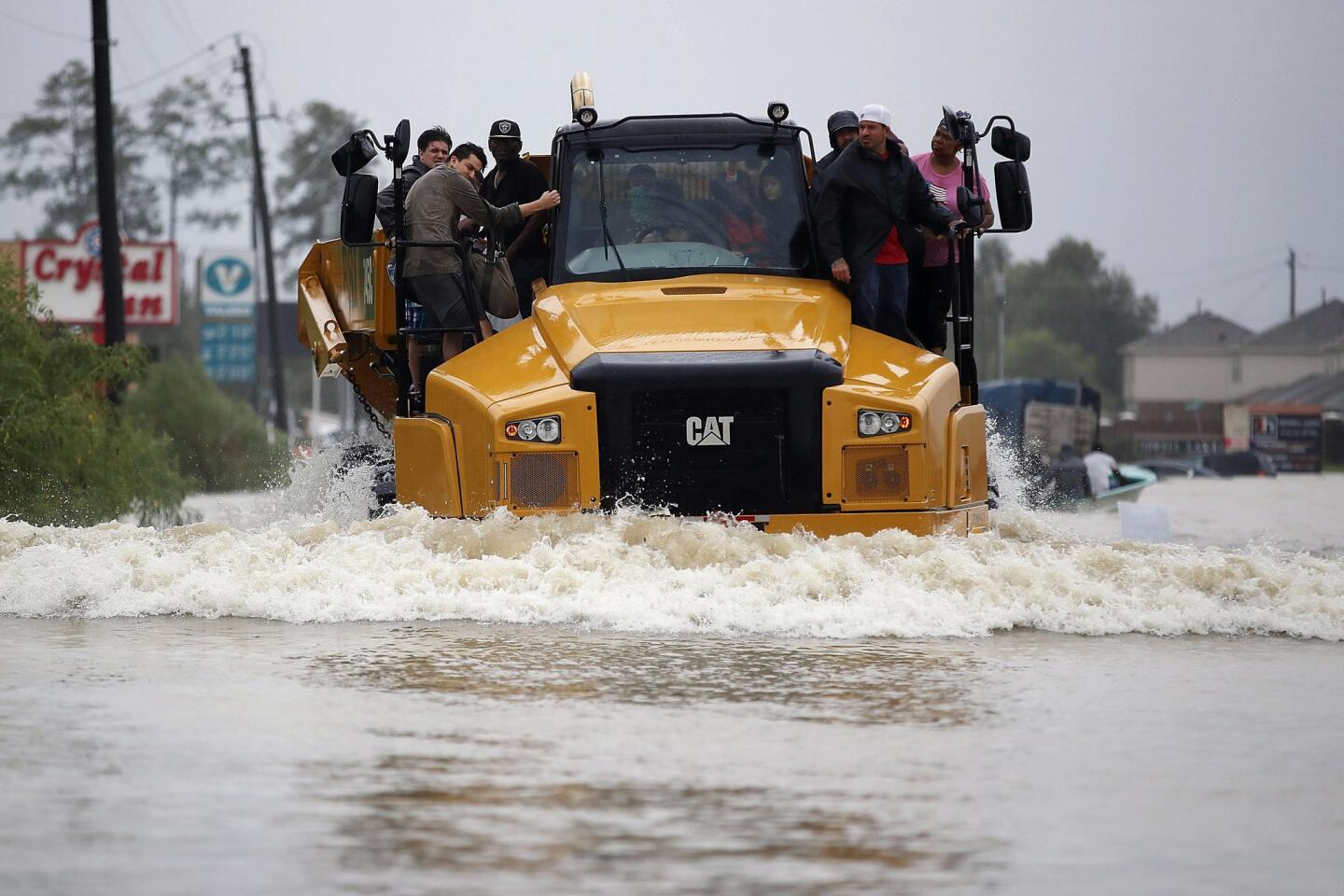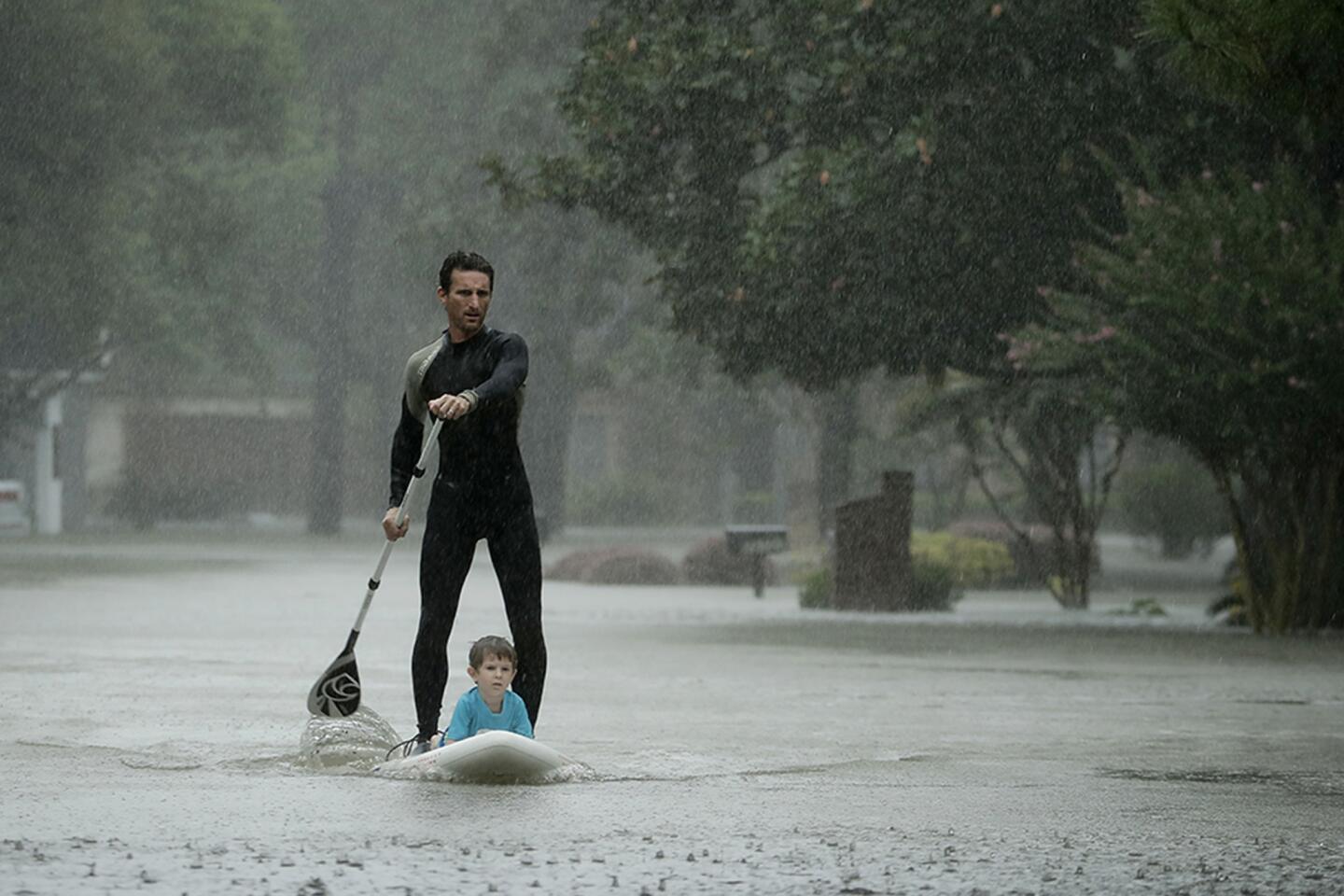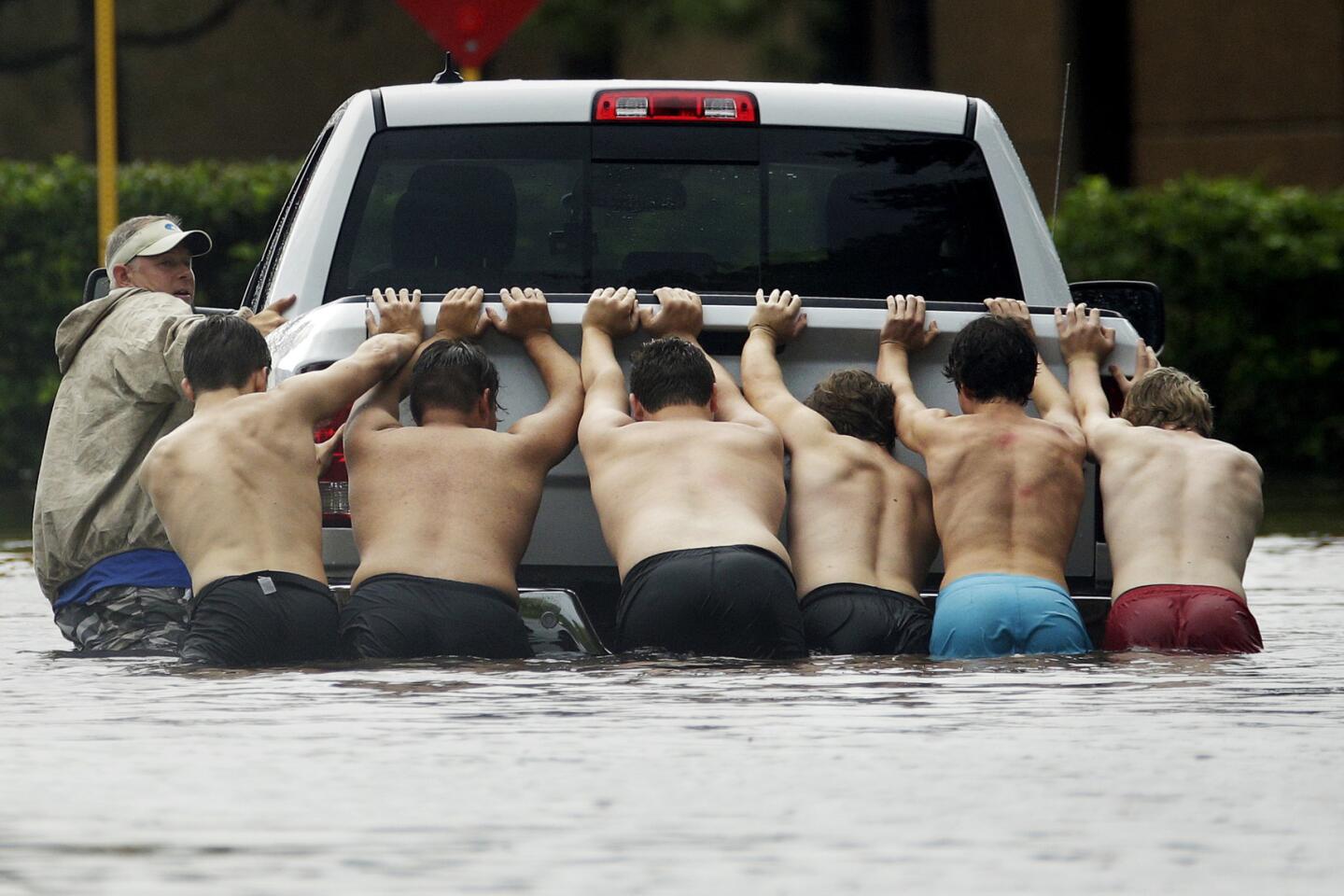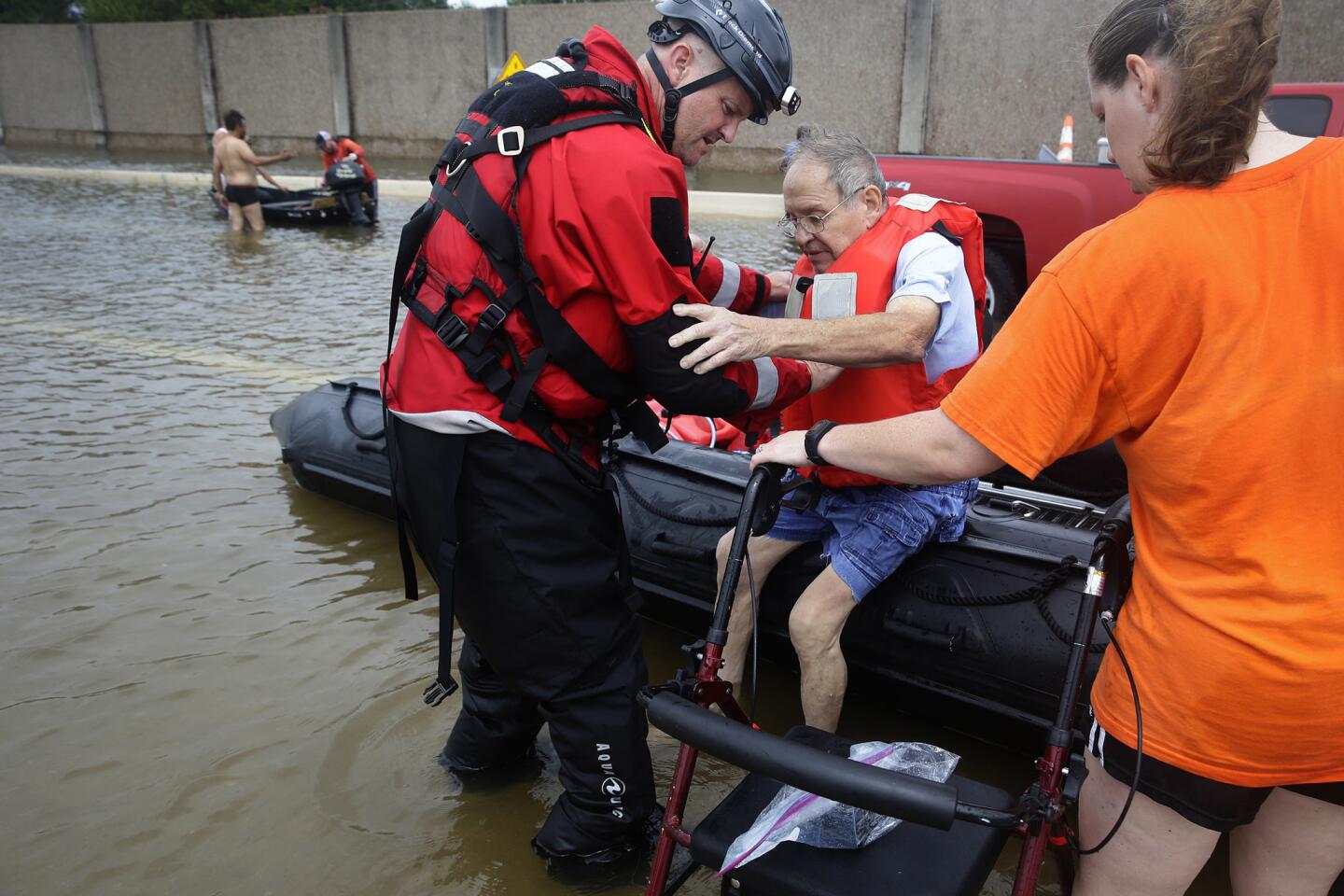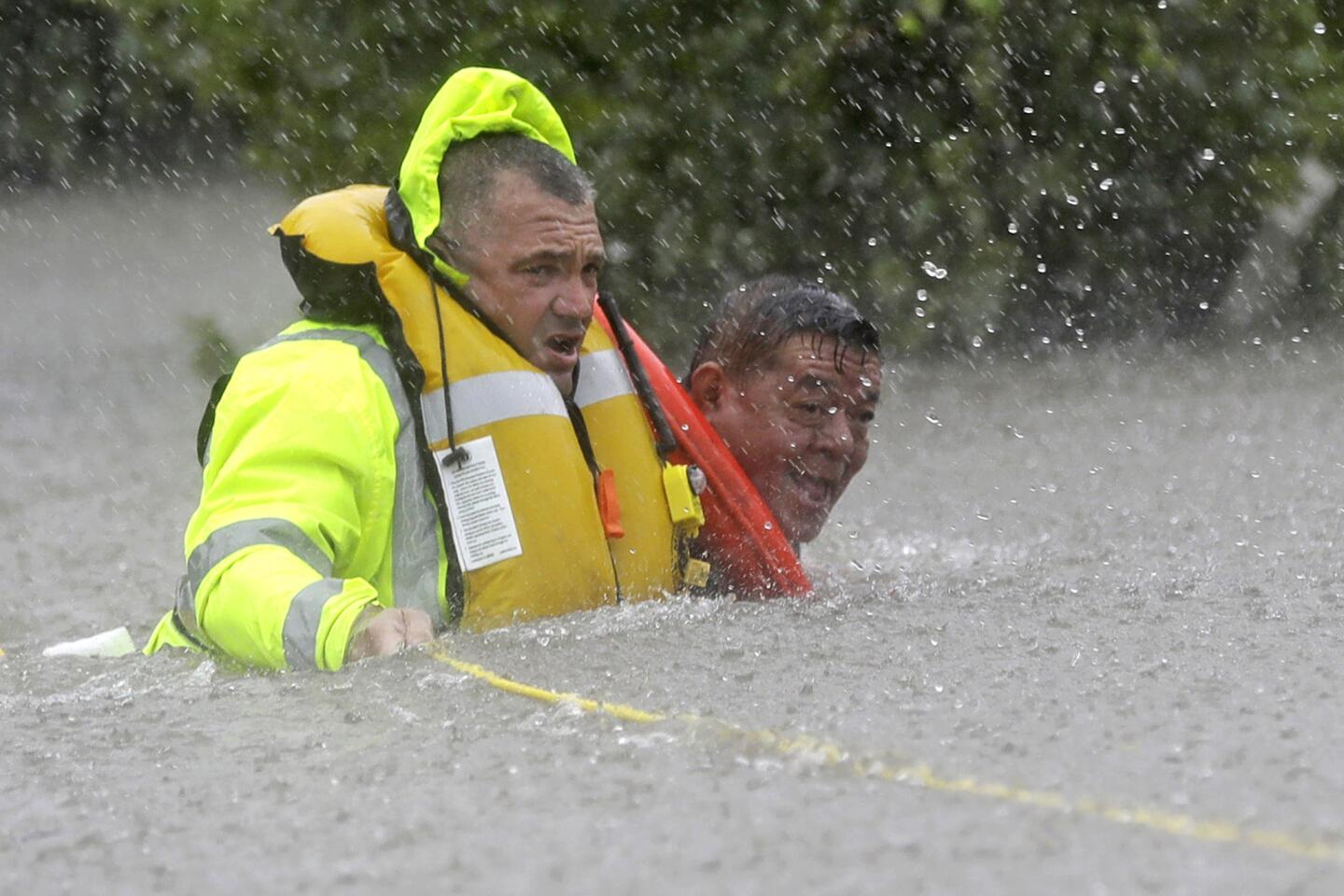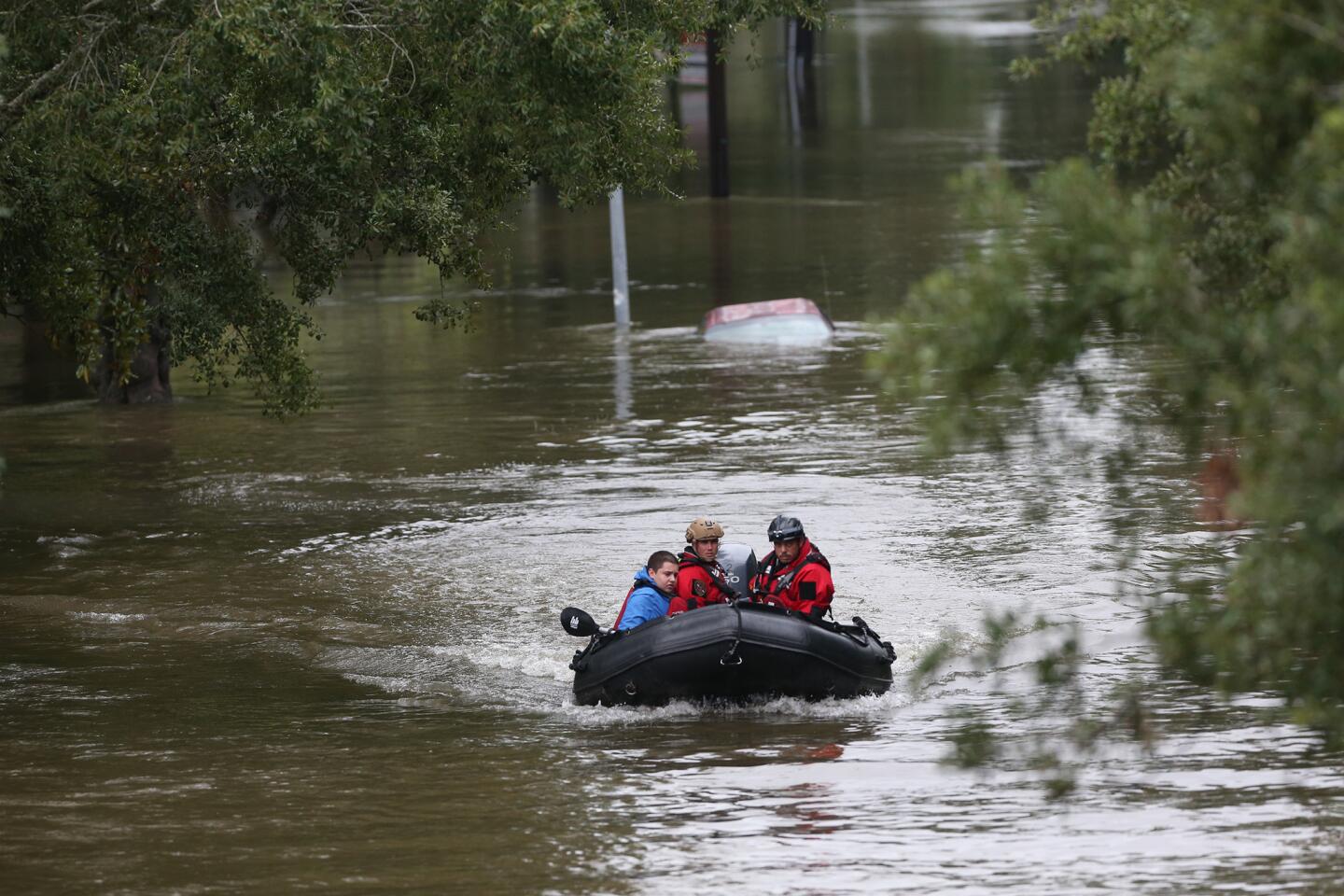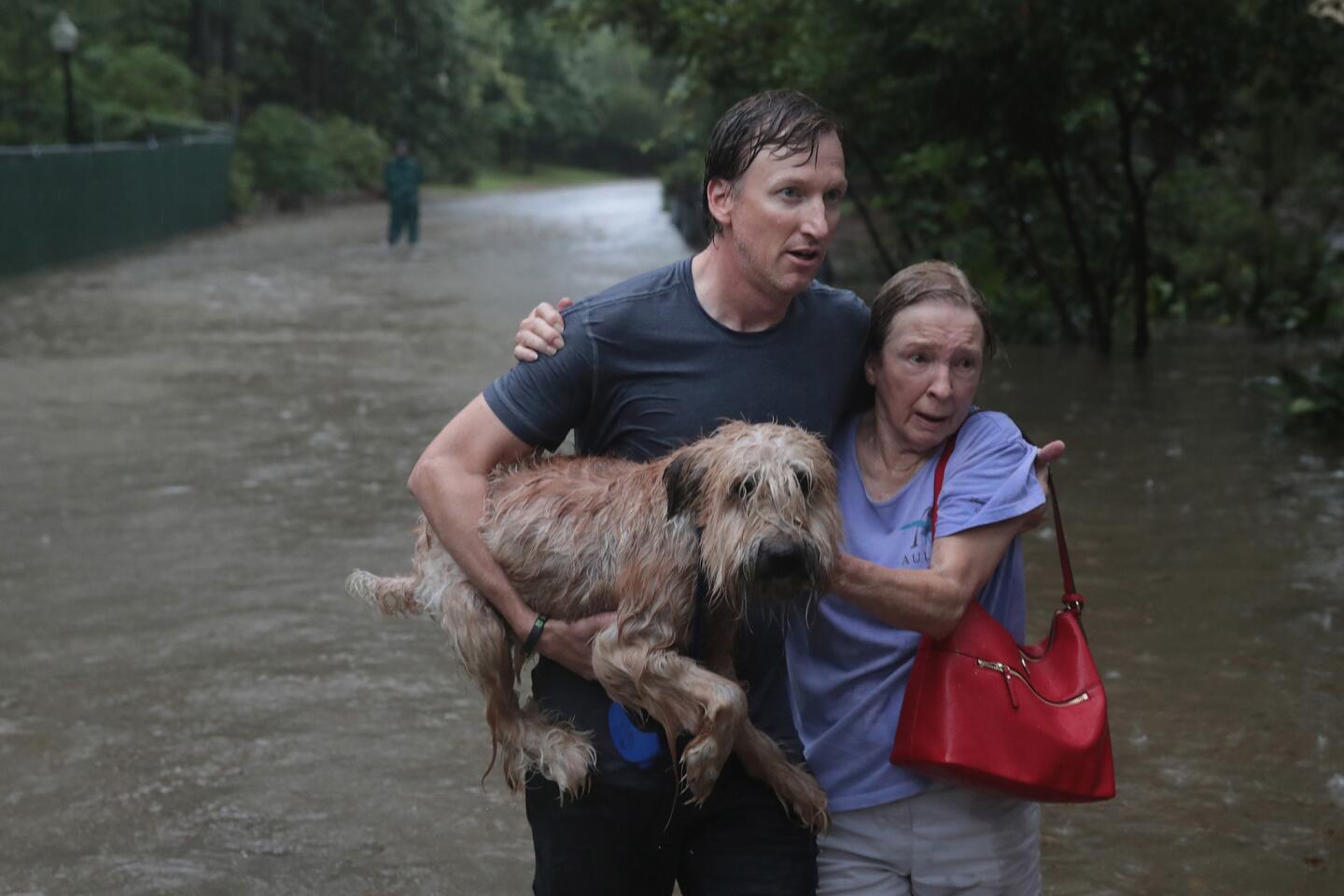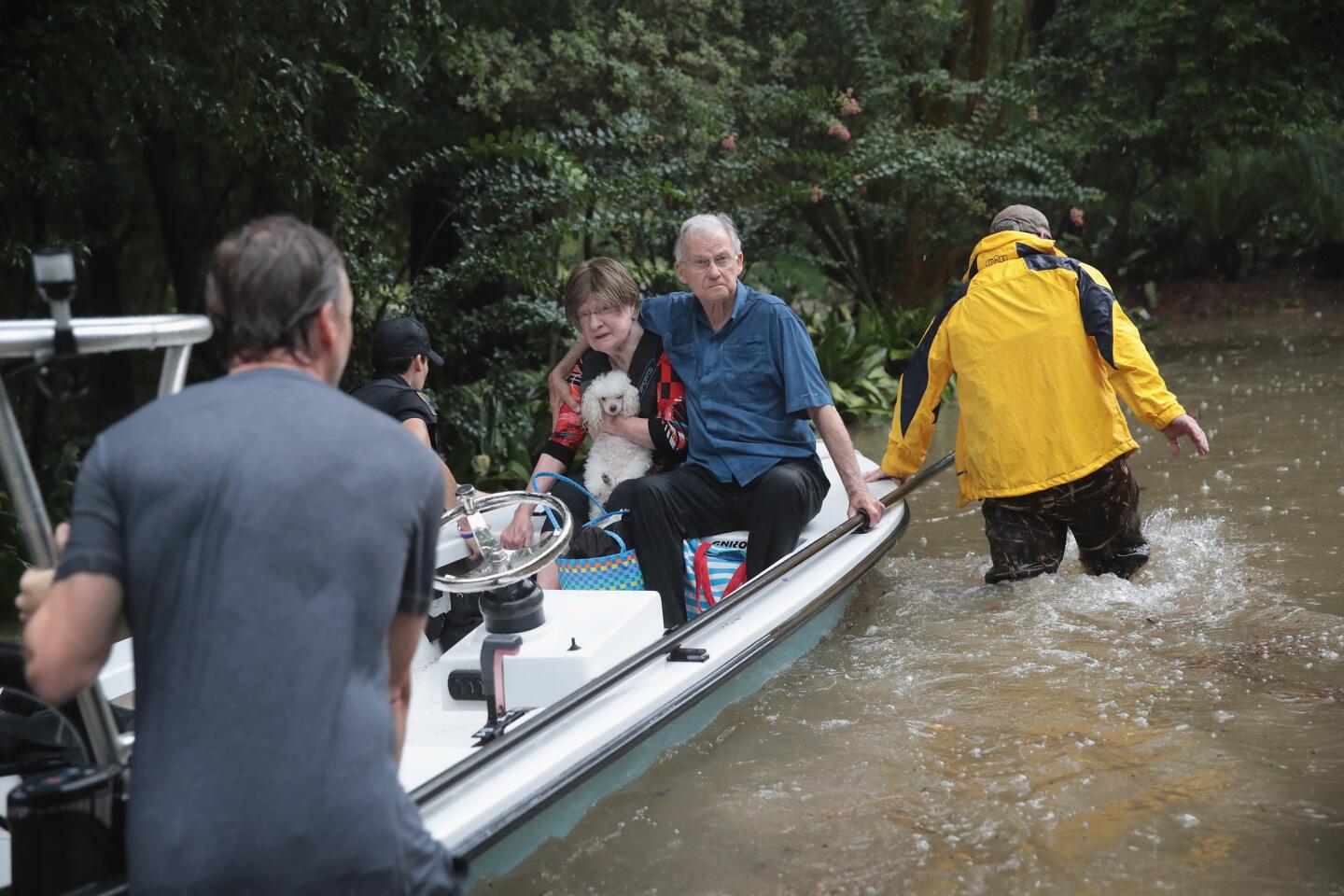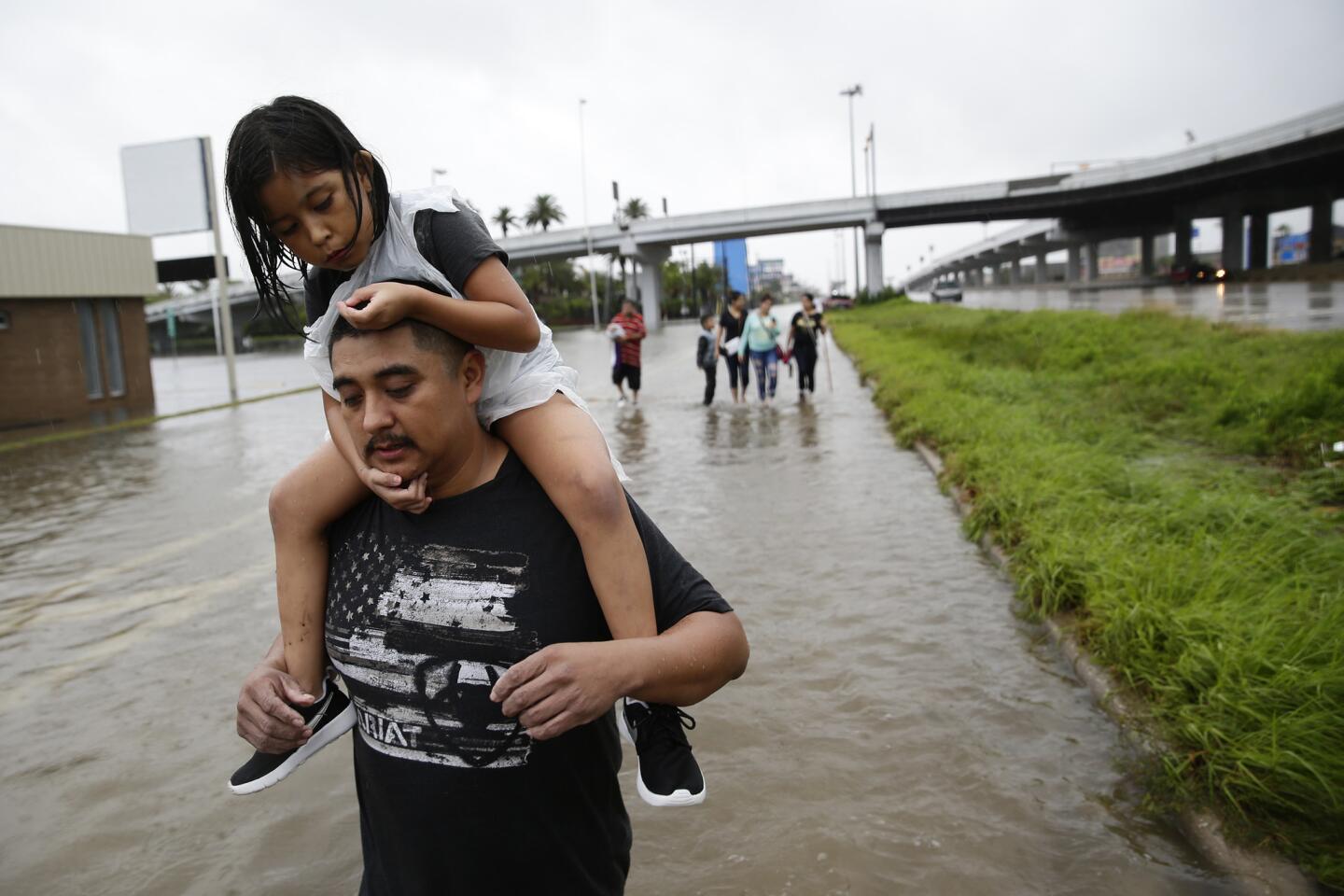Here’s what we know about Tropical Storm Harvey: Rain, flooding and people needing rescue
Residents and rescue workers across Texas on Friday coped with the massive floodwaters left behind by Tropical Storm Harvey. The storm broke the record for rainfall on the U.S. mainland on Tuesday.
Some areas of Houston have seen over 50 inches of rain — more than they usually receive in a year. The Mont Belvieu industrial suburb east of Houston recorded 51.12 inches, breaking the previous record for a single storm of 48 inches in Medina, Texas, during Tropical Storm Amelia in 1978.
The death toll rose to 31 as of Thursday night, according to authorities.
Nearly a half million people are likely to seek federal aid, U.S. officials said.
Harvey is now being estimated to be the second-costliest natural disaster in U.S. history, trailing only the devastation caused by Hurricane Katrina in 2005.
The storm slammed onto shore Aug. 25 as a Category 4 hurricane and powered its way north of Corpus Christi. It weakened Saturday to a tropical storm, but officials cautioned catastrophic flooding continues across southeast Texas.
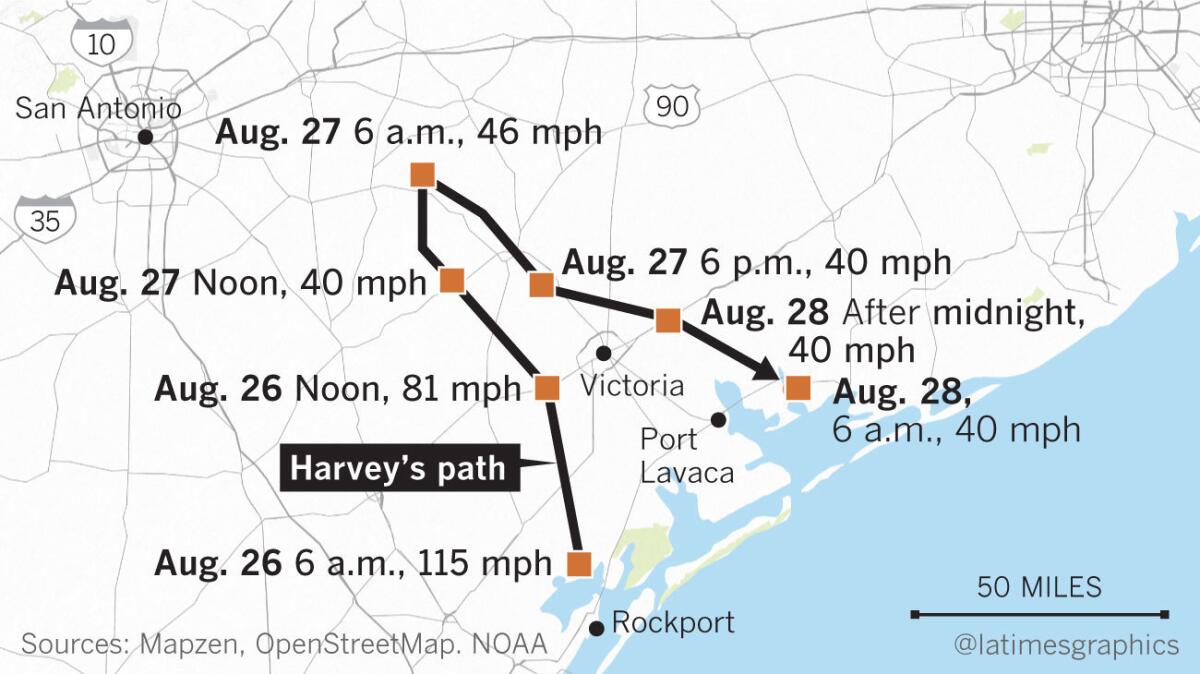
Harvey makes its second landfall
Early Wednesday morning, Harvey made its second landfall near Cameron, La.
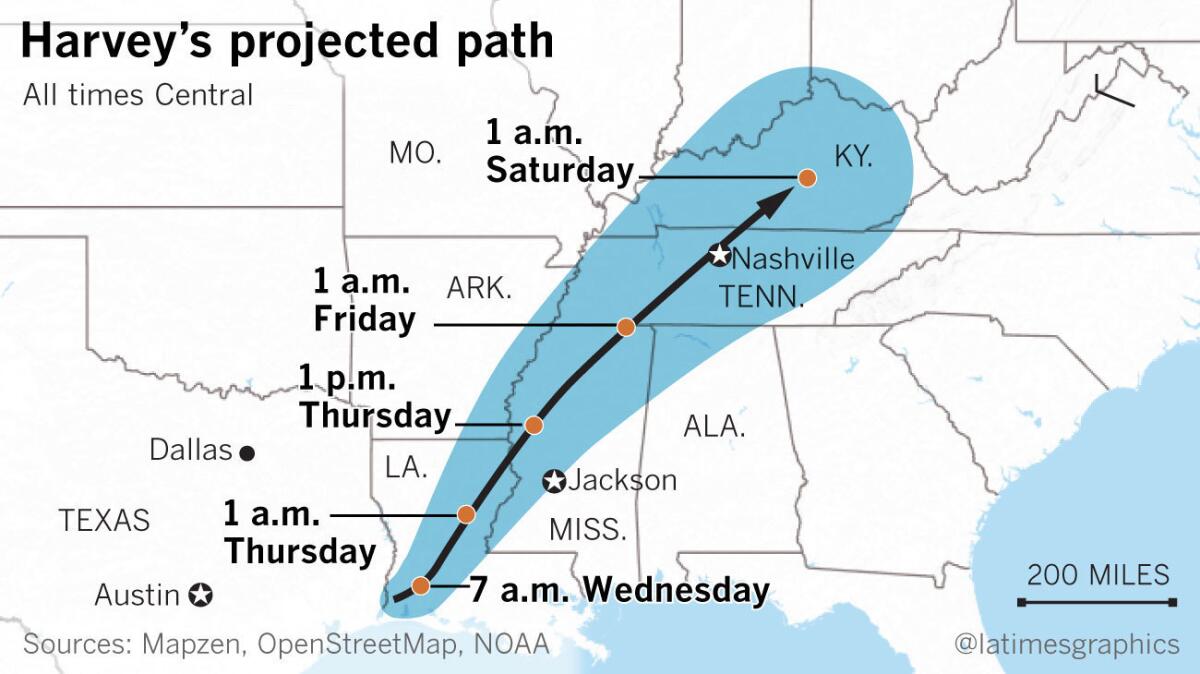
Though the worst of the storm was over and skies were clear over much of Texas, forecasters said Friday morning that parts of Kentucky could receive more than four inches of rain from Harvey's remnants over the next 24 hours.
In Texas, about 70% of Harris County's 1,777 square miles was covered with 1.5 feet of water at some point after the deluge, flooding about 136,000 buildings, county officials said Friday.
The U.S. Army Corps of Engineers opened two swollen flood-control reservoirs early Monday. The Corps said it needed to undertake a controlled release of water from the Addicks and Barker reservoirs to limit the scope of the disaster.
However, flood control officials reported Tuesday morning that water was beginning to seep over the top of the Addicks Reservoir spillway, the first time water had breached the dam.
Even with the controlled release, the reservoirs were rising at a rate of 4 inches an hour, said Edmund Russo, deputy district engineer for programs and project management for the Army Corps of Engineers Galveston District.
“It could create additional problems, additional flooding,” Houston Mayor Sylvester Turner said at a news conference Monday. “People who were not in a crisis state yesterday may find themselves in a crisis state today.”
In Brazoria County, south of Houston, the Brazos River was beginning to overflow its banks. On Tuesday morning, a levee breached in the Columbia Lakes neighborhood, prompting county officials on Twitter to warn residents, “GET OUT NOW!!”
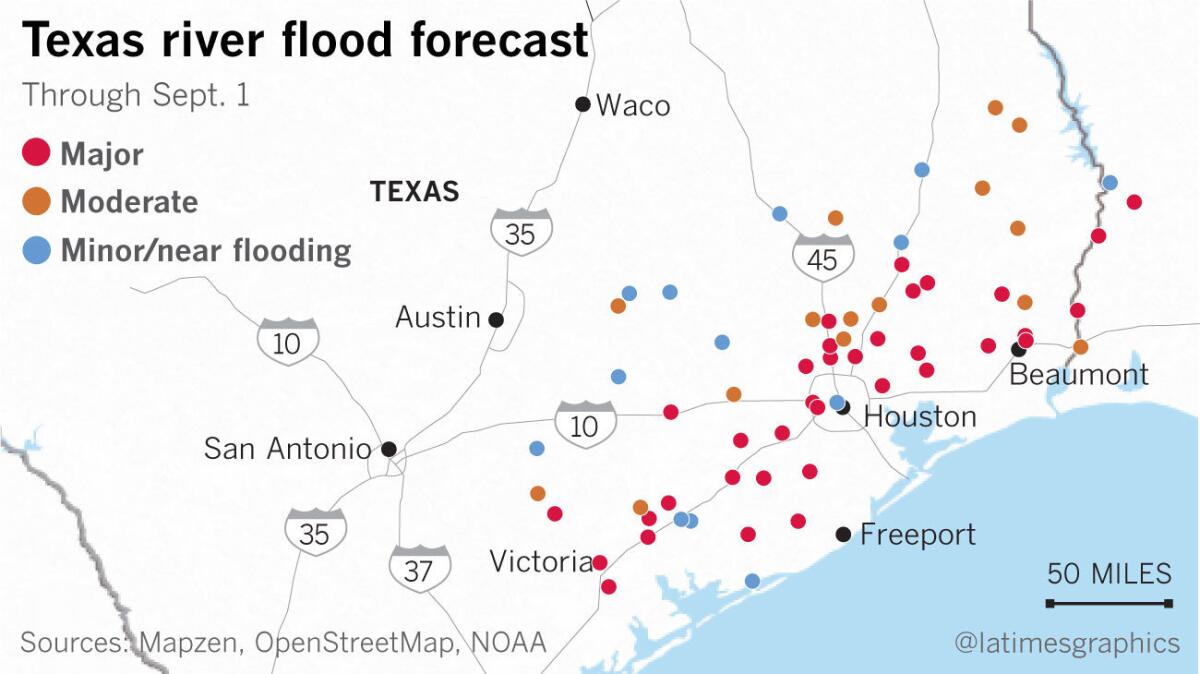
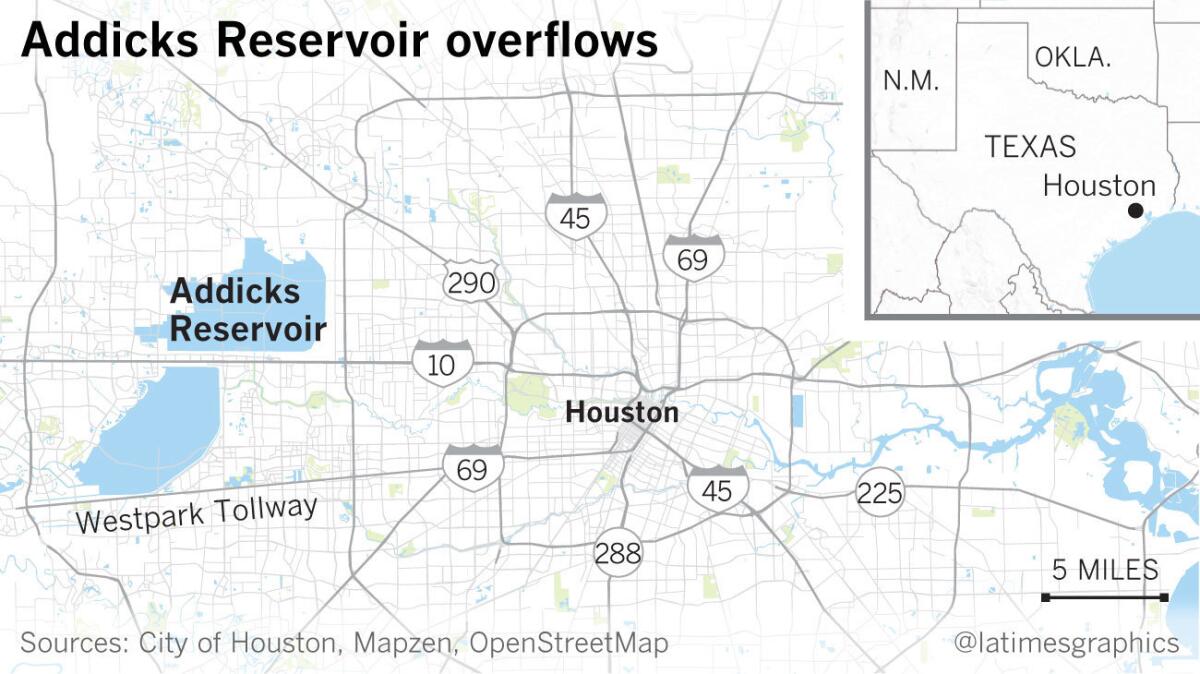
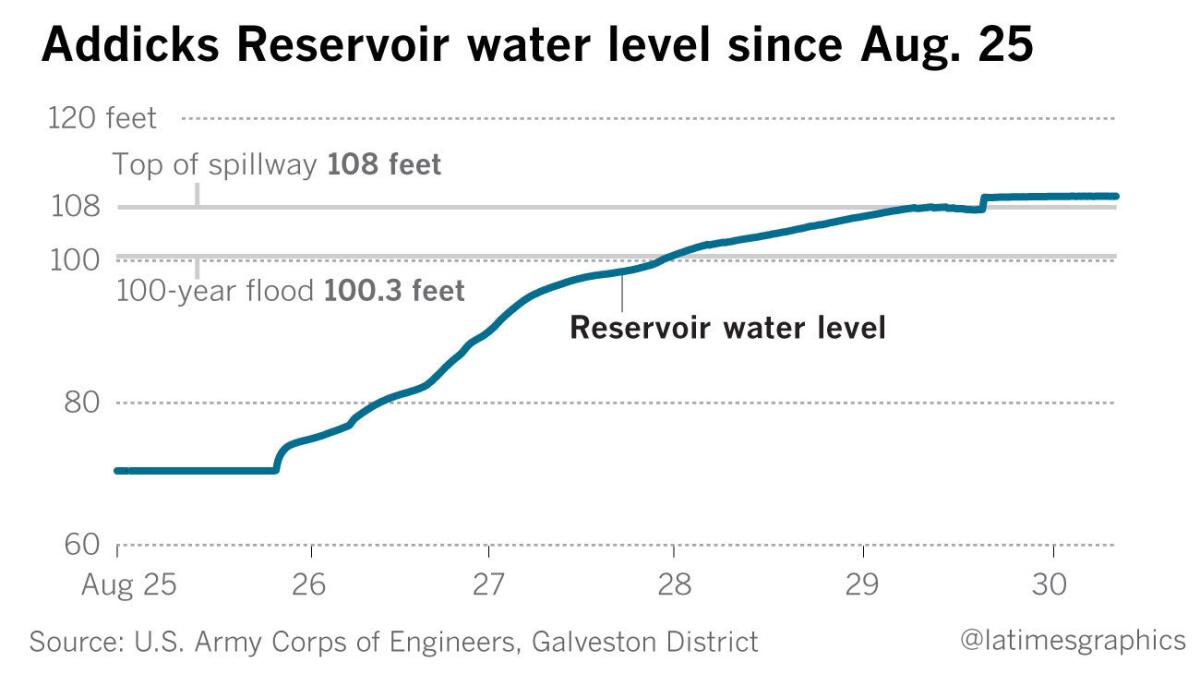
People are stranded
More than 30,000 people in Houston and across the Gulf Coast sought temporary shelter.
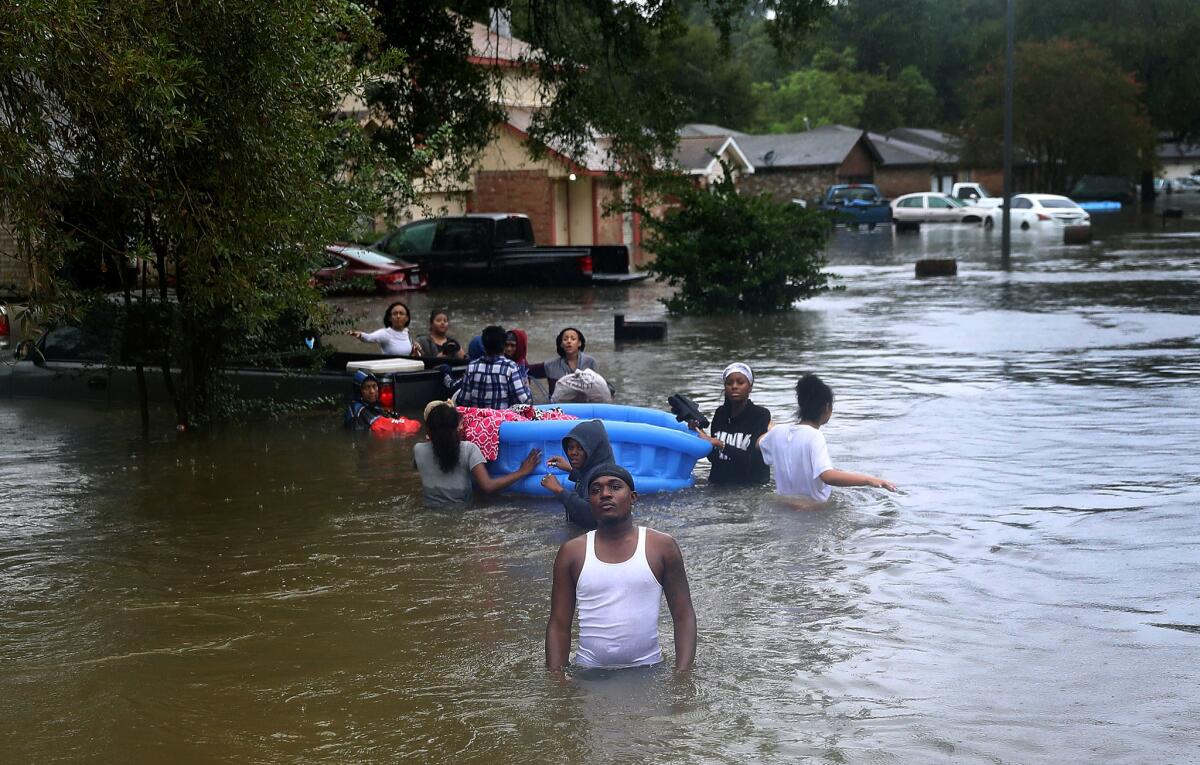
Others remained trapped inside their homes, as entire neighborhoods were submerged.
The full scope of devastation was not immediately clear. Debris and floodwater covered roads across small towns and inner-city neighborhoods, in some cases blocking access for emergency crews.
No evacuation order was issued for Houston ahead of the storm, even for those in low-lying areas prone to flooding.
On Tuesday, local authorities reported a man in Montgomery County, north of Houston, drowned Monday night while trying to swim across a flooded road. In Galveston County, Clear Creek Independent School District reported that a former track and football coach had died in the flooding.
By Tuesday night, the Harris County Institute of Forensic Sciences updated its storm-related deaths to include an 89-year-old woman, Agnes Stanley, who was found floating in 4 feet of floodwater in a home. Another woman, 76, was discovered floating in water near a vehicle. Her name was not released. A 45-year-old man, Travis Lynn Callihan, left his vehicle and fell into floodwater. He was taken to a hospital, where he died Monday.
Officials in Harris County, which includes Houston, had already reported at least six “potentially storm-related” fatalities. A 60-year-old woman died in Porter, a small community north of Houston, when a large oak tree fell on her mobile home. Another person died in the small coastal town of Rockport, near where Harvey made landfall. A 52-year-old homeless man was found dead in La Marque, a small city near Galveston.
Local officials were also looking into reports that a family of six — four children and their great-grandparents — drowned Sunday near Greens Bayou in east Houston. Virginia Saldivar, 59, said her brother-in-law, Sam, was driving her grandchildren and her husband’s parents to higher ground when the current swept up the van.
Houston Police Chief Art Acevedo broke down in tears Tuesday as he announced that Sgt. Steve Perez had drowned during the weekend after trying to get to work through an underpass in the darkness.
“He laid down his life,” Acevedo said during a news briefing, noting that before Perez left for work he told his wife, who urged him to stay home: “I've got work to do.”
In Galveston County, Clear Creek Independent School District reported that a former track and football coach had died in the floods.
Rescues are still underway
Local, state and federal authorities were continuing to work to reach those stranded by flooding.
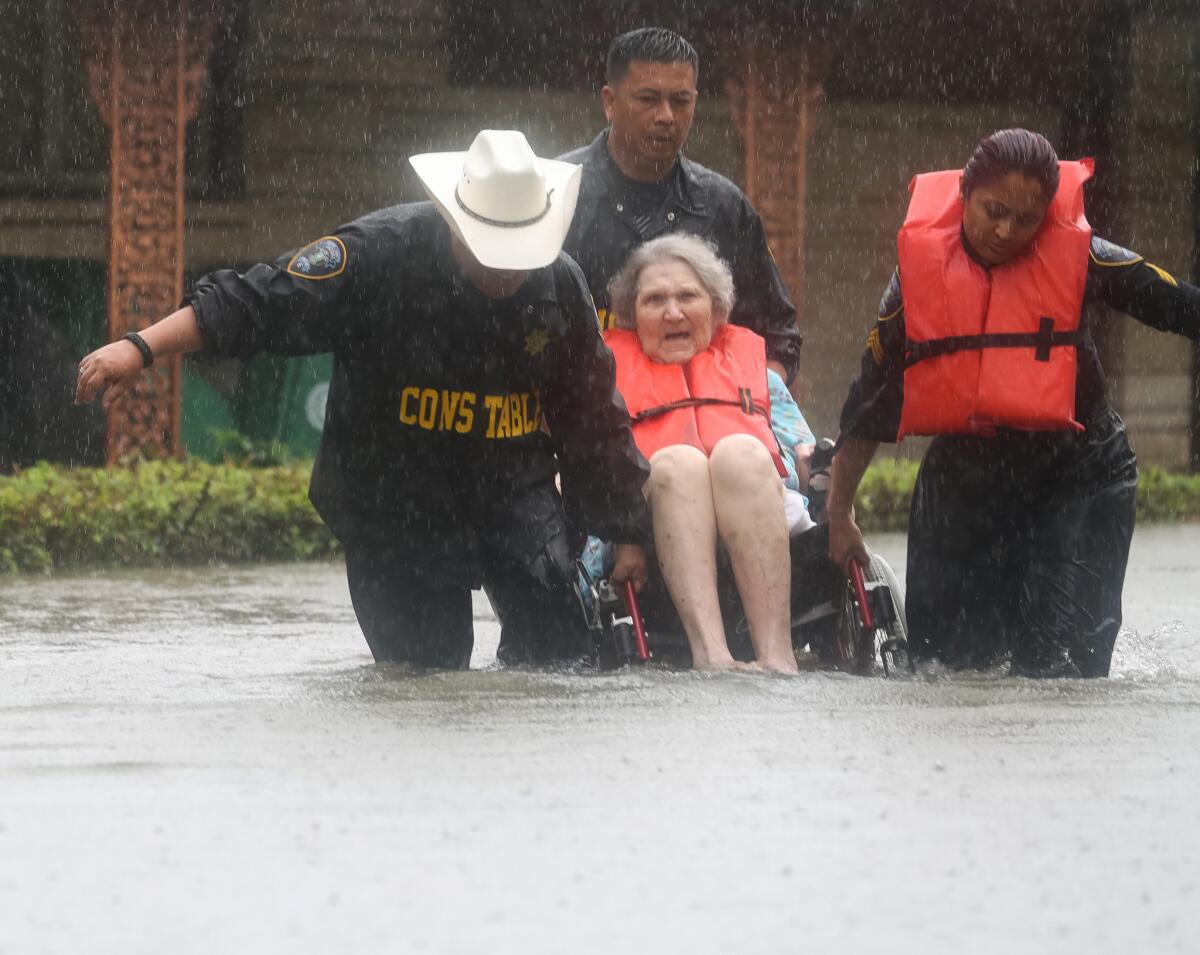
By Monday morning, Houston 911 operators had received 56,000 calls for help. A backlog that left residents hanging on the telephone, calls unanswered, was almost resolved, city officials said at a news conference.
Acevedo said Tuesday that officers had rescued 4,100 people across the city and were launching more boats in the water every hour.
Trump visits Texas
President Trump assured Texans on Monday that Congress would deliver swift federal aid. On Tuesday, he visited the storm-ravaged state, declaring, “We are here to take care of you,” and promising a “better than ever before” relief effort.

Trump first visited Corpus Christi, southwest of the worst-hit areas of Houston and its environs, and then traveled to the state capital of Austin.
There, he repeatedly praised federal, state and local officials.
“The world is watching and the world is very impressed with what you are doing,” Trump told officials at the Texas Department of Public Safety operations center in Austin who were coordinating rescue and shelter operations.
Perhaps more welcome than praise was the president’s promise of unspecified federal aid. “We are working with Congress on helping out the state of Texas; it’s going to be a costly proposition,” Trump said.
"Texas is healing fast thanks to all of the great men & women who have been working so hard," Trump tweeted on Friday. "But still, so much to do. Will be back tomorrow!"
Hurricanes of Category 3 or higher are serious
The
Hurricane Harvey made landfall as a Category 4 storm. Here’s the National Hurricane Center’s definition: With sustained winds of 130 to 156 mph, “catastrophic damage will occur: Well-built framed homes can sustain severe damage with loss of most of the roof structure and/or some exterior walls. Most trees will be snapped or uprooted and power poles downed. Fallen trees and power poles will isolate residential areas. Power outages will last weeks to possibly months. Most of the area will be uninhabitable for weeks or months.”
It’s important to know that storms can change quickly and Harvey could be upgraded or downgraded within hours.
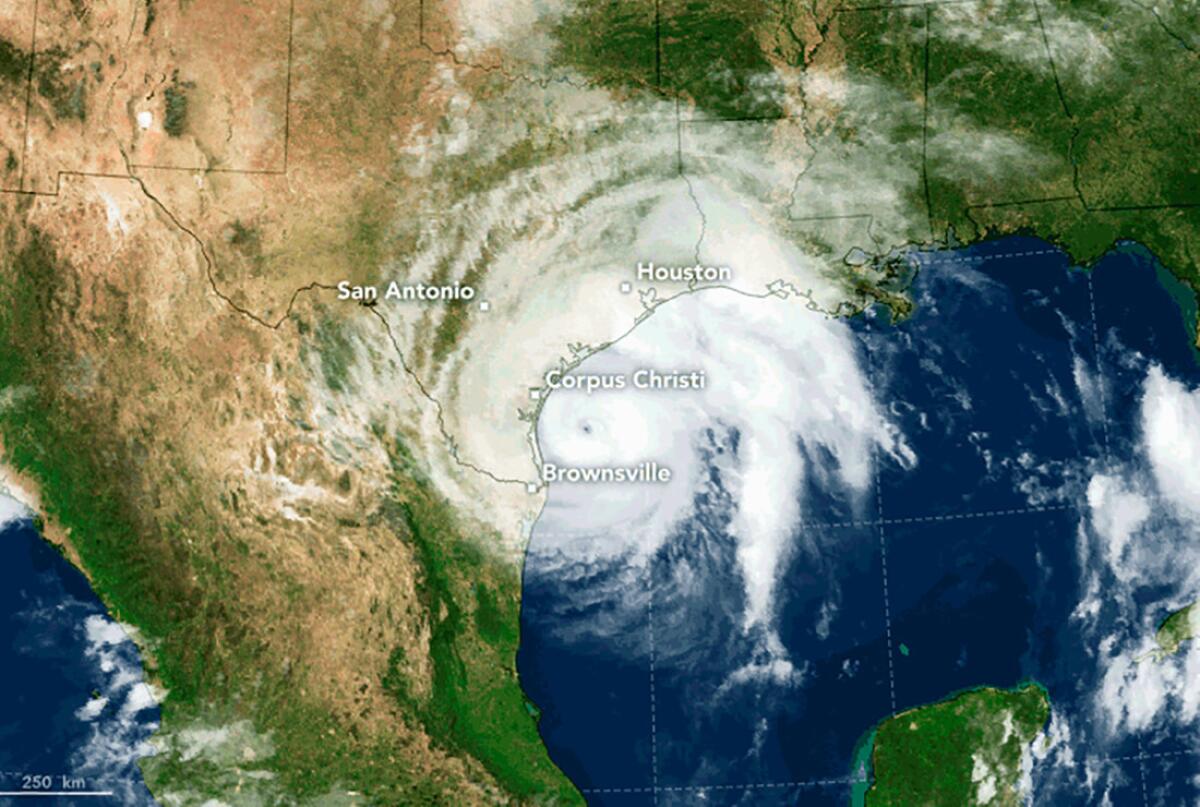
Remember Wilma?
The last Category 3 to make landfall was Hurricane Wilma, which hit South Florida in 2005. It resulted in nearly $20 billion in damage.
Meanwhile,
Here’s some perspective
The Great Galveston Hurricane of 1900 was the deadliest hurricane to ever hit the United States, leading to nearly 10,000 deaths.
When the storm made landfall in September of that year, it was a Category 4.
In 2005, Hurricane Katrina became the most expensive hurricane in U.S. history. Katrina, which had been a Category 5 storm offshore, was a Category 3 when it hit Louisiana and Mississippi, resulting in $108 billion in damage.
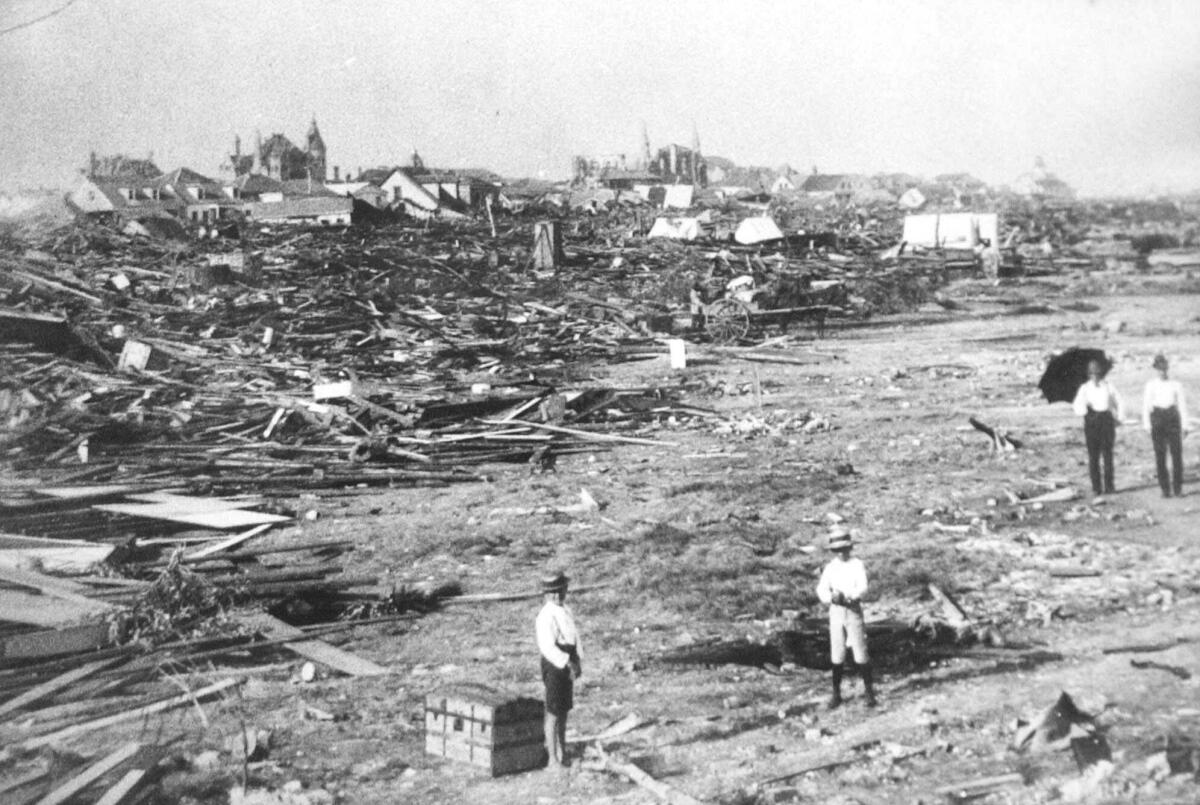
Staff writers Kurtis Lee, Sean Greene, Matt Pearce, Molly Hennessy-Fiske, Hailey Branson-Potts, Laura Nelson and special correspondent Jenny Jarvie contributed to this report
Twitter: @phila_lex
ALSO
With the Brazos River headed for an off-the-charts flood, a Texas neighborhood is on the run
Why didn't Houston evacuate before Harvey? It's not that simple
Armed with a boat, a dump truck and a school bus, this crew rescued dozens of Houston families
UPDATES:
9:45 a.m., Sept. 1: This article was updated with a new death toll, quote from the president and Harvey being estimated as the second-costliest natural disaster.
2:30 a.m., Aug. 30: This article has been updated with a new death toll and the storm’s landing in Louisiana.
6:40 p.m., Aug. 29: This article has been updated with police officer death, new figures for those in shelters, other details.
5:20 p.m. Aug. 29: This post was updated with an increased death toll, the latest forecast and information on President Trump’s visit.
7:50 p.m. Aug. 28: This post was updated with an increased death toll, the latest forecast and more information on flood control efforts and rescues.
4:15 p.m. Aug. 27: This post was updated with information about rainfall forecasts from Harvey and death toll figures.
5:10 p.m. This post was updated with information that Hurricane Harvey increased from a Category 3 to a Category 4.
This post was originally published at 11 a.m. Aug. 26.
Sign up for Essential California
The most important California stories and recommendations in your inbox every morning.
You may occasionally receive promotional content from the Los Angeles Times.
